How to Create a Market Research Proposal (+Template)
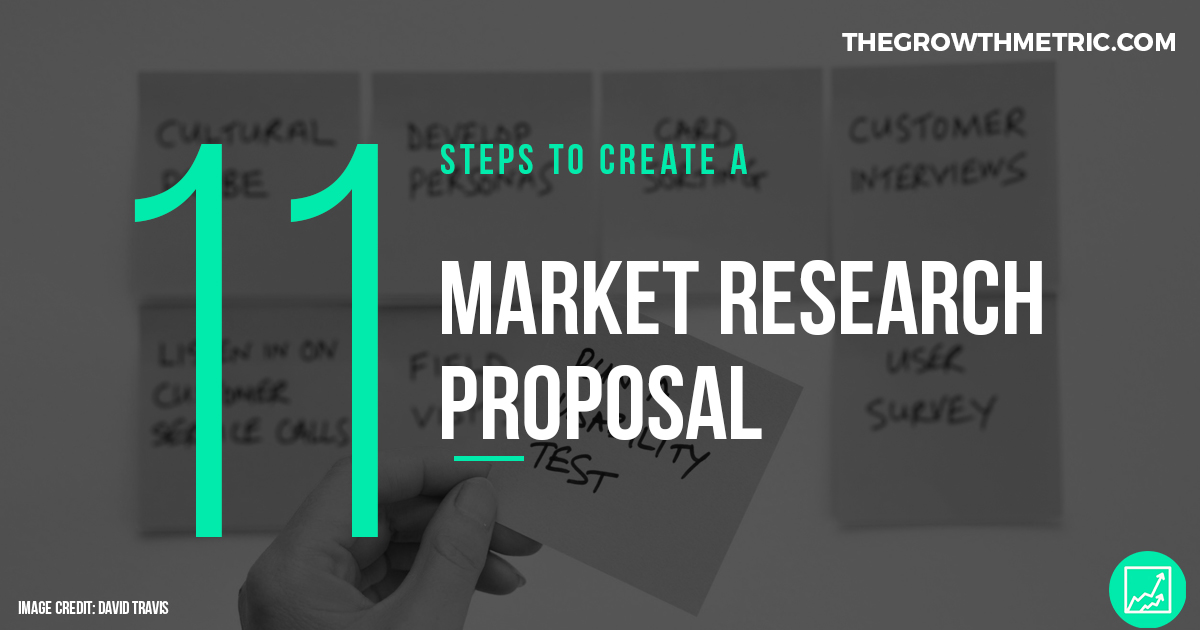
Continuing the market research series, in this article, we’ll discuss what a market research proposal is and how to create one.
To recap, what we’ve covered so far in the series, we’ve talked about what market research is, the different types of market research you need to do to grow your business, and the benefits of conducting market research .

What is A Market Research Proposal
Conducting market research is expensive, and if you work in a large organization, then you would need to justify such expenses.
Before conducting your research you’d need to shed some light on past data about your market, gaps in the data, and why new research is necessary.
This is where a Market Research Proposal come in to play.
Typically, a research proposal is a document proposing a research project, usually, these proposals are done by a scientist or an academic.
The proposals are then evaluated on the cost and potential impact of the proposed research, and on the soundness of the proposed plan for carrying it out. Research proposals generally address several key points:
- What research question(s) will be addressed, and how they will be addressed
- How much time and expense will be required for the research
- What prior research has been done on the topic
- How the results of the research will be evaluated
- How the research will benefit the sponsoring organization and other parties involved
The same principles apply here, only that your business market environment is what is being researched, which is your target market.
A market research proposal is a document that details the what, the where, the when and the how of market research and the information and costs associated with it.
If this sounds complicated, then here’s what you need to know about a market proposal. It addresses:
- Why market research is necessary and what you aim to gain from the research
- What resources are required for the research
- Past research done on your market
- How the data from this market research will be collected, stored and used
- How the research will benefit your business
Keep in mind that at this point you are not conducting the research yet, you are simply providing a rationale behind why market research is necessary.
In the next article in this “Market Research” series, we will discuss the process of conducting market research, but for now, we need to provide a compelling document on why, how, when and where the research will be conducted.
11 Steps to Create A Market Research Proposal

Now that you know what a market research proposal is, it’s time to create one. There are 11 steps to create a sound and compelling market research proposal
1. Market Research Proposal Summary
Start your proposal by briefly explaining the purpose of the market research and why it is required. Also, give an overview of what the desired outcome of the market research is.
If your business is interested in pouring resources into an in-depth market research then surely, there is something you hope to gain from it.
Remember to provide reasoning for the need of this specific market research and let whoever is reading this, such as the CEO, COO. know what contributions this research will make to the company.
TEMPLATE TO USE:
The market research project, entitled [RESEARCH PROJECT TITLE] hopes to discover more information regarding market trends in [SPECIFIC AREA]. The following summary will give an overview of the causes, processes, and possible effects of the market research proposal, detailed below.
2. Research Objectives
In this section of your proposal give full details about what problem has been identified that requires market research to be conducted. I.e. Show why there is a specific need for this research in the first place.
Explain what the market research results will be used for and how they will help achieve the overall goals. Describe the goals which you hope to achieve with this project.
The proposed market research project contains the following objectives:
- Objective one
- Objective two
3. Background Information on Past Market Research
Odds are you’re not the first person/company to conduct research on your market. This means that there is existing information on your market. However, this knowledge might be outdated, or might not provide the data your business needs.
So, in this section explain what information already exists on this topic and what is already known. Also, highlight the gaps in knowledge that the market research will hopefully fill.
Here you will show information from existing sources regarding the specific topic to be researched. It is great to provide cited sources, graphs, charts, and statistics.
You will use this section to show that you know a great deal about the market you will be researching, but you also need to show the holes in the current knowledge.
You can then demonstrate the specific need for your proposed research plan, and how this market research plan will fill these holes and contribute to the knowledge of this subject.
4. Market Research Proposal Hypothesis
If your business needs to conduct market research, then you probably have a few ideas of what you hope to get or learn from the research.
In this section describe what you believed to be the likely outcome of the market research and what you hope to learn.
5. Research Target Audience
Your business doesn’t target everyone, and odds are your business targets different audience types. So who is this research targeted at?
This is a very important part of your proposal and you need to be as detailed as possible about the target audience or audiences you will be researching.
Also, describe how you will source this target audience and how you will ensure they meet the correct criteria.
6. Data Collection of Market Research
Time to get to the good stuff. In this part of your proposal, you MUST detail all the data collection methods that will be used during the market research and, how they will be carried out.
You MUST also explain how the accuracy of data will be maintained, how potential candidates for the research will be approached and, if applicable, how they will be reimbursed for their time and contribution.
Use specifics and consider potential questions such as.
- How will you maintain the accuracy of data?
- How will you approach potential survey or research candidates?
- Will these participants be paid for their time?
- At what times of day will you make phone calls?
- In what ways will you ensure an accurate data sample?
The more information you can provide in this section, the better.
Our methods of data collection will be best suited to the project at hand. Research methods will include:
- Focus groups
- Collection of social media data
- Surveys via the Internet, phone, or email
- Long range in-home consumer tests
- Distribution of samples
- In person promotionals
These individuals will be selected [HOW THEY ARE SELECTED] to ensure an appropriately constituted pool of data from which we can infer accurate insights and trends.
The pool itself comprises of individuals who have expressed to us an interest in participating in such surveys, and they will be compensated by [METHOD OF COMPENSATION]….
7. Research and Analysis Methodology
In this section of your proposal, you are to discuss the strengths and possible limitations of your research methods.
Provide an overall blueprint for your methodology in approaching research data, and describe the implications of each method of data collection, and explain the methods you will use to interpret the data.
Lastly, discuss the means of evaluating the collected data and how you will account for errors, holes in data, or inaccuracies.
8. Ethics to be Followed During Research
You’re almost done with your proposal, but there are still a few important details that need to be included.
Explain how the market research will adhere to ethical codes by thinking about how issues such as participant confidentiality, data security, privacy, and consent of research participants will be addressed.
Include waivers or documents you plan to provide to research participants, if applicable
9. Market Research Timeline
In this section, provide a detailed timeline of when the research needs to begin and when a full report is required, ensure sufficient and realistic time for both data collection and data analysis are considered.
Market Research Timeline
- Task 1 ([DATE] [TIME])
- Task 2 ([DATE] [TIME])
- Task 3 ([DATE] [TIME])
10. Market Research Budget
We’re almost done with our proposal, but it’s time to include arguably the most important section. After all, if your company does not have the funds and resources then there would be no research in the first place.
Provide an overall budget for the proposed project. Make sure to include all possible cost considerations. You can provide a breakdown of those here.
Don’t forget budgets for sections such as Participant Reimbursement, funds for documents, rental space.
11. Conclusion
This is the last part of your market research proposal. You can add ways in which this market research will provide further benefits or include unique applications of the potential results.
Now that you know the market research proposal process and the importance of market research, in the next article will discuss the actual market research process.
Comment with any questions you have about Market Research Proposals and I will get back to you ASAP.

Receive Growth Marketing Resources Directly To Your Email
Join The Growth Metric's mailing list to receive the latest resources and blog posts.
Almost there, click on the confirmation email!
Post navigation, leave a reply cancel reply.
Your email address will not be published. Required fields are marked *
This site uses Akismet to reduce spam. Learn how your comment data is processed .

- Our CLT & Focus Group Facilities
- Concept Ideation & Invention Methods
- Creative Problem Solving Research
- Product & Packaging Evaluation
- Consumer / Shopper Segmentation
- Path to Purchase / Journey Mapping
- Virtual Store Testing
- Brand Positioning Research
- Message Evaluation Optimization
- Ad Copy Testing
- Reputation Management
- Brand Equity Assessment
- Market Structure & Landscape
- Competitive Intelligence
- Benchmarking Market Research
- Customer & Employee Satisfaction Surveys
- Habits & Practices / Attitudes & Usage
- Data Presentation & Reporting
- Data Analysis & Interpretation
- Data Processing & Analytics
- Syndicated Data
- Segmentation Algorithms & Panels
- Proprietary Research Reports
- Data Mining
- Consumer Insights
- Sensory Data Analysis
- Crisis Communications
- Marketing & Business Strategy
- Focus Groups
- Face To Face Interviews
- In-Depth Interviews
- Public Opinion
- Web Interviews
- Postal Mail Surveys/Questionnaires
- Interactive Voice Responses
- Public Opinion & Community Engagement
- Leadership Team
- Company Acquisitions
- Testimonials
- Pharmaceutical
- Retail & Consumer
- Agriculture
- Manufacturing
- Marketing & Advertising
- Entertainment
- Finance & Legal
- Food & Beverage
- Travel & Hospitality
- Apparel & Footwear
- Home & Hardware
- Health & Beauty Aids
- Hi-Tech & Ecommerce
- Alternative Energy
- Case Studies
- Project Summaries
- Research Tools
- Join Our Panel
How to Write a Winning Market Research Proposal
The current pandemic may have curbed our travel, but that doesn’t mean we don’t all still know the value of having good maps and a suggested itinerary. Indeed, a solid plan of action makes any endeavor — whether it be a fun-filled vacation, an educational goal, or a professional enterprise — more focused, less stressful, and, thus, more effective. It doesn’t matter if life interrupts our plans (“Hello, COVID-19!”); in fact, interruptions are a given, but we still know that good plans prepare us for whatever lies ahead. They help us to define our priorities and clarify our needs so that we can better manage our resources. The result: we are better prepared to handle uncertainties and more formidable and more productive in whatever we choose to do.
For businesses, good plans are based on good research. More than good products and services, good information sets profitable companies apart from their competition, allowing them to prepare for — and plan for — success. This is why market research proposals are so important. A market research proposal is a document a company uses to map out its future. It unites company stakeholders in joint discovery of information so that everyone knows who and what really matters. In short, a market research proposal outlines the specifics of an information-gathering project. This is how to write a winning one:
Keep It Brief
A market research proposal is sometimes called a “market research brief” because it's just that: brief. It should also be clearly written with no unusual acronyms or industry jargon and only the necessary points to underscore the overall research objective (as well as how it will be addressed) highlighted.
Include a Company Overview
The beginning of the proposal should include a short overview of the company, including such details as its mission and vision statements; market performance history; industry facts, figures, and trends; competitor data points and any other past research findings that shed light on the issue(s) at hand and why further research is needed.
Clearly Define the Objective
The research objective is the most important part of the proposal, as it clearly outlines the information a company needs, and, thus, defines the overall goal of the project. It’s basically the question a company wants to be answered and needs to be specific and measurable (but not necessarily quantitative) with the desired outcome.
Explain the Research Methodology
Of course, a market research proposal should also include a section explaining how the information to address the research objective will be obtained. Details about data collection (including the definition of the target audience, sample selection criteria, and proposed methodology) need to be clarified (since specific demographic, technological, economic, political, and even environmental concerns inevitably impact research outcomes) and should be evident with reasons for their use thoroughly transparent.
List Expected Outcomes
Finally, a good market research proposal needs to include a list of expected outcomes. An estimation of budget concerns, as well as a timeline for specific research milestones and project completion, should be listed here, along with an overview of projected deliverables to be anticipated. This helps both company executives and researchers to remain focused and on point.
Ready to Learn More?
A winning market research proposal isn’t just the one that seals the deal on a research project. It’s the one that provides actionable insights for companies and researchers alike. Following a determined set of standards, a winning market research proposal has the potential to garner data that can be used to inform better business decisions. Our team at Research America has the expertise needed to craft winning market research proposals that yield meaningful results for all involved. Please contact us to learn more.
CUSTOMER EXPERIENCE
CONSUMER INSIGHTS
- Marketing Research |
- Market Research Surveys |
- Market Research Company |
- Market Research Interviews |
- Market Research Calls |
- Market Research News |
- Market Research Initiative |
- Privacy Policy |
- Marketing proposals
Marketing Research Proposal Template
Used 5,031 times
e-Sign with PandaDoc
Prepared by: [Sender.FirstName] [Sender.LastName] [Sender.Company]
Prepared for: [Client.FirstName] [Client.LastName] [Client.Company]

[Sender.Company] is one of the industry's leading firms for marketing research. We specialize in understanding consumer behavior and helping you align your marketing strategy to best capture audience attention.
[Sender.Company] ’s headquarters is situated in [Sender.City] , but we have operations expanding overseas, including cities such as Mumbai, London, Washington DC, Sydney, Tokyo, and Mexico City. Our client list includes noteworthy names, such as (Client A, Client B, and Client C, etc.) , amongst others.
With over (X) years of industry experience, we have learned what makes your audience tick — and what makes them click — and we help you understand consumer behavior such that you can create better marketing strategies, land dream clients, and improve your sales processes.
Client testimonials
Here’s what some of our past clients have to say about our work.
(Client Testimonial 1)
[Client.Company]
[Client.FirstName] [Client.LastName]
(Client Testimonial 2) (Client.Company) (Client.FirstName) (Client.LastName)
(Client Testimonial 3) (Client.Company) (Client.FirstName) (Client.LastName)
The purpose of this research is to understand consumer behavior for the customers of [Client.Company] . We also aim to understand what strategies work for the target mix and how [Client.Company] can improve their marketing strategy to better educate, inform, and persuade their potential clients to buy their products or services.
This research was commissioned by [Client.Company] , and the proposal is therefore created uniquely for [Client.Company] by [Sender.Company] . This ensures both parties are on the same page before beginning the research process. We will be using both quantitative and qualitative research techniques to learn about [Client.Company] ’s target group’s consumer behavior, refining the process as we go, and presenting the most useful results of our analysis.
AIMS AND OBJECTIVES
The primary goal of the study is to gain a comprehensive, 360-degree understanding of consumer behavior with respect to [Client.Company] ’s customer base and target audience.
The study must meet the following research objectives to be considered accomplished:
It should critically examine the target demographic’s behavior.
It should intercept both primary and secondary data to come to conclusive results.
It should address implications of an ineffective marketing strategy.
It should understand what would be the right way to communicate with the target demo.
All other research objectives that the client deems necessary to be included in the study.
Framework analysis
This section goes hand-in-hand with the aims and objectives section, but should focus more in-depth on the background circumstances which indicate a need for the specific market research project proposed. While aims and objectives describe the specific outcomes the research will produce, the framework analysis section should demonstrate the scope of these outcomes from a practical standpoint. The framework analysis should include information from existing sources (the current body of knowledge) regarding the specific topic to be researched. You can then demonstrate the specific need for your proposed research plan.
Existing knowledge
Through secondary research and the previous data we have on the client’s target demographic, we know the following about the client:
Add details about the existing knowledge you have on your target mix.
By conducting this study, we also plan to understand if this knowledge still holds true for our client, and to what degree, within the current economic and social environment.

The hypothesis of the study is that the target audience enjoys [Client.Company] ’s social media posts. However, it does not like interacting with offline events that [Client.Company] conducts, and would ideally like to see more engaging offline events from the brand.

COLLECTION OF DATA
Use this section of the marketing research proposal to thoroughly describe all data collection methods which will be utilized in your research. The overall strategy can be addressed, as well as the individual data collection methods. For market research, these often include methods such as focus groups, surveys, social networking research, or in-home tests. Be specific about each method. For example, if your research includes the collection of surveys, specify in this section precisely how those surveys will be conducted (via phone, email, mail, etc.), what demographics will be sampled, and what the format will look like. The more detailed you can be in this section, the better likelihood that your proposal will be accepted.
Data collection can be done through many ways, such as client interviews, focus group studies, observation, social media data, online surveys, tests, questionnaires, published studies, public records, etc. Analysts usually use a mix of these data collection methods to understand audience behavior. Still, they may prefer some data collection methods over others depending on if they’re conducting qualitative research or quantitative research.
Target audience
Our target demographic for this study are men between the ages of 30-45, who are present on social media sites like LinkedIn and Twitter. The same target mix also has a spending power of up to (X) dollars per month, enjoys vacationing often, and prefers to buy luxury, high-quality products. They are motivated to buy [Client.Company] ’s products because they like the quality of materials the items are made from and because everything is ethically sourced and created.
Sampling method and size
For the research we’re conducting, [Sender.Company] has decided to explore the probability sampling methodology. Keeping all requirements of the research in mind, we believe that this method would be particularly fruitful to achieve accurate results. With probability sampling, [Sender.Company] plans to employ the stratified random sampling method, and will be using a sample size of (X) , which will be further divided based upon ages of the individuals.
Research methodology
Use this section to discuss the merits of your research methods. Describe the implications of each method of data collection, and explain the methodology you will use to interpret the data. Discuss the means of evaluating the collected data.
Fieldwork and Reporting
Starting from the date when the contract is signed by both parties, [Sender.Company] will begin fieldwork within 10 days. We will create a live data link to share all updates on the project. At every project milestone, [Client.Company] will be updated with a progress report. The link will be shared within 10 days of acceptance of the agreement, and can be accessed through a passcode [Sender.Company] will provide [Client.Company] .
Timeline and Budget
The following tables describe the budget and time requirements projected for the project.
Project Submission | Timeline |
|---|---|
Preliminary research | Week 1-2 |
Conduct quantitative research | Week 3-5 |
Conduct qualitative research | Week 6-9 |
Final report submission | Week 10 |
Name | Price | QTY | Subtotal |
|---|---|---|---|
| Item 1 Description of first item | $35.00 | 5 | $175.00 |
| Item 2 Description of second item | $55.00 | $55.00 | |
| Item 3 Description of third item | $200.00 | $200.00 |
Subtotal | $230.00 |
Discount | -$115.00 |
Tax | $23.00 |
Total | $138.00 |
ETHICAL CONSIDERATIONS
Ethical considerations are very important in all types of research. Use this section to delineate the ways in which the research will abide by an ethical code in both methodology and practice. Among other possibilities, address factors such as confidentiality, data security, privacy, and consent of research participants.
LIMITATIONS
This section can remain somewhat brief. Here, you can concede any potential or probable limitations of your research methods.
FURTHER OUTCOMES
Although you have already addressed the likely outcomes of your findings previously in this research proposal, in this section you can expand upon the implications and potential benefits of your intended findings.

Terms and conditions
[Client.Company] agrees to pay [Sender.Company] 50% of the total project fee before beginning the project. The project will begin work once signatures are attained from both parties and 50% upfront payment is received by [Sender.Company] .
Once the project is completed, [Client.Company] is to send the remaining 50% payment amount due within 15 days after the final report is shared. Failure to send payment within the stipulated time period will result in a 10% late fee — this payment is to be made to the (Sender.Client) , unless the deadline for payment is agreed on a different date by both parties.
Any disputes arising from the agreement will be resolved based upon the laws and jurisdiction of [Sender.City] , [Sender.State] , [Sender.Country] .
Both parties agree that the contents and findings of the study will remain confidential, unless otherwise agreed upon. Confidential information is not information that is readily available to the public.
[Sender.Company] is not responsible for any damages arising from the case study unless there has been an error in the way the study was conducted.
[Client.Company] understands that there may be minor delays, not exceeding more than 2 weeks, depending on if the target audience of the study is quick (or not) to respond. Any delay and modifications in deadline will be communicated with [Client.Company] .
[Sender.Company] agrees to provide accurate and truthful information learned from the study. [Sender.Company] is not, however, responsible for the findings of the study. Nor is it liable for any damages arising out of the application of suggested solutions.
Please provide confirmation of agreeing to the terms of this agreement by signing the signature block below.
[Sender.FirstName] [Sender.LastName]
[Sender.Company]
Care to rate this template?
Your rating will help others.
Thanks for your rate!
Useful resources
- Featured templates
- Sales proposals
How to Do Market Research: The Complete Guide
Learn how to do market research with this step-by-step guide, complete with templates, tools and real-world examples.
Access best-in-class company data
Get trusted first-party funding data, revenue data and firmographics
Market research is the systematic process of gathering, analyzing and interpreting information about a specific market or industry.
What are your customers’ needs? How does your product compare to the competition? What are the emerging trends and opportunities in your industry? If these questions keep you up at night, it’s time to conduct market research.
Market research plays a pivotal role in your ability to stay competitive and relevant, helping you anticipate shifts in consumer behavior and industry dynamics. It involves gathering these insights using a wide range of techniques, from surveys and interviews to data analysis and observational studies.
In this guide, we’ll explore why market research is crucial, the various types of market research, the methods used in data collection, and how to effectively conduct market research to drive informed decision-making and success.
What is market research?
The purpose of market research is to offer valuable insight into the preferences and behaviors of your target audience, and anticipate shifts in market trends and the competitive landscape. This information helps you make data-driven decisions, develop effective strategies for your business, and maximize your chances of long-term growth.

Why is market research important?
By understanding the significance of market research, you can make sure you’re asking the right questions and using the process to your advantage. Some of the benefits of market research include:
- Informed decision-making: Market research provides you with the data and insights you need to make smart decisions for your business. It helps you identify opportunities, assess risks and tailor your strategies to meet the demands of the market. Without market research, decisions are often based on assumptions or guesswork, leading to costly mistakes.
- Customer-centric approach: A cornerstone of market research involves developing a deep understanding of customer needs and preferences. This gives you valuable insights into your target audience, helping you develop products, services and marketing campaigns that resonate with your customers.
- Competitive advantage: By conducting market research, you’ll gain a competitive edge. You’ll be able to identify gaps in the market, analyze competitor strengths and weaknesses, and position your business strategically. This enables you to create unique value propositions, differentiate yourself from competitors, and seize opportunities that others may overlook.
- Risk mitigation: Market research helps you anticipate market shifts and potential challenges. By identifying threats early, you can proactively adjust their strategies to mitigate risks and respond effectively to changing circumstances. This proactive approach is particularly valuable in volatile industries.
- Resource optimization: Conducting market research allows organizations to allocate their time, money and resources more efficiently. It ensures that investments are made in areas with the highest potential return on investment, reducing wasted resources and improving overall business performance.
- Adaptation to market trends: Markets evolve rapidly, driven by technological advancements, cultural shifts and changing consumer attitudes. Market research ensures that you stay ahead of these trends and adapt your offerings accordingly so you can avoid becoming obsolete.
As you can see, market research empowers businesses to make data-driven decisions, cater to customer needs, outperform competitors, mitigate risks, optimize resources and stay agile in a dynamic marketplace. These benefits make it a huge industry; the global market research services market is expected to grow from $76.37 billion in 2021 to $108.57 billion in 2026 . Now, let’s dig into the different types of market research that can help you achieve these benefits.
Types of market research
- Qualitative research
- Quantitative research
- Exploratory research
- Descriptive research
- Causal research
- Cross-sectional research
- Longitudinal research
Despite its advantages, 23% of organizations don’t have a clear market research strategy. Part of developing a strategy involves choosing the right type of market research for your business goals. The most commonly used approaches include:
1. Qualitative research
Qualitative research focuses on understanding the underlying motivations, attitudes and perceptions of individuals or groups. It is typically conducted through techniques like in-depth interviews, focus groups and content analysis — methods we’ll discuss further in the sections below. Qualitative research provides rich, nuanced insights that can inform product development, marketing strategies and brand positioning.
2. Quantitative research
Quantitative research, in contrast to qualitative research, involves the collection and analysis of numerical data, often through surveys, experiments and structured questionnaires. This approach allows for statistical analysis and the measurement of trends, making it suitable for large-scale market studies and hypothesis testing. While it’s worthwhile using a mix of qualitative and quantitative research, most businesses prioritize the latter because it is scientific, measurable and easily replicated across different experiments.
3. Exploratory research
Whether you’re conducting qualitative or quantitative research or a mix of both, exploratory research is often the first step. Its primary goal is to help you understand a market or problem so you can gain insights and identify potential issues or opportunities. This type of market research is less structured and is typically conducted through open-ended interviews, focus groups or secondary data analysis. Exploratory research is valuable when entering new markets or exploring new product ideas.
4. Descriptive research
As its name implies, descriptive research seeks to describe a market, population or phenomenon in detail. It involves collecting and summarizing data to answer questions about audience demographics and behaviors, market size, and current trends. Surveys, observational studies and content analysis are common methods used in descriptive research.
5. Causal research
Causal research aims to establish cause-and-effect relationships between variables. It investigates whether changes in one variable result in changes in another. Experimental designs, A/B testing and regression analysis are common causal research methods. This sheds light on how specific marketing strategies or product changes impact consumer behavior.
6. Cross-sectional research
Cross-sectional market research involves collecting data from a sample of the population at a single point in time. It is used to analyze differences, relationships or trends among various groups within a population. Cross-sectional studies are helpful for market segmentation, identifying target audiences and assessing market trends at a specific moment.
7. Longitudinal research
Longitudinal research, in contrast to cross-sectional research, collects data from the same subjects over an extended period. This allows for the analysis of trends, changes and developments over time. Longitudinal studies are useful for tracking long-term developments in consumer preferences, brand loyalty and market dynamics.
Each type of market research has its strengths and weaknesses, and the method you choose depends on your specific research goals and the depth of understanding you’re aiming to achieve. In the following sections, we’ll delve into primary and secondary research approaches and specific research methods.
Primary vs. secondary market research
Market research of all types can be broadly categorized into two main approaches: primary research and secondary research. By understanding the differences between these approaches, you can better determine the most appropriate research method for your specific goals.
Primary market research
Primary research involves the collection of original data straight from the source. Typically, this involves communicating directly with your target audience — through surveys, interviews, focus groups and more — to gather information. Here are some key attributes of primary market research:
- Customized data: Primary research provides data that is tailored to your research needs. You design a custom research study and gather information specific to your goals.
- Up-to-date insights: Because primary research involves communicating with customers, the data you collect reflects the most current market conditions and consumer behaviors.
- Time-consuming and resource-intensive: Despite its advantages, primary research can be labor-intensive and costly, especially when dealing with large sample sizes or complex study designs. Whether you hire a market research consultant, agency or use an in-house team, primary research studies consume a large amount of resources and time.
Secondary market research
Secondary research, on the other hand, involves analyzing data that has already been compiled by third-party sources, such as online research tools, databases, news sites, industry reports and academic studies.

Here are the main characteristics of secondary market research:
- Cost-effective: Secondary research is generally more cost-effective than primary research since it doesn’t require building a research plan from scratch. You and your team can look at databases, websites and publications on an ongoing basis, without needing to design a custom experiment or hire a consultant.
- Leverages multiple sources: Data tools and software extract data from multiple places across the web, and then consolidate that information within a single platform. This means you’ll get a greater amount of data and a wider scope from secondary research.
- Quick to access: You can access a wide range of information rapidly — often in seconds — if you’re using online research tools and databases. Because of this, you can act on insights sooner, rather than taking the time to develop an experiment.
So, when should you use primary vs. secondary research? In practice, many market research projects incorporate both primary and secondary research to take advantage of the strengths of each approach.
One rule of thumb is to focus on secondary research to obtain background information, market trends or industry benchmarks. It is especially valuable for conducting preliminary research, competitor analysis, or when time and budget constraints are tight. Then, if you still have knowledge gaps or need to answer specific questions unique to your business model, use primary research to create a custom experiment.
Market research methods
- Surveys and questionnaires
- Focus groups
- Observational research
- Online research tools
- Experiments
- Content analysis
- Ethnographic research
How do primary and secondary research approaches translate into specific research methods? Let’s take a look at the different ways you can gather data:
1. Surveys and questionnaires
Surveys and questionnaires are popular methods for collecting structured data from a large number of respondents. They involve a set of predetermined questions that participants answer. Surveys can be conducted through various channels, including online tools, telephone interviews and in-person or online questionnaires. They are useful for gathering quantitative data and assessing customer demographics, opinions, preferences and needs. On average, customer surveys have a 33% response rate , so keep that in mind as you consider your sample size.
2. Interviews
Interviews are in-depth conversations with individuals or groups to gather qualitative insights. They can be structured (with predefined questions) or unstructured (with open-ended discussions). Interviews are valuable for exploring complex topics, uncovering motivations and obtaining detailed feedback.
3. Focus groups
The most common primary research methods are in-depth webcam interviews and focus groups. Focus groups are a small gathering of participants who discuss a specific topic or product under the guidance of a moderator. These discussions are valuable for primary market research because they reveal insights into consumer attitudes, perceptions and emotions. Focus groups are especially useful for idea generation, concept testing and understanding group dynamics within your target audience.
4. Observational research
Observational research involves observing and recording participant behavior in a natural setting. This method is particularly valuable when studying consumer behavior in physical spaces, such as retail stores or public places. In some types of observational research, participants are aware you’re watching them; in other cases, you discreetly watch consumers without their knowledge, as they use your product. Either way, observational research provides firsthand insights into how people interact with products or environments.
5. Online research tools
You and your team can do your own secondary market research using online tools. These tools include data prospecting platforms and databases, as well as online surveys, social media listening, web analytics and sentiment analysis platforms. They help you gather data from online sources, monitor industry trends, track competitors, understand consumer preferences and keep tabs on online behavior. We’ll talk more about choosing the right market research tools in the sections that follow.
6. Experiments
Market research experiments are controlled tests of variables to determine causal relationships. While experiments are often associated with scientific research, they are also used in market research to assess the impact of specific marketing strategies, product features, or pricing and packaging changes.
7. Content analysis
Content analysis involves the systematic examination of textual, visual or audio content to identify patterns, themes and trends. It’s commonly applied to customer reviews, social media posts and other forms of online content to analyze consumer opinions and sentiments.
8. Ethnographic research
Ethnographic research immerses researchers into the daily lives of consumers to understand their behavior and culture. This method is particularly valuable when studying niche markets or exploring the cultural context of consumer choices.
How to do market research
- Set clear objectives
- Identify your target audience
- Choose your research methods
- Use the right market research tools
- Collect data
- Analyze data
- Interpret your findings
- Identify opportunities and challenges
- Make informed business decisions
- Monitor and adapt
Now that you have gained insights into the various market research methods at your disposal, let’s delve into the practical aspects of how to conduct market research effectively. Here’s a quick step-by-step overview, from defining objectives to monitoring market shifts.
1. Set clear objectives
When you set clear and specific goals, you’re essentially creating a compass to guide your research questions and methodology. Start by precisely defining what you want to achieve. Are you launching a new product and want to understand its viability in the market? Are you evaluating customer satisfaction with a product redesign?
Start by creating SMART goals — objectives that are specific, measurable, achievable, relevant and time-bound. Not only will this clarify your research focus from the outset, but it will also help you track progress and benchmark your success throughout the process.
You should also consult with key stakeholders and team members to ensure alignment on your research objectives before diving into data collecting. This will help you gain diverse perspectives and insights that will shape your research approach.
2. Identify your target audience
Next, you’ll need to pinpoint your target audience to determine who should be included in your research. Begin by creating detailed buyer personas or stakeholder profiles. Consider demographic factors like age, gender, income and location, but also delve into psychographics, such as interests, values and pain points.
The more specific your target audience, the more accurate and actionable your research will be. Additionally, segment your audience if your research objectives involve studying different groups, such as current customers and potential leads.
If you already have existing customers, you can also hold conversations with them to better understand your target market. From there, you can refine your buyer personas and tailor your research methods accordingly.
3. Choose your research methods
Selecting the right research methods is crucial for gathering high-quality data. Start by considering the nature of your research objectives. If you’re exploring consumer preferences, surveys and interviews can provide valuable insights. For in-depth understanding, focus groups or observational research might be suitable. Consider using a mix of quantitative and qualitative methods to gain a well-rounded perspective.
You’ll also need to consider your budget. Think about what you can realistically achieve using the time and resources available to you. If you have a fairly generous budget, you may want to try a mix of primary and secondary research approaches. If you’re doing market research for a startup , on the other hand, chances are your budget is somewhat limited. If that’s the case, try addressing your goals with secondary research tools before investing time and effort in a primary research study.
4. Use the right market research tools
Whether you’re conducting primary or secondary research, you’ll need to choose the right tools. These can help you do anything from sending surveys to customers to monitoring trends and analyzing data. Here are some examples of popular market research tools:
- Market research software: Crunchbase is a platform that provides best-in-class company data, making it valuable for market research on growing companies and industries. You can use Crunchbase to access trusted, first-party funding data, revenue data, news and firmographics, enabling you to monitor industry trends and understand customer needs.

- Survey and questionnaire tools: SurveyMonkey is a widely used online survey platform that allows you to create, distribute and analyze surveys. Google Forms is a free tool that lets you create surveys and collect responses through Google Drive.
- Data analysis software: Microsoft Excel and Google Sheets are useful for conducting statistical analyses. SPSS is a powerful statistical analysis software used for data processing, analysis and reporting.
- Social listening tools: Brandwatch is a social listening and analytics platform that helps you monitor social media conversations, track sentiment and analyze trends. Mention is a media monitoring tool that allows you to track mentions of your brand, competitors and keywords across various online sources.
- Data visualization platforms: Tableau is a data visualization tool that helps you create interactive and shareable dashboards and reports. Power BI by Microsoft is a business analytics tool for creating interactive visualizations and reports.
5. Collect data
There’s an infinite amount of data you could be collecting using these tools, so you’ll need to be intentional about going after the data that aligns with your research goals. Implement your chosen research methods, whether it’s distributing surveys, conducting interviews or pulling from secondary research platforms. Pay close attention to data quality and accuracy, and stick to a standardized process to streamline data capture and reduce errors.
6. Analyze data
Once data is collected, you’ll need to analyze it systematically. Use statistical software or analysis tools to identify patterns, trends and correlations. For qualitative data, employ thematic analysis to extract common themes and insights. Visualize your findings with charts, graphs and tables to make complex data more understandable.
If you’re not proficient in data analysis, consider outsourcing or collaborating with a data analyst who can assist in processing and interpreting your data accurately.

7. Interpret your findings
Interpreting your market research findings involves understanding what the data means in the context of your objectives. Are there significant trends that uncover the answers to your initial research questions? Consider the implications of your findings on your business strategy. It’s essential to move beyond raw data and extract actionable insights that inform decision-making.
Hold a cross-functional meeting or workshop with relevant team members to collectively interpret the findings. Different perspectives can lead to more comprehensive insights and innovative solutions.
8. Identify opportunities and challenges
Use your research findings to identify potential growth opportunities and challenges within your market. What segments of your audience are underserved or overlooked? Are there emerging trends you can capitalize on? Conversely, what obstacles or competitors could hinder your progress?
Lay out this information in a clear and organized way by conducting a SWOT analysis, which stands for strengths, weaknesses, opportunities and threats. Jot down notes for each of these areas to provide a structured overview of gaps and hurdles in the market.
9. Make informed business decisions
Market research is only valuable if it leads to informed decisions for your company. Based on your insights, devise actionable strategies and initiatives that align with your research objectives. Whether it’s refining your product, targeting new customer segments or adjusting pricing, ensure your decisions are rooted in the data.
At this point, it’s also crucial to keep your team aligned and accountable. Create an action plan that outlines specific steps, responsibilities and timelines for implementing the recommendations derived from your research.
10. Monitor and adapt
Market research isn’t a one-time activity; it’s an ongoing process. Continuously monitor market conditions, customer behaviors and industry trends. Set up mechanisms to collect real-time data and feedback. As you gather new information, be prepared to adapt your strategies and tactics accordingly. Regularly revisiting your research ensures your business remains agile and reflects changing market dynamics and consumer preferences.
Online market research sources
As you go through the steps above, you’ll want to turn to trusted, reputable sources to gather your data. Here’s a list to get you started:
- Crunchbase: As mentioned above, Crunchbase is an online platform with an extensive dataset, allowing you to access in-depth insights on market trends, consumer behavior and competitive analysis. You can also customize your search options to tailor your research to specific industries, geographic regions or customer personas.

- Academic databases: Academic databases, such as ProQuest and JSTOR , are treasure troves of scholarly research papers, studies and academic journals. They offer in-depth analyses of various subjects, including market trends, consumer preferences and industry-specific insights. Researchers can access a wealth of peer-reviewed publications to gain a deeper understanding of their research topics.
- Government and NGO databases: Government agencies, nongovernmental organizations and other institutions frequently maintain databases containing valuable economic, demographic and industry-related data. These sources offer credible statistics and reports on a wide range of topics, making them essential for market researchers. Examples include the U.S. Census Bureau , the Bureau of Labor Statistics and the Pew Research Center .
- Industry reports: Industry reports and market studies are comprehensive documents prepared by research firms, industry associations and consulting companies. They provide in-depth insights into specific markets, including market size, trends, competitive analysis and consumer behavior. You can find this information by looking at relevant industry association databases; examples include the American Marketing Association and the National Retail Federation .
- Social media and online communities: Social media platforms like LinkedIn or Twitter (X) , forums such as Reddit and Quora , and review platforms such as G2 can provide real-time insights into consumer sentiment, opinions and trends.
Market research examples
At this point, you have market research tools and data sources — but how do you act on the data you gather? Let’s go over some real-world examples that illustrate the practical application of market research across various industries. These examples showcase how market research can lead to smart decision-making and successful business decisions.
Example 1: Apple’s iPhone launch
Apple ’s iconic iPhone launch in 2007 serves as a prime example of market research driving product innovation in tech. Before the iPhone’s release, Apple conducted extensive market research to understand consumer preferences, pain points and unmet needs in the mobile phone industry. This research led to the development of a touchscreen smartphone with a user-friendly interface, addressing consumer demands for a more intuitive and versatile device. The result was a revolutionary product that disrupted the market and redefined the smartphone industry.
Example 2: McDonald’s global expansion
McDonald’s successful global expansion strategy demonstrates the importance of market research when expanding into new territories. Before entering a new market, McDonald’s conducts thorough research to understand local tastes, preferences and cultural nuances. This research informs menu customization, marketing strategies and store design. For instance, in India, McDonald’s offers a menu tailored to local preferences, including vegetarian options. This market-specific approach has enabled McDonald’s to adapt and thrive in diverse global markets.
Example 3: Organic and sustainable farming
The shift toward organic and sustainable farming practices in the food industry is driven by market research that indicates increased consumer demand for healthier and environmentally friendly food options. As a result, food producers and retailers invest in sustainable sourcing and organic product lines — such as with these sustainable seafood startups — to align with this shift in consumer values.
The bottom line? Market research has multiple use cases and is a critical practice for any industry. Whether it’s launching groundbreaking products, entering new markets or responding to changing consumer preferences, you can use market research to shape successful strategies and outcomes.
Market research templates
You finally have a strong understanding of how to do market research and apply it in the real world. Before we wrap up, here are some market research templates that you can use as a starting point for your projects:
- Smartsheet competitive analysis templates : These spreadsheets can serve as a framework for gathering information about the competitive landscape and obtaining valuable lessons to apply to your business strategy.
- SurveyMonkey product survey template : Customize the questions on this survey based on what you want to learn from your target customers.
- HubSpot templates : HubSpot offers a wide range of free templates you can use for market research, business planning and more.
- SCORE templates : SCORE is a nonprofit organization that provides templates for business plans, market analysis and financial projections.
- SBA.gov : The U.S. Small Business Administration offers templates for every aspect of your business, including market research, and is particularly valuable for new startups.
Strengthen your business with market research
When conducted effectively, market research is like a guiding star. Equipped with the right tools and techniques, you can uncover valuable insights, stay competitive, foster innovation and navigate the complexities of your industry.
Throughout this guide, we’ve discussed the definition of market research, different research methods, and how to conduct it effectively. We’ve also explored various types of market research and shared practical insights and templates for getting started.
Now, it’s time to start the research process. Trust in data, listen to the market and make informed decisions that guide your company toward lasting success.
Related Articles

- Entrepreneurs
- 15 min read
What Is Competitive Analysis and How to Do It Effectively
Rebecca Strehlow, Copywriter at Crunchbase

17 Best Sales Intelligence Tools for 2024

- Market research
- 10 min read
How to Do Market Research for a Startup: Tips for Success
Jaclyn Robinson, Senior Manager of Content Marketing at Crunchbase
Search less. Close more.
Grow your revenue with Crunchbase, the all-in-one prospecting solution. Start your free trial.

Focus Groups
How to Write a Market Research Proposal
The market research proposal is an important first step in near all studies. First and foremost, a skeleton that details a study’s direction, goals, and focus, such proposals are typically the first point of reference for management. While the proposals make or break a project’s funding, there is one other strength no research team can ignore: direction.
Critical for any undertaking that involves research, direction helps with both the pragmatics and concepts of near all studies. Market research proposals are vital for outlining both. They also explain the potential returns or results a study can yield. Ideally, the proposal should convince outside readers while informing research and development teams.
Language is important for writing a proposal, as is organization. A lot of detail goes into the typical research proposal, and sometimes there is no clear place for essential odds and ends. Luckily, there is a general organization, or logic, that most research proposals adopt. This allows readers to quickly absorb details, jump to pertinent sections, and digest its conclusions.
While not mandatory, using these structures add a cohesion that makes reading these papers more convenient and cohesive. Length, detail, and overall complexity are all factors when considering how a research proposal should be organized. Similarly, weigh the study’s goals and potential returns. Not every proposal necessitates the same sections. In fact, simple studies can do without a lot of sections that more involved or longer studies require. That mentioned, never write off these critical five elements of your research proposal.
Overview, Definition, and Terms
Important for summing up the study’s incentives, intents, and overall feasibility, overviews prep readers for the project’s strengths. Like everything else in a proposal, clarity is also all-important. Definitions and terms are vital. Overviews are also excellent for showcasing market conditions, opportunity, goals, and overall impact to ROI. While very important, always make sure to focus on the client. Their edification should be at the forefront of any proposal writer’s mind.
Hypothesis and Goals
While referenced in the overview, extrapolation about a project’s actual agenda goes a long way. Near everyone reviewing a research proposal will search for a hypothesis. While fine to reference in the overview, an outright hypothesis will always predominate the research proposal and its direction. Be clear as possible!
The hypothesis itself, however, explains the goal’s prospective burdens, costs, and returns. Also explain how these different elements combine to form a whole level of different parts. Perhaps most intrinsic is the order of said goals, as well how they compliment each other.
Realizing goals requires exploring a range of target segments that can appreciate the product, content, or whatever else. Exploring these different targets includes any range of periphery methods, not to mention actual possibilities. What is vital, however, is a full explanation as to why the target is pertinent.
Methodology and Conditions
The logical extension, research proposals must detail methodology. Include practices and conditions, study types, analysis standards, and other crucial aspects. Make sure extrapolation focuses on the actual methodology, however. Pragmatic intricacies can be glossed over, but that really depends on the reader. Researchers will typically want to know about the whole process, while management typically focuses on efficacy and ROI.
Discuss.io can offer deliverables within 48 hours, the fastest in the industry. Establishing a clear timeline is still critical though. Product and content dev teams typically need to keep informed. A common timeline really encourages such cohesion, not mention also keeps MR better aware as to the product or content’s direction. Along with setting a schedule, timelines also helps inform team members of their objectives and schedule. Such a cohesive view both informs researchers as reminds them of the importance of each task.
Source: https://creativecommons.org/licenses/by/2.0/legalcode
Start a conversation with us to learn more about how you can better understand and build empathy with consumers through real-time conversations.
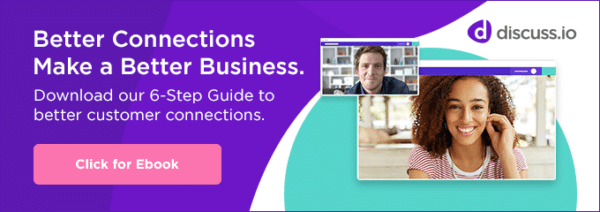
Sign Up for our Newsletter
Related articles.

How to Facilitate Meaningful Insights: Strategies for Effective Focus Group Discussions
Conducting a worthwhile focus group requires a strong purpose and well-defined objectives. This isn’t an ordinary…

How to Optimize Engagement with a Virtual Focus Group: Strategies and Tips
Creating successful engagement in virtual focus groups starts with proper planning. This involves everything from the…

Maximize the number of research projects completed by year’s end: Yes, it can be done
Ask most agencies managing enterprise-level market research (MRX) projects, and they’ll tell you they have a…
From Apathy to Empathy: The 3 Steps to Design for Human Centricity at Scale
August 7, 11 am EST/8 am PST
Discover how to eliminate the historical pains of conducting qual in this new era of human centricity. Join guest speakers, Senem Guler-Biyikli, PhD, Forrester Lead Analyst, and Sarah Tomasaitis, U.S. Insights Director at Suntory Global Spirits for this interactive session.


- Tour Solutions Resources Pricing
- Contact Sales
- START FREE TRIAL
- All Industries >

How To Write Market Research Proposal: Tips and Best Practices

Entrepreneurs and companies need to get critical information about their industry or specific market landscape to help ensure their business becomes a success.
This is where market research plays a role. But to be effective, proper steps must be outlined through a market research proposal.
If you’re a business owner or a marketer, you must learn how to write a market research proposal correctly . So here’s a handy step-by-step guide on how to do just that. Plus, we’ll throw in a free template to help you get started.
Table of Contents
How To Write a Market Research Proposal
When drafting a market research proposal , you can adopt various styles depending on the industry or business. But to put forth a more organized proposal, it helps to adhere to proven structures and follow these steps.
1. Start with an overview
It’s always wise to open with an overview to give the readers of the proposal a general idea of what the market research is all about, as well as set their expectations. If you don’t want to use the term overview, you can also go with an executive summary or an introduction.
You can do a simple overview consisting of one to three paragraphs. Or if the situation calls for it, you can also present your executive summary with supporting information that may include any or all of the following:
- Definition of terms. List the terms that will be used in the market research proposal. Make sure to define them properly.
- Market conditions. Give an overall picture of the current market conditions. Explain the industry’s state and the competition level, as well as mention relevant economic or even political factors.
- Strengths, weaknesses, opportunities, and threats (SWOT) analysis. You can also present market conditions through a SWOT diagram, which summarizes everything neatly.
- Feasibility. If you want to cut to the chase, state the overall feasibility. You can also consider including the potential ROI (return on investment ).
2. Define the objectives
When writing a market research proposal, define the project’s goals as clearly as possible. You can begin with a larger, encompassing objective and then break it up with its corresponding parts.
If you are dealing with multiple goals, make sure to explain how each separate objective relates to or affects one another.
Remember that clearly defined goals will guide the execution of the market research project – from the budget to the types of surveys or questions you will use.
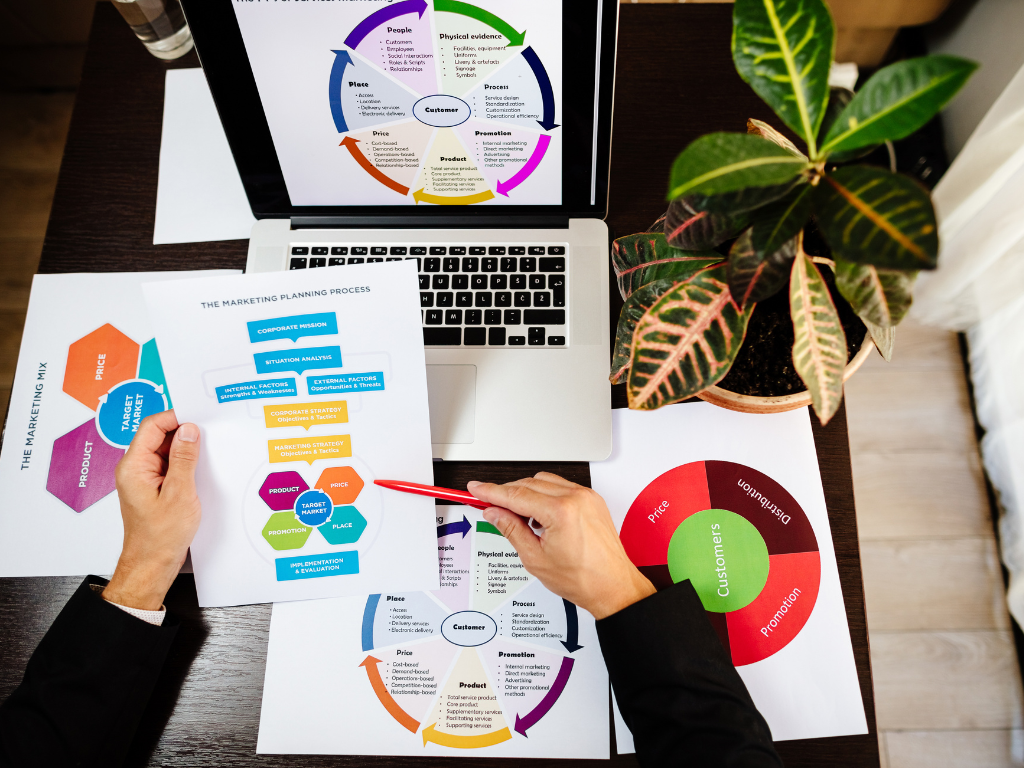
3. Outline the execution
Market research can be accomplished in various ways, but there needs to be a clear plan for executing it.
Outline your methodology and approach to getting the information you need. As far as methods are concerned, you can choose from options like organizing focus groups, deploying online surveys, or holding interviews over the phone or face-to-face.
You should also consider if your approach is multi-faceted. Will the surveys be done once or through a series of batches? Will you follow up on the first wave of interviews with email surveys?
Never forget to include the rationale for choosing your methodology. Factors to remember include costs, logistics, and timeline.
4. Explain how the results will be analyzed and reported
Market research proposal creation would be incomplete without including the mechanics for analyzing and reporting the results.
You must present a concrete plan for how the market research data will be collected and safely stored.
Next on your list is to explain how the data will be analyzed. Of course, what comes after is the reporting part. It’s more than just presenting the facts. You should also include your interpretations and, more importantly, your recommendations.
5. Discuss the timeline, costs, and conditions
Market research takes time and isn’t free. So, you’ll need to define your timeline and expected costs clearly.
It’s also important to tackle the terms and conditions of the market research project. The more transparent you are, the more you can prevent misunderstandings in the future.
Download the Market Research Proposal Template
When drafting a market research proposal, you can accomplish things faster using a reliable template.
Sign up now for a free account at Fill to get a market research proposal template. It’s just one of several templates that we offer for free.

Market Research Proposal
Common Mistakes to Avoid When Writing a Market Research Proposal
It’s not enough to know how to draft a market research proposal. You also have to be aware of common mistakes people commit when preparing these proposals.
- Lack of details. When you already know how to create market research proposals, you use certain structures and templates repeatedly. But sometimes, you forget to add elements that make your proposal look legit instead of being an apparent copy of another.
- There is not enough review and fact-checking. We’re not talking about simple spelling and grammar errors. We’re referring to the information you included in your market research proposal. Are they up-to-date? Are the sources considered trustworthy?
- There is too much hype. Be careful not to get caught up in the excitement of your proposal. Remember that you are dealing with business people. Be realistic and be clear about the goals. The last thing you need is to promise something you can’t deliver.
- Disorganized presentation. You can follow a decent structure when writing your market research proposal. But if you don’t organize the information you present in each section, you will you’re lose your reader’s interest.
- Underestimating visuals and diagrams. Yes, it’s showing real data is important, but you can be more persuasive by strategically using visuals, graphs, charts, and tables in your proposal.
Using Fill to Create Your Market Research Proposal
Now that you know how to write a market research proposal, it’s time to put your learnings into practice immediately.
Create an account at Fill and grab a free market research proposal template today.
Andria is a seasoned content writer, specializing in document management solutions and HIPAA compliance, providing valuable insights for businesses and professionals alike.
Manage contracts, forms and eSignatures workflows.
Related Stories

5 Types of Signatures and Which One is the Best for You

Everything You Need to Know About the Electronic Signature Act
Agreement vs Contract: What’s the Difference?
Agreements and contracts are two words that are often used interchangeably. Which of them is better? In this blog, Fill discusses its key differences.
Get great articles direct to your inbox
We’ll never share your details with third parties. View our Privacy Policy for more info.
This feature is currently only available from a desktop computer.
Proposal Template AI
Free proposal templates in word, powerpoint, pdf and more
Market Research Proposal Template: A Comprehensive Guide + Free Template Download + How to Write it
The importance of a market research proposal template.
As a market researcher, I understand the importance of creating a comprehensive and well-organized market research proposal. This document serves as a roadmap for our research process , outlining the objectives, methodology, and timeline for our project. However, creating a proposal from scratch can be time-consuming and challenging. That’s where a market research proposal template comes in. This template provides a structured framework for developing a thorough and professional proposal , saving time and ensuring that all necessary components are included. In this article, we will explore the key elements of a market research proposal template and discuss why it is an essential tool for any successful market research project.
Market Research Proposal Template
Executive summary.
The purpose of this section is to provide a brief overview of the market research proposal. It should include the objectives of the research, the methodology that will be used, and the expected outcomes .
Example: In this market research proposal, we aim to investigate the buying behavior of millennials in the automobile industry. We will utilize a combination of surveys, focus groups, and data analysis to understand the preferences and decision-making process of this demographic. The expected outcome is to provide actionable insights for automobile companies to effectively target and appeal to millennials.
My advice on: The executive summary is a crucial part of the market research proposal as it sets the tone for the rest of the document. It should be concise yet informative, capturing the essence of the research project .
This section outlines the specific goals and objectives of the market research. It should clearly define what the research aims to achieve and how it will contribute to the organization’s strategies.
Example: The objectives of this market research include: 1. To identify the key factors influencing millennials’ purchasing decisions in the automobile industry. 2. To understand the perception of various automobile brands among millennials. 3. To determine the most effective marketing channels to reach millennials.
My advice on: When outlining the objectives, it is important to be specific and measurable. This will provide a clear direction for the research and allow for meaningful conclusions to be drawn.
Methodology
This section details the approach and methods that will be used to conduct the market research. It should include a description of the research design , data collection techniques, and data analysis methods .
Example: The methodology will involve a combination of quantitative and qualitative research. Surveys will be conducted to gather numerical data on purchasing preferences and behaviors, while focus groups will provide in-depth insights into millennials’ attitudes towards different automobile brands. Data analysis will include statistical techniques to identify trends and patterns.
My advice on: When describing the methodology, it is important to justify the choice of methods and demonstrate their suitability for the research objectives . This will help to establish the credibility of the research approach .
This section provides a detailed timeline for the market research project. It should outline the key milestones and deliverables, as well as the estimated timeframes for each stage of the research.
Example: – Research planning and design: 1 month – Survey administration: 2 weeks – Focus group discussions: 3 weeks – Data analysis and report writing : 1 month
My advice on: The timeline should be realistic and achievable, taking into account any potential obstacles or delays. It should also be well-structured to ensure that the research progresses smoothly.
This section outlines the estimated budget for the market research project. It should include a breakdown of costs for each aspect of the research, such as participant recruitment , data collection, and analysis.
Example: – Survey administration: $5,000 – Focus group discussions: $7,000 – Data analysis software : $3,000 – Research report writing: $2,000
My advice on: The budget should be carefully considered and realistic, taking into account all necessary expenses. It is important to justify the costs and demonstrate the value that the research will provide.
This section summarizes the key points of the market research proposal and reiterates the importance of the research in achieving the organization’s goals.
Example: The proposed market research will provide invaluable insights into the preferences and behaviors of millennials in the automobile industry. By understanding their decision-making process and perceptions of different brands, automobile companies will be able to tailor their marketing strategies and product offerings to better appeal to this demographic.
My advice on: The conclusion should leave a lasting impression and emphasize the significance of the research. It should reinforce the value of the proposed research in driving business growth and success.
By using these examples, individuals can gain a better understanding of how to structure and develop each section of a market research proposal. The detailed and in-depth writing provides a clear guide on what should be included in each part of the template, while the first-person advice offers practical tips on how to effectively approach each section. Ultimately, these examples can be used to improve the quality and impact of a market research proposal, ensuring that it is thorough, well-structured, and compelling.
Download free Market Research Proposal Template in Word DocX, Powerpoint PPTX, and PDF. We included Market Research Proposal Template examples as well.
Download Free Market Research Proposal Template PDF and Examples Download Free Market Research Proposal Template Word Document
Download Free Market Research Proposal Template Powerpoint
What is a Market Research Proposal?
A market research proposal is a document that outlines a plan for conducting market research, including the objectives, methodology, and timeline for the research.
What should be included in a Market Research Proposal?
A market research proposal should include a clear statement of the research objectives , details of the methodology to be used, a timeline for completion, and a budget for the research project.
Why is a Market Research Proposal important?
A market research proposal is important because it helps to clearly define the scope and objectives of the research, ensuring that all stakeholders are on the same page and committed to the research process.
What are the key components of a Market Research Proposal?
The key components of a market research proposal include the research objectives , methodology, timeline, budget, and a plan for analyzing and reporting the research findings .
How should a Market Research Proposal be presented?
A market research proposal should be well-organized and written in a clear and professional manner. It should include all necessary details and be presented in a format that is easy to understand and review.
What are some common challenges in creating a Market Research Proposal?
Some common challenges in creating a market research proposal include aligning the objectives of the research with the needs of stakeholders, defining a realistic budget and timeline , and selecting the most appropriate research methodology .
Who should be involved in the development of a Market Research Proposal?
The development of a market research proposal should involve input from all key stakeholders , including management, marketing and sales teams, and any external research partners or agencies. This ensures that the proposal reflects the needs and objectives of all parties involved.
What is the key purpose of a Market Research Proposal?
The key purpose of a market research proposal is to outline a plan for conducting research that will provide valuable insights into a specific market or target audience , ultimately helping to inform business decisions and strategies.
Related Posts:
- Research Proposal Template: A Comprehensive Guide +…
- Music Business Proposal Template: A Comprehensive…
- Project Proposal Template: A Comprehensive Guide +…
- Simple Proposal Template: A Comprehensive Guide +…
- Business Research Proposal Template: A Comprehensive…
- Academic Proposal Template: A Comprehensive Guide +…
- Proposal Template: A Comprehensive Guide + Free…
- Fundraising Proposal Template: A Comprehensive Guide…

- Join the AMA
- Find learning by topic
- Free learning resources for members
- Credentialed Learning
- Training for teams
- Why learn with the AMA?
- Marketing News
- Academic Journals
- Guides & eBooks
- Marketing Job Board
- Academic Job Board
- AMA Foundation
- Diversity, Equity and Inclusion
- Collegiate Resources
- Awards and Scholarships
- Sponsorship Opportunities
- Strategic Partnerships
We noticed that you are using Internet Explorer 11 or older that is not support any longer. Please consider using an alternative such as Microsoft Edge, Chrome, or Firefox.
Market Research Proposal Template
Use this template to create a proposal for a market research study.
- Estimated time required: 4 hours
- Skills required: Proposal writing
Get Full Access to This Resource With AMA Membership

Market Research Playbook
This tool can be used alone, but it’s also part of the comprehensive Market Research Playbook. It provides step-by-step planning guidance while also helping you utilize more than 25 downloadable tools from the popular AMA Marketer’s Toolkit library.
This tool is powered by Demand Metric .
By continuing to use this site, you accept the use of cookies, pixels and other technology that allows us to understand our users better and offer you tailored content. You can learn more about our privacy policy here
- IT/Operations
- Professional Services & Consulting
- IT and Software Solutions
- Facilities & Maintenance
- Infrastructure & Construction
Want help from the experts?
We offer bespoke training and custom template design to get you up and running faster.
- Books & Guides
- Knowledge Base
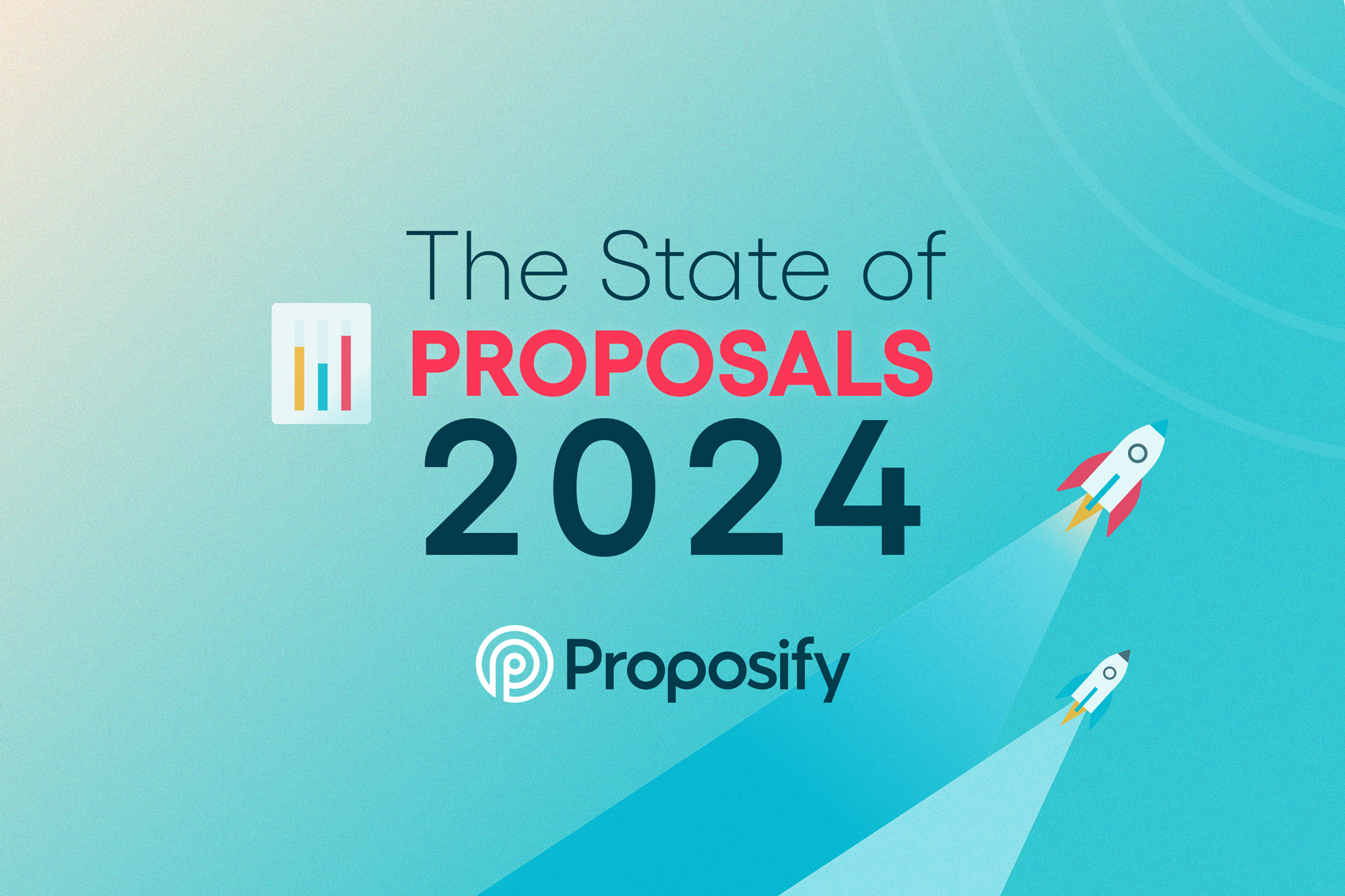
State of Proposals 2024
Distilling the data to reveal our top tips for doing more business by upping your proposal game.
- Book a Demo
- Market Research Proposal Template
Market Research Proposal Template To Close Deals
Companies that conduct market research and analysis can use our sample marketing research proposal template as an example of how to write a market research proposal, and as a guide when preparing survey proposals, data collection proposals, or business research.
This template allows you to explain your methodology for gaining qualitative and quantitative research, and provides a section to break down your research timeline into phases. It also includes a statement of work section to clarify what the customer will receive from the research, along with a detailed contract
- Download template
- Use in Proposify

Template details
All of our templates are 100% customizable so you can edit the copy, design, images, and layout to suit your business, brand, and client project. Our online signature feature delivers 60% faster client approval and makes the proposal legally binding.
- 100% customizable
- Edit and download
- Pre-written proposal letter example
- Interactive pricing tables
- Embed videos
- Free e-signature tool
Similar templates
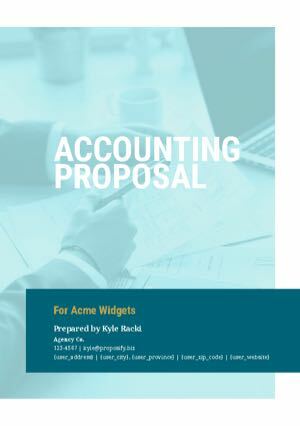
Don't waste another deal-breaking moment. Turn chaos into close.
- See plans & pricing
- Book a demo
| All accounts allow unlimited templates. | |||
| Create and share templates, sections, and images that can be pulled into documents. | |||
| Images can be uploaded directly, videos can be embedded from external sources like YouTube, Vidyard, and Wistia | |||
| You can map your domain so prospects visit something like proposals.yourdomain.com and don't see "proposify" in the URL | |||
| Basic | Team | Business | |
| All plans allow you to get documents legally e-signed | |||
| Allow prospects to alter the quantity or optional add-ons | |||
| Capture information from prospects by adding form inputs to your documents. | |||
| Basic | Team | Business | |
| Get notified by email and see when prospects are viewing your document. | |||
| Generate a PDF from any document that matches the digital version. | |||
| Get a full exportable table of all your documents with filtering. | |||
| Basic | Team | Business | |
| Connect your Stripe account and get paid in full or partially when your proposal gets signed. | |||
| Create your own fields you can use internally that get replaced in custom variables within a document. | |||
| All integrations except for Salesforce. | |||
| You can automatically remind prospects who haven't yet opened your document in daily intervals. | |||
| Lock down what users can and can't do by role. Pages and individual page elements can be locked. | |||
| Create conditions that if met will trigger an approval from a manager (by deal size and discount size). | |||
| Use our managed package and optionally SSO so reps work right within Salesforce | |||
| Our SSO works with identity providers like Salesforce, Okta, and Azure | |||
| Great for multi-unit businesses like franchises. Enables businesses to have completely separate instances that admins can manage. | |||
| Basic | Team | Business | |
| Our team is here to provide their fabulous support Monday - Thursday 8 AM - 8 PM EST and on Fridays 8 AM - 4 PM EST. | |||
| Sometimes the written word isn't enough and our team will hop on a call to show you how to accomplish something in Proposify. | |||
| Your own dedicated CSM who will onboard you and meet with you periodically to ensure you're getting maximum value from Proposify. | |||
| We'll design your custom template that is built with Proposify best-practices and train your team on your desired workflow. | |||
| Our team of experts can perform advanced troubleshooting and even set up zaps and automations to get the job done. |
Subscribe via email
Market Research Proposal Template
Capture clients' interest with this well-crafted Market Research Proposal Template – demonstrate research approach, expert knowledge, and potential results.

About this template
Secure more market research projects with our Market Research Proposal Template. Designed to showcase your research methodologies, expertise, and success stories, this visually engaging template demonstrates your capabilities and helps you win more business.
Capture the attention of potential clients by highlighting your unique approach to market research and the valuable insights you provide. Our Market Research Proposal Template is tailored to present the best of your research offerings, driving increased interest and bookings for your services.
What's included?
- Executive summary
- Timeline and costs
What is a Market Research Proposal?
A Market Research Proposal is a strategic document outlining the objectives, methodologies, timeline, and budget of a proposed research project. It's crucial in securing stakeholders' support by clearly communicating the project's value. Utilizing a proposal management system streamlines the creation and management of such proposals, ensuring efficiency, accuracy, and consistency in presenting the project's details and objectives to stakeholders.
Market research is vital for understanding target audiences and their preferences, uncovering new opportunities, and improving existing products or services.
Key elements in a proposal include clear research objectives, appropriate methodologies like surveys or interviews, a realistic timeline, and a well-planned budget covering all stages of the project. This essential document helps businesses efficiently conduct market research within their financial constraints.
When should you use a Market Research Proposal?
A Market Research Proposal is crucial when introducing a research project to stakeholders. It enhances the likelihood of securing internal funding or client approval. This proposal outlines the research's objectives, methodologies, expected outcomes, timeline, and budget.
Market research, a critical part of business strategy, provides insights into customers, competitors, and market trends. Your proposal should be tailored to meet stakeholder needs, focusing on the potential benefits for the company or how it can help external stakeholders achieve their goals.
Benefits of using Qwilr's Market Research Proposal Template?
Qwilr's Market Research Proposal Template offers several benefits that enhance your proposal creation process:
- User-Friendly : The template is designed to be simple and intuitive. You don't need advanced design skills to build an impressive, professional proposal.
- Customizable : You can tailor the template to meet your specific needs, including adding or removing sections, changing the color scheme and fonts, and uploading your company logos or images.
- Real-Time Collaboration : The platform allows for synchronous collaboration. You and your team can edit, comment, and fine-tune the proposal together, streamlining the process.
- Engagement Tracking : Qwilr provides analytics on proposal engagement, alerting you when someone views your proposal and how long they spend on each section.
- Responsive Design : With its adaptive design, your proposal will display correctly and attractively on any device, enhancing the user experience.
How do you use Qwilr's Market Research Proposal Template?
Here's a quick video overview of how to get started with this template:
Using Qwilr's Market Research Proposal Template is easy. To begin, simply select the template from the Qwilr library and customize it to match your needs. Add your business information, project objectives, and timeline for completion. You can also add visuals such as graphs or images that will help illustrate the proposal's key points. Once you're finished, share, and track engagement with your team or external clients.
A tool packed with features
Brand control.
Establish your brand settings once and automatically apply to every piece of collateral.
Collect payments instantly from customers with Stripe or direct to your own payment system.
Security & GDPR
Add security features like password protection and link expiry to protect sensitive content.
Embedded content
Add Calendly links, videos, surveys, Looms, GIFs and more to every page.
E-signature
Get deals signed on the spot with built-in e-signing ability.
Asset library
Create a library of reusable content for sales reps.
ROI calculator
Showcase your value with an interactive ROI calculator embedded in your Qwilr pages.
Team management
Set up permissions so your team accesses only what they need.
Interactive pricing
Empower buyers with interactive pricing plans and quotes.
Templates for every use case
Explore templates for sales, marketing, customer success, sales enablement and more.
- All templates
- Sales process
- Customer success
- Online brochure
- Sales proposal

Frequently asked questions
How do you write a market research proposal.
When writing a market research proposal:
- Start with an overview of the project's objective, methods, timeline, and budget.
- Describe the target market and research methodology, including the sampling method, sample size, data collection tool, and survey questions.
- Address potential limitations and provide a timeline for completion.
- Outline the budget and provide a breakdown of the cost estimate.
What are the components of market research proposal?
The components of a market research proposal include an overview of the project's objective, methods, timeline, and budget, as well as the target market and research methodology, a description of potential limitations, and a budget breakdown.
How do you create a market research proposal in Qwilr?
To create a market research proposal in Qwilr, select the Market Research Proposal Template and customize it to match your needs.
Add your business information, project objectives, and timeline for completion. You can also add visuals such as graphs or images that will help illustrate the proposal's key points.
Finally, share and track engagement with your team or clients.
How do you price a market research project?
To price a market research project, consider factors such as complexity, time, and manpower needed to carry out the research.
As a rule of thumb, pricing should be commensurate with the project's scope and level of effort.
It's also a good idea to evaluate the competition pricing to ensure you remain competitive without undercutting your work's value.
What makes an effective market research proposal?
An effective market research proposal clearly outlines the objective of the project, the research methodology, and the budget.
Detailed graphics and visual aids can help illustrate key points and make the proposal easier to understand. Additionally, a clear timeline for completion and potential limitations should be addressed.
Finally, it should be presented in a professional and visually-appealing format that can be easily shared and tracked.
Free Marketing Research Proposal Template
Fully editable with custom branding and templated offering.

Bonsai has helped create 1,023,928 documents and counting.

Table of contents

What is a Marketing research proposal?
A marketing research proposal is a document designed to sell your services by showing potential clients the research that you will carry out for their project. Whether you’re a freelance marketing consultant or you have your own marketing agency, a market research proposal will cover what research needs to be done, how you’ll go about it, and why they should choose you for the project.
A proposal is typically one of the first points of contact that you have with an organization. Therefore, it’s a chance to make a strong first impression.
Note: Sign up now to get your free marketing research proposal template that will make yours stand out for all the right reasons.
What to include in the Marketing research proposal
A market research proposal will outline your market research plan and each critical step you need to take to perform the necessary research. It usually consists of three parts.
- Introduction: This includes project objectives and scope, target market, and methodology, including data collection methods.
- Discussion: This covers existing knowledge of the market, case studies or competitor analysis, a project timeline, proposed budget, deliverables, and ethical considerations.
- Summary: This concludes what you expect to achieve from the market research, how it will support the initial objectives, and why your company is the best for the job.
Introduction
At the top of any market research proposal template should be the title of your document followed by who it has been written by and who it’s for. You can also include both company addresses here if you wish.
Proceed to outline the project description and the purpose of performing the market research. What are you trying to achieve? Why is this research needed? Who will be conducting it? What problem are you trying to solve for the client?
You should also include a methodology section in your introduction. The research methodology should dive into what primary and secondary research will be conducted, how data will be collected, and the expected outcomes. As a freelance researcher, you’ll already know this, but it’s worth covering what’s included in each to the client:
- Primary research is research that you carry out yourself in the form of two research methods: qualitative and quantitative research. Qualitative research relies on first-hand observation from things like interviews, questionnaires, and focus groups. Quantitative research, on the other hand, relies on the collection and analysis of data from an online survey and polls.
- Secondary research is research that has already been published and comes from secondary sources. This may include academic literature, print publications, and online studies.
It’s important to give an overview of your target audience in your methodology too.
For instance, if your client is trying to determine whether it’s a good time to launch a new product, your methodology in your market research proposal would explain how you plan to arrange a focus group with their target audience of females aged 16-24. Being present in the meeting, asking the right questions, and making notes to refer to later on would confirm whether the prospective product could be useful and — ultimately — successful.
The discussion section of your marketing research proposal is typically the meatiest. It’s where you should demonstrate what you already know about the industry and company, while getting into the finer details of the market research project.
- Existing Industry Knowledge: Prospective clients are likely going to want to hire someone who knows what they’re talking about. Right? Demonstrate that’s you by discussing the market and how it’s being affected in terms of the PEST analysis (politically, economically, socioculturally, and technologically). You can also cover case studies or a competitor analysis of companies that have already undertaken the same research and achieved similar goals.
- Timeline: For the research items that you listed in your methodology, include time frames of when each one will be conducted. You don’t have to be super precise here — it’s more about giving your client a realistic idea of the timings of key project milestones. However, exact details can be tweaked and laid out in a marketing research contract once your proposal and project quote has been approved.
- Proposed Budget: Any market research proposal template has to include a budgeting section. This is where you would break down how much you expect the research to cost, while offsetting it with how the client can make the most out of their investment. Just like with the timeline, the information doesn’t have to be exact at this stage. It’s more a rough estimate to ensure that the project expectations of both parties align.
- Deliverables: This section should answer any questions that a prospective client may have on the general organization of the project. In other words, it should tell them how you plan to present the research and its findings, whether it’s in the form of a one-off report, series of meetings, or collaborative Google Docs. You may choose to hand-deliver a printed copy of your findings or email through a PDF file. Either way, this section is a significant part of a market research proposal as the findings taken from the document need to be actionable by the marketing team.
- Ethical Considerations: This part of the market research proposal should outline any ethical issues that may arise throughout the course of your research, from conflicts of interest to concerns about supplier relationships. It should also cover how you plan to deal with participants, data gathering, and privacy issues before the project has even begun.
For example, you may write something like the following: “Each participant will be told that their input in this research is voluntary. They will be provided with a form to assure them that their data will remain confidential for the purposes of this research and won’t be used by third parties. They must sign this form in person or we can accept digital signatures to consent to these terms.”
The summary tends to be the shortest section of your market research proposal. It’s where you would refer back to the initial project objectives and conclude the desired outcomes from the market research.
It’s a good idea to end on a punchy note by describing why your potential client should become an actual client.
- What can your company offer to this project that no other company can?
- Why are you the perfect person or team to perform the research?
- What makes this proposal unique?
Don’t lose sight of the fact that you’re trying to convince somebody (or some people) of your value. You want them to take action after reading your proposal, which is why you should include a compelling Call-To-Action (CTA). Let them know what the next steps entail, and how to take them.
How to write a Marketing research proposal
The truth is, it’s difficult to draft a market research proposal without some key information from your prospective client.
To gather all of the details you need to create a winning marketing research proposal, follow the below steps.
Find out exactly what the client wants to achieve
During your initial email or phone discussion, ask your client what they want to get out of the research. Are they rebranding and want to redefine their target market? Or are they testing out a new product with a small group of people before unleashing it to the masses?
Either way, it’s useful to know their final goals so that you can start to make a plan on how to help them achieve them.
Discuss the finer details
Alongside your prospective client’s research objectives, you need to find out more details in terms of their:
- Target demographics
- Project deadline
- Project budget
You should also ask them if there’s any other key information that they would like you to include in the market research proposal. This will ensure that you have everything you need upfront without having to make extensive edits later on.
Figure out what sets you apart
Keep in mind that you haven’t been awarded the job yet. A work proposal is essentially a sales document — it almost serves as a resume before the client decides that you’re the ideal person to hire.
As such, do some company research to put you ahead of your competition. Is there a link you can make with the company based on your background and interests? Why should they care about you? What do you offer that no one else does?
Be sure to feature all of this information in your market researching proposal, and don’t be afraid of highlighting your strengths and wins.
Creating a Marketing research proposal is simple with Bonsai
There's plenty to think about when conducting marketing research, which is why you can make life a little simpler with Bonsai. Bonsai's all-in-one tool for small businesses, freelancers, and entrepreneurs streamlines administrative tasks and covers all bases when it comes to proposals, contracts, and invoices.
You can find a template specific to market research and edit it to meet your needs in minutes. Then all you have to do is send it off to your client, which you can do without even leaving the platform. Talk about a time- and energy-saver!
The marketing research proposal template is professional and refined in structure. This provides clarity to your potential client by laying out exactly what you can do for them within their timeline and budget.
Simply enter your information, sit back, and be prepared to wow your prospective client so much that they hire you on the spot.
Note : Sign up for free and get started!
Marketing research proposal FAQs
How long should a marketing research proposal be.
A market research proposal should be concise and fluff-free. It should cover all the obligatory information without dragging it out. After all, prospective clients are busy reviewing other proposals and working on further aspects of their business.
The perfect length is between 1-2 pages, but try to ensure that it’s no more than 3.
What should the tone and writing style of a marketing research proposal be?
Because your market research proposal is only a couple of pages long, the writing style should be clear and easy to read. The language should be simple, everyday, and familiar, using short sentences that get to the point and won’t clutter up the document.
The tone of your plan should be informative and position you as the expert to leave a positive, long-lasting impression on your prospective client.
What is the main purpose of marketing research?
Marketing research aims to investigate and assess how certain factors influence consumer behavior. This provides key insights that are relevant to decision making.
Marketing research can identify new business opportunities and avoid business failures. That said, above all, it can be used to inform a company’s marketing strategy to help them achieve their business goals.

How do you write a marketing research proposal?
What is market research and examples, what is research proposal template.
Marketing Agreement Template
Free Influencer Collaboration Agreement Template
Free Co Marketing Agreement Template
Free Social Media Contract Template
Free Social Media Invoice Template
Free SEO Invoice Template
Free Public Relations Invoice Template
Free Marketing Invoice Template
Free YouTube Marketing Proposal Template
Free Social Media Proposal (RFP)
Free Social Media Marketing Quotation Template
Free Digital Marketing Quotation Template
Free WordPress Website Proposal (PDF)
QuickBooks Proposal Template
Spec Sheet Template
Free Website Redesign Proposal Template
Free Website Proposal Template
Free Video Production Proposal Template
Free Website Development Proposal Template
Best Virtual Assistant Proposal (Free & Customizable)
Free Translation Proposal Template
Free UX Design Proposal Template
Free Software Development Proposal Template

Contact Us (315) 303-2040
- Market Research Company Blog
How to Write a Market Research Request for Proposal [+ Free Template]
by Emily Carroll
Posted at: 7/6/2022 12:30 PM

Writing a market research request for proposal (RFP) can seem like a daunting and overwhelming task.
The RFP process involves a lot of time, energy, and information gathering. This of course is all the work that comes before you've even started the massive task of reviewing the submissions and selecting a vendor.
Oftentimes it takes days if not weeks to review all the submissions as a team and find the best market research company that fits your needs.
But that's a little down the road for you.
Right now, you are either thinking about drafting a market research RFP, have recently started a market research RFP, or you are well into constructing it and you are looking for some tips to improve it.
Download Now: Free Market Research RFP Template

What You'll Learn in This Article
This post was designed to walk you through the market research RFP or RFQ process in greater detail.
Drive Research has broken down the core components of a market research RFP into sections.
Each section includes narratives on items you'll want to consider adding to your RFP and more importantly, why you should add it.
To skip to a section of most interest, click the navigation links below.
- Do you need market research?
- What are your objectives?
- Do you have a preferred methodology?
- If conducting customer research, what type of information do you have?
- Are there specific geographies or markets?
- What is your timeline?
- What type of reporting do you need?
- Do you have a budget?
- Determining who is responsible for rewards.
- Allowing bidding vendors to ask questions.
- What to look for when receiving your RFP back from a research firm.
It's critical to be as descriptive as possible with your requests and expectations in your RFP. This ensures the bids you receive can be comparable (apples to apples).
With that being said, there are some areas of the RFP where it may work to your benefit to be flexible and let the market research company decide on the best approach.
These more flexible sections are noted.
Before we start with specific components of the RFP, let's talk a little bit about market research in general. If you're at the beginning phases of the RFP process, the first question you might have is:
"Do I need market research?" 🤷♂️🤷♀️
Do You Need Market Research?
If you are at the point where you are considering a market research RFP for your organization, you've likely already arrived at this answer.
There are many benefits of market research .
Regardless of the type of project, market research provides managers with the knowledge, power, and confidence they need in their decision-making.
At a very high level, market research produces fact-based and evidence-based decisions to help fuel strategy.

Market research comes in many shapes and sizes.
Whether you are looking to conduct a brand equity study , customer satisfaction study , or an employee survey , market research will help you eliminate the risk of making the wrong decision or taking the wrong path.
Data is power. When collected and used correctly, data can fuel operational, marketing, and strategic initiatives at your company or organization.
To learn more about your options, read Types of Market Research to Consider .
Still need convincing? Do you really, really need market research?
The answer is most likely yes. All organizations can benefit from it.
The ROI of market research is:
- Bettering customer relationships
- Better understanding of consumer behavior
- Understanding the appeal of a new product or service
- Quantifying potential success
And much, much more.
Market research is purely objective and uses hundreds and thousands of data points to point your business in the right direction rather than using the opinion of 1 person or a few board members.
This video goes into detail about how market research can help businesses save money - a common objective Drive Research hears from clients.
💡 The Key Takeaway: Market research provides a host of benefits to a business. The more data you have, the better you’ll understand your customers, employees, competitors, and more.
What Are Your Objectives?
When structuring your market research RFP, you'll want to include your objectives.
The objectives section should be the first part of your RFP and it's arguably the most critical to the success of the research.
Be as clear and as specific as possible.
- Mention why you are requesting market research.
- Talk about what your expectations from the market research are.
- Discuss what you'd like as far as data and feedback to drive decision-making.
Most importantly, write about what you'd like to do with the market research results. The market research results are only as good as what is done with them.
Spend some time in your proposal for market research to discuss how you'd like the data to guide the next steps and action items.
Provide specifics on how you'd like the data and market research analysis to help guide initiatives at your company or organization. It is all about data-driven decision-making .
An RFP with clear and well-defined objectives will retrieve responses from market research firms that are more aligned and hit on all of your major goals.

Don't leave market research companies guessing your expectations.
It creates a lot of apples to oranges proposals because unclear objectives lead to different approaches.
It's important to tell the market research company and vendors what you are aiming for.
A few common objectives our market research firm has heard from our clients are:
- Level of customer satisfaction and individual factors driving high or low satisfaction.
- Performance of marketing or advertising campaigns.
- Customer experience with the company’s employees.
- Associations and perceptions of a brand.
- Sources of information and content used by target audiences.
💡 The Key Takeaway: Before you can write an RFP, you have to clearly state what your goals are. Having even a few clear objectives can simplify the process and avoid confusion down the road.
Do You Want a Specific Methodology?
The choice is up to you on this. Some organizations will specify a specific methodology or methodologies they'd like the market research companies to bid on.
For example, you may be looking for one type of quantitative or qualitative approach – or a hybrid of the two, such as Wave I of focus groups followed by Wave II of an online survey .
If you leave the methodology open for discussion and bid, the market research firms are given the flexibility to think outside of the box and present you with new perspectives on how to tackle your objectives.
Qualitative research
When you think of the qualitative method, think small-scale and detailed.
This type of research is considered exploratory–it’s all about the “why” in research. Answers in qualitative research are often found through focus groups and in-depth interviews (IDIs).
Quantitative research
This type of research is the direct opposite of qualitative research. Instead of small-scale, think large-scale and big sample sizes.
Careful measurements are the name of the game with quantitative research, instead of exploratory research. It’s all about reliable data and gathering large groups of respondents in order to get that (pristine) data.
Hybrid research
Sometimes you can have the best of both worlds.
Hybrid research simply is a mixture of qualitative and quantitative methodology. When conducting hybrid research, the qualitative portion typically comes first.
This is ideal because having key details prior to quantitative research allows for better insight.
What method you choose to conduct first is, of course, dependent on what your research goals are for your project.
Allowing flexibility in the choice of methodology produces both pros and cons for your company or organization.
- Pro: This may include a new or revolutionary way of tackling objectives you had not thought of before.
- Con: The downside of this approach is it makes the comparison between firms much more difficult.

The advantages of stating your choice of methodology 👍
If you are open to the market research companies suggesting the best approach it could work in your favor because they may be able to present a more cost-effective , quicker, and higher quality approach.
For example, let's say you want to conduct market research to understand the usage of your current website and how to improve it for the major website redesign overhaul occurring next year.
Instead of asking for 6 focus groups in the RFP document, you leave the methodology up for choosing.
In this scenario, a market research firm could send in a response that suggests conducting 40 1-on-1 user experience (UX) interviews utilizing screen share technology.
This approach would save you $10,000, get you results 3 weeks faster, and the results would incur no group bias .
The UX interviews is a methodology you didn't even know was a possibility because your team had tunnel vision on traditional focus groups .
The disadvantages of stating your choice of methodology 👎
Allowing the market research firm to choose the best methodology for your project may result in your bids looking something like this:
- Firm A presents Wave I of 8 focus groups and Wave II of 800 online survey completes.
- Firm B presents Wave I of 25 in-depth interviews and a Wave II of 400 phone survey completes.
- Firm C presents one wave of 1,500 online survey completes.
Can you see how difficult it would be to compare these proposals?
As shown from the 3 scopes above, making an apples-to-apples comparison on price and timeline would prove difficult because the scope differs so much.
💡 The Key Takeaway: It’s important to weigh the pros and cons of being flexible in choosing your market research methodology. Consulting your third-party team and going back through your key objectives can help narrow down the choice.
Recommended Reading: Conducting Market Research? How to Choose the Best Methodology
For Customer Research, What Type of Information Do You Have?
If your company or organization has a strong CRM or customer database it will help save the market research company time and money to target, invite, and qualify participants for the study or studies.
In this part of the request for a quote, you'll want to talk about your CRM or customer database.
- What type(s) of data and information do you have on hand?
- What type(s) of data don't you have?
This makes a difference in the scope and bidding for the market research company.

The difference in price 💰
For example, the answer to these questions can make a difference between a 20-question survey and a 40-question survey.
In this case, doubling the number of questions will likely result in a much higher cost.
If your CRM tool has a significant amount of customer data such as age, ZIP code, and income, this will save the market research company from having to ask these questions in the survey .
As a result, they can structure the cost of the project to be more budget-friendly.
The difference in approach 📈
If your company or organization can tie telephone numbers or addresses to the participants, this will help the market research firm understand if email surveys , phone surveys , or mail surveys are an option.
It will also help the market research know if reminder phone calls to those who do not respond to the email survey is an option or not.
The difference in quotas ♂️ ♀️
From a segmentation perspective, it will help the market research company develop quotas and audiences for targeting.
Let's say your focus groups want to pinpoint those aged 25 to 34 with children in their households.
If you have this data on-hand it will make targeting and recruiting much easier for the market research company than if they had to call or email your entire customer list to screen.
- Examples like these create a more accurate proposal. ☑️
- Examples like these are why you should at least touch on the breadth and depth of your database. ☑️
If the market research company understands these nuisances it will help them more accurately and efficiently bid on your market research RFP.
This is why you should think about listing the fields of data you have available in-house.
💡 The Key Takeaway: Never underestimate the power of a customer database and reference that in your request for proposal process. Getting their information can alter the money you spend, the approach you take, and targeting practices.
Recommended Reading: Ultimate Guide to Conducting Customer Satisfaction Surveys

Do You Have Relevant Target Markets?
Understanding where you want to conduct market research is another key touchpoint for your RFQ.
A couple of questions you’ll want to answer in your request would be:
- If you are a national company with customers that span across the country, are there specific markets you want to research? Why?
- Do these markets match the demographics of your customers or are you looking for a market research consultant to choose locations for the market research?
This is largely true with qualitative market research such as focus groups or in-person in-depth interviews (IDIs).
These types of studies incur large travel expenses and can add considerable length to the project timeline.
Another example of this would be feasibility studies .
If you are looking to test the feasibility of a new product or service , perhaps the market research firm should suggest some of the top test market cities in the United States for you.
Why test markets are useful.
These test market suggestions could prove useful to your market research for a number of reasons.
Test markets are typically isolated, offer affordable media, and the demographics resemble national averages.
The location will play a major role in the scope and cost of the market research .
Clearly defining where you want the market research targeted or held will help you receive comparable bids. If you leave this variable open, it could present a wide range of options and costs.
💡 The Key Takeaway: Knowing the areas you want to target during your research is essential information in the RFP process. Understanding the key areas you need to target can help determine which research to use.
Do You Have a Specific or Aggressive Timeframe?
Timing is everything. In your market research request for proposal, you'll want to clarify when you need the market research completed.
- Does the fieldwork have to be completed by a certain date?
- Do the analysis and the draft report need to be received by a certain date?
- Does the market research firm need to be on-site to present the findings on a specific date and time when your board is in town?
All of this information will be necessary to include in the RFP.
The timeline will dictate the scope and methodologies chosen⏰
Ideally, the more data the better. However, if the market research study needs to be fielded and concluded in two months, perhaps the intended 80 in-person IDIs will need to be limited to 40 IDIs.
Having a handle on these timelines assists the market research firm in planning.
If you are planning on the test product launching in 3-months, provide an expected date in the RFP so the market research firm can work its way backward.
Dates and deadlines for the market research are critical pieces for the RFP. Not only for the RFP submission and acceptance process but also for the study once fielded.
Dates add clarity and set expectations.
💡 The Key Takeaway: Having a project timeframe is crucial for success. This will help set the stage for additional deadlines and other important research factors.
Just how long does market research take? We answer that here.
What Type of Reporting Do You Need?
The type of analysis and reporting can have a major impact on cost . Without direction or structure, you may get several different levels of analysis in your RFP responses.
Some market research firms may produce a high-level summary document and that's it.
Other market research firms, like Drive Research, may provide you with options such as:
- An executive summary
- Recommendations
- Infographics
- Customer personas
- Hundreds of pages of banner runs
- A full Excel CSV file
One will charge you a few hundred dollars and the other will charge you thousands of dollars.
In the case of Drive Research, we offer various reporting packages to help fit into any budget. Most fall under either a topline or comprehensive market research report .
If you specify what you are looking for in the analysis and reporting it helps the market research company structure and plan for a report.
If you are looking for conjoint analysis, a Van Westendorp pricing model , TURF analysis, or regression , it will require some additional time and cost.
💡 The Key Takeaway: Spend time considering reporting resources for your RFP. Prices may vary greatly depending on your goals, and it’s important to understand the full range of what you need before heading into the project.
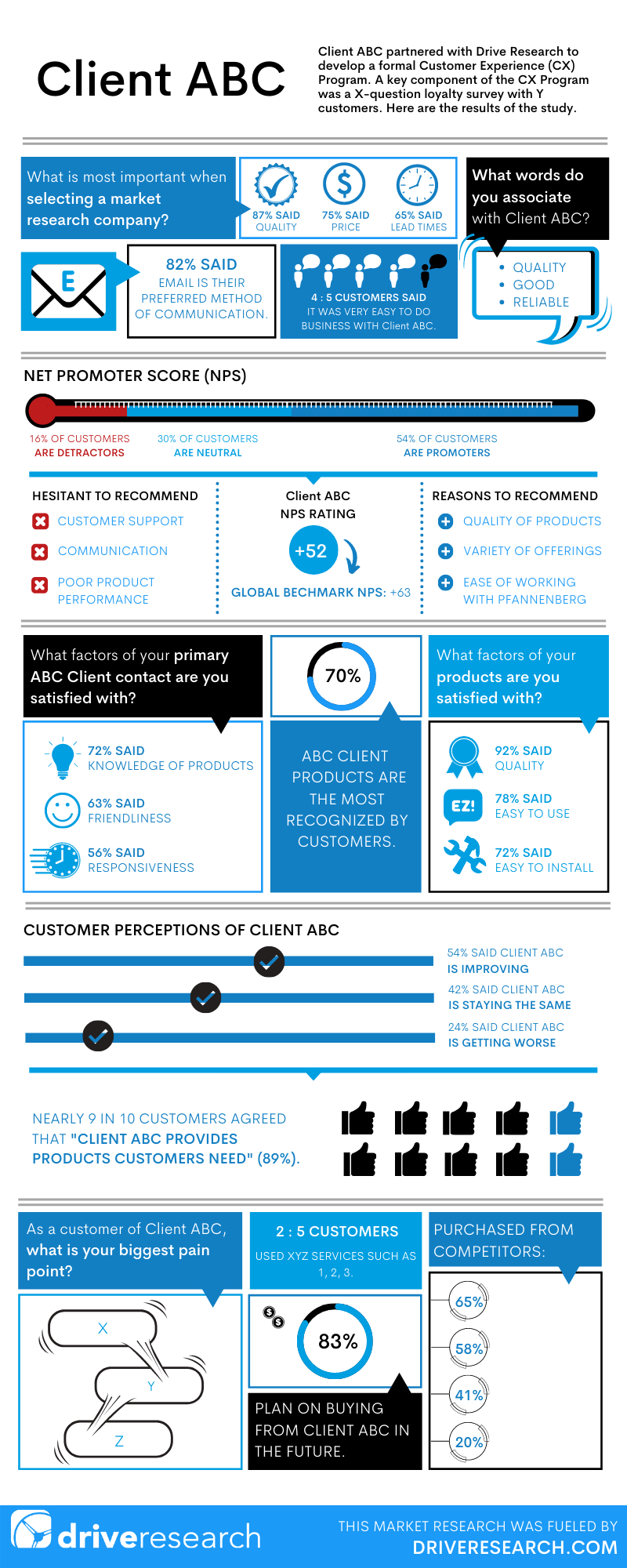
Sample Infographic in a Market Research Report by Drive Research
Do You Have a Budget or Budget Range?
This is an absolutely crucial piece of the request for proposal process.
The market research scope is often dictated by a budget. Market research companies want to present your company or organization with as much data as possible within your budget.
It's also understandably difficult for you to formulate because of the unknown. This is particularly true if you have never worked with a market research company before and are unsure of costs.
Defining some of the other categories we've listed in this article should help point you in the right direction of whether you are looking at an $8,000 project or $80,000 project.
The budget will dictate all recommendations and responses in a market research RFP.
It will guide methodology, timeline, geographies, analysis, and reporting. No one fact or figure in your RFP process will have more of an impact.
This is why it is critical to at least make an estimation or offer a range of your budget. Ask yourself or your team, what do you expect to spend?
As difficult as it sounds to list a budget or price range for your market research, it can prove crucial.
💡 The Key Takeaway: Budget cannot be emphasized enough when it comes to your market research request for proposal. Having a clear understanding of what your project will cost allows you to plan accordingly.
Recommended Reading: Should I Share My Project Budget with a Market Research Company?

Who Is Responsible for Rewards or Incentives for Participation?
One item in the RFP process that is often forgotten about but can have a large impact on cost is incentives or rewards.
Trust us, there are many reasons why you should offer a reward for your market research .
Do you have an idea of the rewards you want to pay for participation?
We suggest including some language on this because companies or organizations often have stipulations on what can or cannot be offered for participation.
Other companies have a stock and inventory of gifts and corporate items that can be given out as a thank you for participation.
If you have these types of rewards or an idea of what you'd like to offer participants, it will help to clarify this in the budget.
If you plan on fulfilling these in-house it could save the market research from overbidding on this in their RFP response by a few thousand dollars.
💡 The Key Takeaway: Don’t be afraid of offering rewards for participants–in fact, it can save you money. One reason being it may prevent overbidding if you offer rewards in-house.
Recommended Reading: Higher Rewards Can Lead to Lower Market Research Costs. Here's Why.
Will You Allow Bidding Vendors to Ask Questions?
Depending on your timeframe to accept bids, review bids, and make a decision, your company or organization will have to determine whether or not you are willing to have an open question and answer period.
Typically how the question and answer period works is you give vendors the opportunity to submit questions to you.
Here you will make it clear, no questions can be accepted after X date 🙅♂️
Then you give your company or organization a few days to review questions and write answers.
These answers are then posted to a public website for all vendors to review regardless of whether they have submitted a question or not.
Those who submitted questions are not singled out or labeled. The question and answer page is a section with generic questions with generic answers labeled 1 through 45 (or however many questions are received).
You'll likely receive several of the same or similar questions. In these situations, for the answer, you can write "refer to the answer on Q5".
💡 The Key Takeaway: Consider the factors that go into an open question and answer period with vendors. This involves setting a strict deadline, then taking time to answer questions.

What to Look For When Receiving RFPs Back From a Research Firm.
Now that you have a clearer picture of how to write a market research RFP, quote, or estimate, it is time to set expectations for what types of responses you will receive.
As a market research company, we know a thing or two about what to look for after you’ve requested the type of information included in this article.
Briefly consider these 4 factors before choosing your market research company.
1. Responsiveness 💨
We all know about those form fills or inquiries that go into the great abyss. In fact, we have sent many of these ourselves to unresponsive clients.
We have an immediate need, we reach out through a website form fill, and? Nothing. Silence.
Has this happened to you?
When you send your RFP to a market research company, test the responsiveness.
An organization that gets back to you within a few hours, or within 24 hours is likely a company that has it together and one you probably want to consider working with.
If you are waiting 6 days for a response it is probably telling you a larger story. Just think about this...
That company will never offer better customer service or work harder for you than when they are trying to win your business.
Once they have it won, it's likely to go downhill.
2. Excitement and Interest 😃
There is a difference between a market research vendor who takes on new clients to simply execute a process versus one who is actually interested and passionate about the work they are likely to perform.
Our team loves what we do. There are market research companies out there that exist who simply enjoy the process. Things like writing surveys, programming surveys , analyzing data, etc.
Passion often translates to higher quality work.
Be on the lookout for this in your communications via email, telephone, and in-person. Are they interested in you? Or are they just interested in making a quick buck?
3. Background and Experience 🧠
While it is important the RFP focuses on your company’s needs and specifications, it is also helpful to inquire about the background and expertise of these firms.
If you are deciding between several different research companies, ask follow-up questions about their history, staff experience, and case studies for your vertical.
For example, if you work in retail, find a market research company that has direct or correlated experience in retail .
If you work in higher education, find a market research company that has worked in the educational space .
The benefit of finding a company with relevant experience is two-fold:
- First, they are more likely to understand the nuisances of your industry.
- Second, they are able to make anecdotal comparisons and pull insights from other similar projects.
All in all, it creates a more comprehensive outcome for your market research.

4. Cost Options 💵
As discussed earlier, it will be helpful to provide market research companies with your estimated budget – however, we know this is not always possible.
If you are unable or uncomfortable with sharing your budget for research, the consultant should be happy to offer varying levels or pricing options.
For example, 400 survey responses are optimal. It offers an industry-standard +/- 5% margin of error . At the same time, 400 responses are more expensive than 200.
If the budget is tight, the market research company should be willing to be flexible to offer options for 200, 300, and 400 responses.
💡 The Key Takeaway: The main elements to consider when receiving your RFP responses are the following: responsiveness, interest, experience, and cost. These are all essential elements that go into picking the right partner.
Final Thoughts
The end goal with any market research request for proposal is to ensure you have a clearly defined process to acquire high-quality and credible market research company bids.
The market research proposal process should also help you create a decision matrix that will assist you and your team in your choice.
For a summary, here are the core components and topics to address in your market research RFP.
This is the checklist you can take back to your company's or organization's team to guide you in writing your RFP in market research:
- Main Objectives
- Secondary Objectives
- Methodology
- Database or CRM Information Available
- Geographies or Markets to Target
- Timeline for the Market Research
- Levels of Analysis and Reporting Needed
- Budget or Budget Range
- Rewards and Incentives
- Question and Answer Deadline
- Question and Answer Responses Posted by Date
- Number of Vendors Chosen for Follow-up and Dates
- Final Decision with 1 Vendor Date
Contact Drive Research for a Market Research RFP or Quote
Drive Research is a full-service market research company . Our clients span across the United States, as we work in a variety of industries and sectors.
Would you like Drive Research to bid on your RFP or RFQ? Contact us through any of the four ways below:
- Message us on our website
- Email us at [email protected]
- Call us at 888-725-DATA
- Text us at 315-303-2040

Emily Carroll
A SUNY Cortland graduate, Emily has taken her passion for social and content marketing to Drive Research as the Marketing Manager. She has earned certificates for both Google Analytics and Google AdWords.
Learn more about Emily, here .

Categories: Market Research Services Category
Need help with your project? Get in touch with Drive Research.
View Our Blog
Free Market Research Proposal Template That Wins Clients
Do you want a completely editable market research proposal template that brought more than $133 million in sales to companies worldwide in 2023 alone? Add, delete, or change sections as you see fit, make it your own, and improve your market outreach fast and easy.
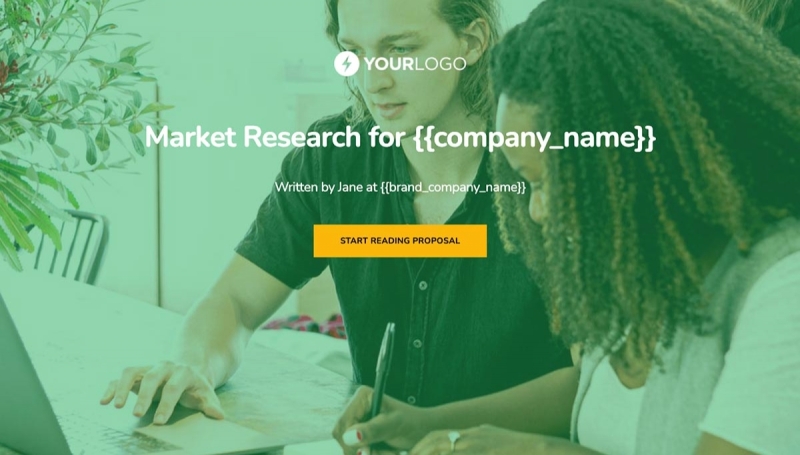
Everything you need is included
Looking for visually appealing and highly functional? You’ve got it. This template comes with a pre-built layout designed to help you create professional documents quickly and easily.
- Case study example
- Next steps with digital signing
- Pre-written contract
- Take payments from your clients
The first thing your client sees when your proposal shows up in their inbox is a nicely designed cover. As a business owner, you understand how hard it is to gain the client's attention, so the goal is to start the proposal with an attention-grabbing image.
You can change everything, from the text, logo, and background image to make it a better fit for your needs.
There is no better way to explain your market research plan to your potential clients than with our pre-written introduction section. It consists of a meeting summary, proposed research that includes everything from social media to focus groups, and a structured breakdown of your services. You just need to add a few client specifics and that's it.
Like everything else in this sample proposal, it's 100% editable - the colors, the text, images, layout - everything.
Explaining to the client the structure of each of the market research methodologies you are going to use can be difficult. You want to give enough detail about your data collection methods and how you generally conduct market research but not so much it seems overwhelming.
Fortunately, we created a plan of action already sectioned to fit the amount of information needed to design a perfect proposal. Just make a few adjustments to suit your exact process.
A client success story is a powerful tool in convincing your clients to close the deal. It gives you the perfect opportunity to show them that you understand their goals and objectives and have a way to make them come true. In this market research proposal template, we've set out an example case study.
All you need to do is replace our example with one of yours and use the structure we've used.
No matter if your pricing strategy includes charging hourly, monthly, or optional up-sell services, like special images and videos, you can do it all with this automatically calculated pricing table. The final steps are simple - just enter your numbers and a short description, and both your market research proposal and quotes are ready for your client's eyes.
Any business will eventually be tested in handling increased customer traffic. Lessen the strain of paperwork by choosing a digital signature over traditional mail. The 'Next steps' tab will allow you to explain your process after signing and offer a line for the customer to give their electronic consent.
Our digital signatures are legal and compliant. When your client signs, you can see their digital signature certificate in your Better Proposals account.
Whether you're just starting a company or you're a seasoned professional, Terms and Conditions will probably slip your mind when you're discussing some new market research projects. To ensure your business is still protected, we have added fully customizable T&Cs at the end of this template.
Getting paid - it's the hardest thing to do in business. The sooner and the easier you can get that money in your account, the better.
Using our integrations with Stripe, PayPal, and GoCardless, you can take a payment from your client the moment they sign your proposal.
Your docs, your branding
Set up your logo, brand colors, and fonts once to have them automatically embedded in all your documents.
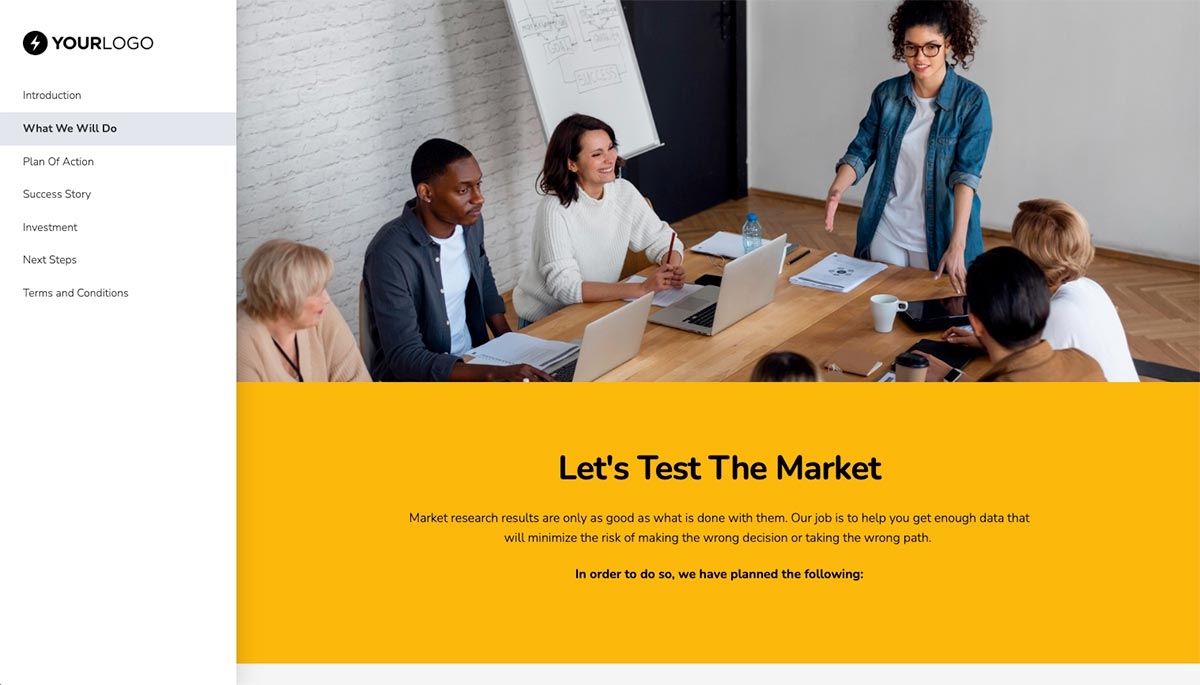
1. Let's begin

Reuse what works
Save your best work into the Content Library and use pre-built blocks to speed up your doc creation.

Become flawless
Leave embarrassing mistakes in the past. Use merge tags to automatically populate docs with the right information.
- {{company_name}}
- {{first_name}}
- {{last_name}}
- {{email_address}}
- {{brand_company_name}}
- {{owner_first_name}}
- {{owner_last_name}}
- {{owner_email_address}}
Create VIP experiences
Give clients an onboarding experience they won’t forget. Collect extra info with forms, let them book calls, get paid, or redirect them to your website.

Documents for all your project stages
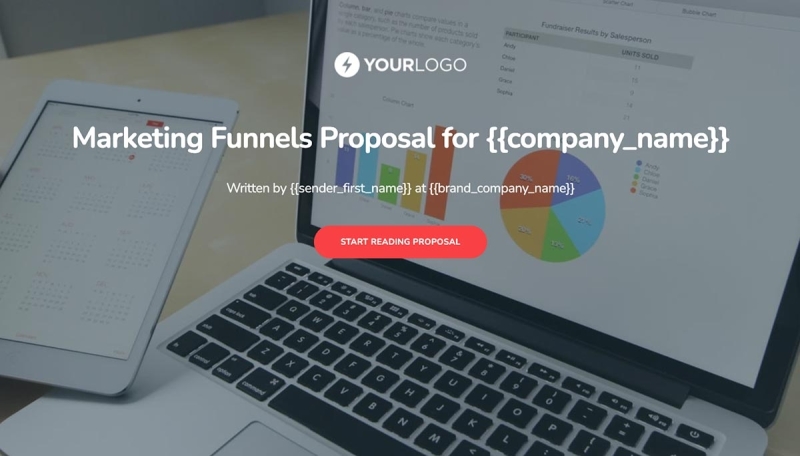
Marketing Funnels Quote Template
Quote template for any marketing company designing marketing funnels for clients.
View Template
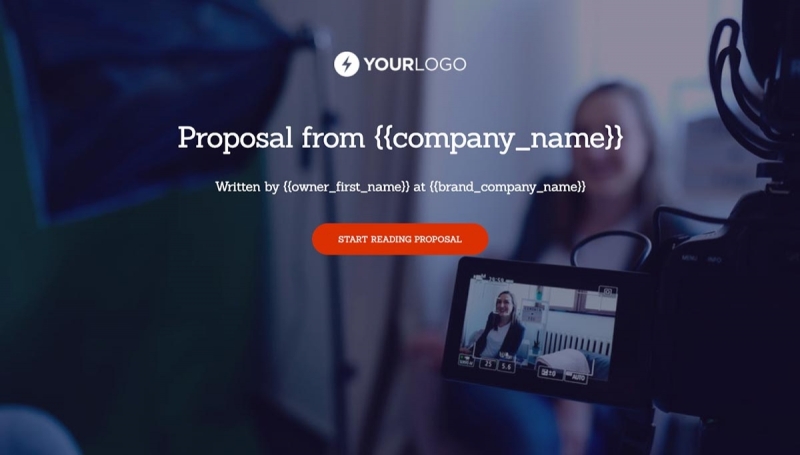
Video Plan or Storyboard Signoff
For video makers looking to get the storyboard or shoot plan approved by the client

Marketing Manager Job Offer Template
Spare your candidate from the hassle of handling physical paperwork with this modern job offer template with a built-in digital signature.
All categories
Your questions, answered.
Common questions about plans, designs and security
Templates that work for you, not against you
Start sending beautifully designed, error-free documents that inspire immediate trust with your clients. Automate tasks, track your deals, and always follow up at the right time.
Have a language expert improve your writing
Run a free plagiarism check in 10 minutes, generate accurate citations for free.
- Knowledge Base
- Starting the research process
- How to Write a Research Proposal | Examples & Templates
How to Write a Research Proposal | Examples & Templates
Published on October 12, 2022 by Shona McCombes and Tegan George. Revised on November 21, 2023.

A research proposal describes what you will investigate, why it’s important, and how you will conduct your research.
The format of a research proposal varies between fields, but most proposals will contain at least these elements:
Introduction
Literature review.
- Research design
Reference list
While the sections may vary, the overall objective is always the same. A research proposal serves as a blueprint and guide for your research plan, helping you get organized and feel confident in the path forward you choose to take.
Table of contents
Research proposal purpose, research proposal examples, research design and methods, contribution to knowledge, research schedule, other interesting articles, frequently asked questions about research proposals.
Academics often have to write research proposals to get funding for their projects. As a student, you might have to write a research proposal as part of a grad school application , or prior to starting your thesis or dissertation .
In addition to helping you figure out what your research can look like, a proposal can also serve to demonstrate why your project is worth pursuing to a funder, educational institution, or supervisor.
| Show your reader why your project is interesting, original, and important. | |
| Demonstrate your comfort and familiarity with your field. Show that you understand the current state of research on your topic. | |
| Make a case for your . Demonstrate that you have carefully thought about the data, tools, and procedures necessary to conduct your research. | |
| Confirm that your project is feasible within the timeline of your program or funding deadline. |
Research proposal length
The length of a research proposal can vary quite a bit. A bachelor’s or master’s thesis proposal can be just a few pages, while proposals for PhD dissertations or research funding are usually much longer and more detailed. Your supervisor can help you determine the best length for your work.
One trick to get started is to think of your proposal’s structure as a shorter version of your thesis or dissertation , only without the results , conclusion and discussion sections.
Download our research proposal template
Here's why students love Scribbr's proofreading services
Discover proofreading & editing
Writing a research proposal can be quite challenging, but a good starting point could be to look at some examples. We’ve included a few for you below.
- Example research proposal #1: “A Conceptual Framework for Scheduling Constraint Management”
- Example research proposal #2: “Medical Students as Mediators of Change in Tobacco Use”
Like your dissertation or thesis, the proposal will usually have a title page that includes:
- The proposed title of your project
- Your supervisor’s name
- Your institution and department
The first part of your proposal is the initial pitch for your project. Make sure it succinctly explains what you want to do and why.
Your introduction should:
- Introduce your topic
- Give necessary background and context
- Outline your problem statement and research questions
To guide your introduction , include information about:
- Who could have an interest in the topic (e.g., scientists, policymakers)
- How much is already known about the topic
- What is missing from this current knowledge
- What new insights your research will contribute
- Why you believe this research is worth doing
Prevent plagiarism. Run a free check.
As you get started, it’s important to demonstrate that you’re familiar with the most important research on your topic. A strong literature review shows your reader that your project has a solid foundation in existing knowledge or theory. It also shows that you’re not simply repeating what other people have already done or said, but rather using existing research as a jumping-off point for your own.
In this section, share exactly how your project will contribute to ongoing conversations in the field by:
- Comparing and contrasting the main theories, methods, and debates
- Examining the strengths and weaknesses of different approaches
- Explaining how will you build on, challenge, or synthesize prior scholarship
Following the literature review, restate your main objectives . This brings the focus back to your own project. Next, your research design or methodology section will describe your overall approach, and the practical steps you will take to answer your research questions.
| ? or ? , , or research design? | |
| , )? ? | |
| , , , )? | |
| ? |
To finish your proposal on a strong note, explore the potential implications of your research for your field. Emphasize again what you aim to contribute and why it matters.
For example, your results might have implications for:
- Improving best practices
- Informing policymaking decisions
- Strengthening a theory or model
- Challenging popular or scientific beliefs
- Creating a basis for future research
Last but not least, your research proposal must include correct citations for every source you have used, compiled in a reference list . To create citations quickly and easily, you can use our free APA citation generator .
Some institutions or funders require a detailed timeline of the project, asking you to forecast what you will do at each stage and how long it may take. While not always required, be sure to check the requirements of your project.
Here’s an example schedule to help you get started. You can also download a template at the button below.
Download our research schedule template
| Research phase | Objectives | Deadline |
|---|---|---|
| 1. Background research and literature review | 20th January | |
| 2. Research design planning | and data analysis methods | 13th February |
| 3. Data collection and preparation | with selected participants and code interviews | 24th March |
| 4. Data analysis | of interview transcripts | 22nd April |
| 5. Writing | 17th June | |
| 6. Revision | final work | 28th July |
If you are applying for research funding, chances are you will have to include a detailed budget. This shows your estimates of how much each part of your project will cost.
Make sure to check what type of costs the funding body will agree to cover. For each item, include:
- Cost : exactly how much money do you need?
- Justification : why is this cost necessary to complete the research?
- Source : how did you calculate the amount?
To determine your budget, think about:
- Travel costs : do you need to go somewhere to collect your data? How will you get there, and how much time will you need? What will you do there (e.g., interviews, archival research)?
- Materials : do you need access to any tools or technologies?
- Help : do you need to hire any research assistants for the project? What will they do, and how much will you pay them?
If you want to know more about the research process , methodology , research bias , or statistics , make sure to check out some of our other articles with explanations and examples.
Methodology
- Sampling methods
- Simple random sampling
- Stratified sampling
- Cluster sampling
- Likert scales
- Reproducibility
Statistics
- Null hypothesis
- Statistical power
- Probability distribution
- Effect size
- Poisson distribution
Research bias
- Optimism bias
- Cognitive bias
- Implicit bias
- Hawthorne effect
- Anchoring bias
- Explicit bias
Once you’ve decided on your research objectives , you need to explain them in your paper, at the end of your problem statement .
Keep your research objectives clear and concise, and use appropriate verbs to accurately convey the work that you will carry out for each one.
I will compare …
A research aim is a broad statement indicating the general purpose of your research project. It should appear in your introduction at the end of your problem statement , before your research objectives.
Research objectives are more specific than your research aim. They indicate the specific ways you’ll address the overarching aim.
A PhD, which is short for philosophiae doctor (doctor of philosophy in Latin), is the highest university degree that can be obtained. In a PhD, students spend 3–5 years writing a dissertation , which aims to make a significant, original contribution to current knowledge.
A PhD is intended to prepare students for a career as a researcher, whether that be in academia, the public sector, or the private sector.
A master’s is a 1- or 2-year graduate degree that can prepare you for a variety of careers.
All master’s involve graduate-level coursework. Some are research-intensive and intend to prepare students for further study in a PhD; these usually require their students to write a master’s thesis . Others focus on professional training for a specific career.
Critical thinking refers to the ability to evaluate information and to be aware of biases or assumptions, including your own.
Like information literacy , it involves evaluating arguments, identifying and solving problems in an objective and systematic way, and clearly communicating your ideas.
The best way to remember the difference between a research plan and a research proposal is that they have fundamentally different audiences. A research plan helps you, the researcher, organize your thoughts. On the other hand, a dissertation proposal or research proposal aims to convince others (e.g., a supervisor, a funding body, or a dissertation committee) that your research topic is relevant and worthy of being conducted.
Cite this Scribbr article
If you want to cite this source, you can copy and paste the citation or click the “Cite this Scribbr article” button to automatically add the citation to our free Citation Generator.
McCombes, S. & George, T. (2023, November 21). How to Write a Research Proposal | Examples & Templates. Scribbr. Retrieved July 30, 2024, from https://www.scribbr.com/research-process/research-proposal/
Is this article helpful?
Shona McCombes
Other students also liked, how to write a problem statement | guide & examples, writing strong research questions | criteria & examples, how to write a literature review | guide, examples, & templates, what is your plagiarism score.
Root out friction in every digital experience, super-charge conversion rates, and optimize digital self-service
Uncover insights from any interaction, deliver AI-powered agent coaching, and reduce cost to serve
Increase revenue and loyalty with real-time insights and recommendations delivered to teams on the ground
Know how your people feel and empower managers to improve employee engagement, productivity, and retention
Take action in the moments that matter most along the employee journey and drive bottom line growth
Whatever they’re are saying, wherever they’re saying it, know exactly what’s going on with your people
Get faster, richer insights with qual and quant tools that make powerful market research available to everyone
Run concept tests, pricing studies, prototyping + more with fast, powerful studies designed by UX research experts
Track your brand performance 24/7 and act quickly to respond to opportunities and challenges in your market
Explore the platform powering Experience Management
- Free Account
- Product Demos
- For Digital
- For Customer Care
- For Human Resources
- For Researchers
- Financial Services
- All Industries
Popular Use Cases
- Customer Experience
- Employee Experience
- Net Promoter Score
- Voice of Customer
- Customer Success Hub
- Product Documentation
- Training & Certification
- XM Institute
- Popular Resources
- Customer Stories
- Artificial Intelligence
Market Research
- Partnerships
- Marketplace
The annual gathering of the experience leaders at the world’s iconic brands building breakthrough business results, live in Salt Lake City.
- English/AU & NZ
- Español/Europa
- Español/América Latina
- Português Brasileiro
- REQUEST DEMO
- Experience Management
- Market Research Templates
Try Qualtrics for free
Market research templates: what they are and how to use them.
18 min read Interested in market research but need some templates to start with? In this guide, we unpack market research, survey planning best practice and share some of our best templates for brand, customer, product and employee research.
What is a market research template?
While you’re no doubt familiar with the concept of market research and how it can help you to reach your target audiences and improve your product or service , the real challenge is designing a market research plan that is conducive to excellent results.
All of this starts with the right market research template(s) to help you analyze specific target audiences, collect the right data and uncover insights that can drive actionable change.
In this article, we’re going to:
- talk about market research and its use cases,
- provide you with a standard template that allows you to plan your research,
- and share several other templates to help you with specific types of market research
You can also check out our free template library.
But first, let’s revisit market research.
What is market research?
Market research is the process of determining the viability of a new service or product through surveys and questionnaires with prospects and/or customers. It involves gathering information about market needs and prospect/customer preferences .
Through market research, you can discover and/or refine your target market, get opinions and feedback on what you provide to them and uncover further prospect/customer pain points and expectations of your service or product .
Market research can be conducted in-house, either by you and your research team, or through a third-party company that specializes in it (they will typically have their own research panels or be capable of creating a research panel to suit your requirements).
The four common types of market research
There are lots of different ways to conduct market research to collect customer data and feedback , test product concepts , and do brand research, but the four most common are:
The most commonly used form of market research, surveys are a form of qualitative research that asks respondents a series of open or closed-ended questions , delivered either as an on-screen questionnaire or email.
Surveys are incredibly popular because they’re cheap, easy to produce, and can capture data very quickly, leading to faster insights.
2) Focus groups
Why not bring together a carefully selected group of people in your target market using focus groups? Though more expensive and complex than surveys and interviews, focus groups can offer deeper insight into prospect and customer behavior – from how users experience your products and services to what marketing messages really resonate with them.
Of course, as a market research method that’s reliant on a moderator to steer conversation, it can be subject to bias (as different moderators might have preferred questions or be more forceful) and if you cut corners (not asking all the necessary questions or making assumptions based on responses), the data could get skewed.
3) Observation
As if you were a fly-on-the-wall, the observation market research method can be incredibly powerful. Rather than interviewing or surveying users, you simply take notes while someone from your target market/target audience engages with your product . How are they using it? What are they struggling with? Do they look as though they have concerns?
Observing your target audience/target market in this fashion is a great alternative to the other more traditional methods on this list. It’s less expensive and far more natural as it isn’t guided by a moderator or a predefined set of questions. The only issue is that you can’t get feedback directly from the mouth of the user, so it’s worth combining this type of research with interviews, surveys, and/or focus groups.
4) Interviews
Interviews allow for face-to-face discussions (both in-person and virtually), allowing for more natural conversations with participants.
For gleaning deeper insights (especially with non-verbal cues giving greater weight to opinions), there’s nothing better than face-to-face interviews. Any kind of interview will provide excellent information, helping you to better understand your prospects and target audience/target market.
Use cases for market research
When you want to understand your prospects and/or customers, but have no existing data to set a benchmark – or want to improve your products and services quickly – market research is often the go-to.
Market research (as mentioned above), helps you to discover how prospects and customers feel about your products and services, as well as what they would like to see .
But there are more use cases and benefits to market research than the above.
Reduce risk of product and business failure
With any new venture, there’s no guarantee that the new idea will be successful. As such, it’s up to you to establish the market’s appetite for your product or service. The easiest way to do this is through market research – you can understand the challenges prospects face and quickly identify where you can help. With the data from your market survey, you can then create a solution that addresses the needs and expectations of would-be customers.
Forecast future trends
Market research doesn’t just help you to understand the current market – it also helps you to forecast future needs. As you conduct your research and analyze the findings, you can identify trends – for example, how brands and businesses are adopting new technology to improve customer experiences or how sustainability is becoming a core focus for packaging. Whatever it is you’re looking to understand about the future of business in your market, comprehensive market research can help you to identify it.
Stay ahead of the competition
Understanding your market and what prospects and customers want from you will help to keep you ahead of the competition . The fact is that the top businesses frequently invest in market research to get an edge, and those that don’t tap into the insights of their audience are missing low-hanging fruit.
As well as helping you to stay in front, you can also use market research to identify gaps in the market, e.g. your competitors’ strengths and weaknesses . Just have participants answer questions about competitor products/services – or even use the products/services – and work out how you can refine your offerings to address these issues.
Plan more strategically
What’s the foundation of your business strategy? If it’s based on evidence, e.g. what people expect of your products and services, it’ll be much easier to deliver something that works. Rather than making assumptions about what you should do, market research gives you a clear, concrete understanding of what people want to see.
Check out our guide to market research for a more comprehensive breakdown.
How do you write a market research plan/template?
A market research plan is very similar to a brief in that it documents the most vital information and steps about your project. Consider it a blueprint that outlines your main objective (summary), key questions and outcomes, target audience and size, your timeline, budget, and other key variables.
Let’s talk about them in more detail.
Elements of a great market research plan
1) overview or summary.
Use the first section of your market research plan to outline the background to the problem that you are attempting to solve (this is usually your problem statement or problem question). Include background information on the study’s purpose and the business to provide context to those who would read the report, as well as the need for the research. Keep the overview simple and concise; focus on the most salient elements.
2) Objectives
What is it that you hope to achieve with this survey? Your objectives are the most important part of the survey. Make sure to list 3-5 of the decisions or initiatives that the research will influence.
For example:
Understand the most-used channels for customer engagement and purchasing to decide where to prioritize marketing and sales budget in Q1 2022. Determine what’s causing customer churn at the later stages of the buyer journey and implement a new retention and sales strategy to address it.
Your objectives should be smart, that is: Specific, Measurable, Attainable, Relevant, and Timely.
3) Deliverables (or outcomes)
This section should focus on what you expect to have at the end of the project. How many responses are you looking for? How will the data be presented? Who will the data be shared with? (Stakeholders, executives) What are your next steps? Make sure you state how you will collect and analyze the data once it’s available.
Products such as Qualtrics CoreXM make this process fast and incredibly easy to do, drastically reducing the time to insights so you can make more meaningful changes, faster.
4) Target audience
Not to be confused with your market research sample, your target audience represents who you want to research. Of course, your sample may include ideal buyers from your target audience. Here you want to define the main variables or factors of your audience: demographic , age, location , product interaction, experience, and so on. It’s worth building out your buyer personas (if you haven’t already) and including a quick breakdown of them here.
5) Sample plan
How many participants do you want to research and what kind of groups do you want to reach? Depending on these two variables, you may have to use qualitative, quantitative , or multi-method approaches.
6) Research methods
What methods will you use in your market research project? The insights (and the granularity of those insights) will depend on the methods and tools you choose. For example, and as mentioned earlier, surveys are often the go-to for many organizations as they’re affordable and straightforward, but if you want to get more personal views from your respondents, one-to-one interviews might be more applicable. You might even want to take a hands-off approach and simply observe participants as they use your products, or try a combination of research methods. Make sure to outline what methods you will use as part of your research plan.
7) Timeline
How long will your research project run? It’s worth putting together a Gantt chart to highlight key milestones in the project, along with dependencies, and to break down tasks as much as possible. Schedule in contingency time in case some tasks or research runs over – or you need more responses.
Set a budget for the overall program and list it in your plan. Though this might be the most difficult aspect of any research plan, it helps you to be more strategic about tasks and hold people accountable at each stage of the process. If costs go over, that’s good to know for future market research. If costs are lower than anticipated, you then have the opportunity to do further research or prop up other areas of the study.
9) Ethical concerns or conflicts of interest
One of the most important parts of your market research plan, you should highlight any ethical concerns. To begin with, it’s your duty to state whether or not responses will be kept confidential and anonymous as part of the study. It’s also important to allow participants to remain anonymous and ensure you protect their privacy at all times.
Another issue to consider is stereotyping. Any analysis of real populations needs to make approximations and place individuals into groups, but if conducted irresponsibly, stereotyping can lead to undesirable results.
Lastly, conflicts of interest – it may be that researchers have interests in the outcome of the project that lead to a personal advantage that might compromise the integrity of your market research project. You should clearly state in your market research report that any potential conflicts of interest are highlighted and addressed before continuing.
But I want a faster solution!
Well, there’s a quicker and far easier way to do all of the above and get the data you need – just use a market research survey template. In our next section, we’re going to share a whole list of templates that you can use.
Free market research survey templates
No matter what kind of research you want to conduct, we have templates that will remove the complexity of the task and empower you to get more from your data. Below we’ve compiled a list of templates for four key experience areas: Brand , Customer , Employee , and Product .
All of our research templates are free. All you need to do is sign up for a free Qualtrics account to access them.
Brand experience market research templates:
- Logo testing : Collect feedback to help you evaluate and iterate on your logo designs and concepts
- Brand awareness : Track the level of brand awareness in your target market, including current and potential future customers
- Ad testing : Evaluate your consumers’ reaction to an advertisement so you know which campaigns to deploy before you invest
- A/B testing : Quickly and easily compare to versions or options in a study, whether it’s a design, headline, color palette or a mock-up of your latest ad campaign
Customer experience market research templates
- Student satisfaction : Gather feedback on how your institution is delivering on the student experience
- Net promoter score (NPS) : Measure customer loyalty and understand how they feel about your product or service using one of the world’s best-recognized metrics
- Customer satisfaction : Evaluate how satisfied your customers are with your company, including the products and services you provide, and how they are treated when they buy from you
- Customer service : Gain insights into the contact center experience, so you can achieve and maintain optimum levels of customer experience (CX) performance
- Event feedback : Measure the effectiveness of your events and how well they meet attendee expectations so that you can continuously improve your offering
- IT help desk : Understand how satisfied your employees and customers are with your IT help desk experience
- Website suggestion box : Collect visitor feedback on how your website can be improved
- Website satisfaction : Find out how satisfied visitors are with your website’s design, usability, and performance
- Store purchase feedback : Capture customer experience data at the point of purchase to help you improve the in-store experience
- Online purchase feedback : Find out how well your online shopping experience performs against customer needs and expectations
Employee experience market research templates
- Employee satisfaction : Get an overview of your current employee experience
- Manager feedback : Improve your skills as a leader with valuable feedback from your team
- Employee engagement : Find out how employees find the current experience at your workplace with this entry-level engagement survey
- Employee exit interview : Understand why your employees are leaving and how they’ll speak about your company once they’re gone with this survey template
- Employee onboarding : Improve your onboarding program by understanding what’s working and what’s not
- Team event planning : Collect inputs from employees to plan a team event that works for everyone
- Meeting feedback : Check-in with team members after a meeting to see how well your company is running and what improvements can be made
- Interview feedback : Improve your candidate experience by gathering actionable insights about the interview process
- Employee suggestion box : Gather anonymous data to help address concerns and improve the employee experience in your organization
- Candidate experience : Improve your candidate experience to increase brand perception, offer acceptance rates, and hiring process efficiency with this single-touchpoint survey template
- Employee suggestion action : Take employee feedback a step further by working with your staff to quantify solutions based on their experience data
Product experience market research templates
- Product research : Evaluate your consumers’ reaction to a new product or product feature across every stage of the product development journey
- Pricing : Understand how to set the exact price point for your product or service, according to your target consumers
- Feature prioritization : Compare and contrast product features using conjoint analysis to find the optimal mix for your customers
- Product package testing : Collect feedback on your product packaging to see how well it meets the needs and expectations of your customers
Armed with the right market research templates, getting the information you need across brand, product, customer and employee disciplines — as well as beyond — is significantly easier.
But if you want help putting together complex market research and scaling your in-house research team to get agile insights, check out our guide to building an agile research function.
Insights are more important than ever, especially during times of change, but building a great team takes a lot of time and money.
In our eBook, we’ll explain how you can:
- Scale your research team
- Build a smart partner strategy
- Ensure you have the right technology for market research and data analysis
Tackle your market research with our agile market research eBook
Related resources
Market intelligence 10 min read, marketing insights 11 min read, ethnographic research 11 min read, qualitative vs quantitative research 13 min read, qualitative research questions 11 min read, qualitative research design 12 min read, primary vs secondary research 14 min read, request demo.
Ready to learn more about Qualtrics?
- Starting a Business
Our Top Picks
- Best Small Business Loans
- Best Business Internet Service
- Best Online Payroll Service
- Best Business Phone Systems
Our In-Depth Reviews
- OnPay Payroll Review
- ADP Payroll Review
- Ooma Office Review
- RingCentral Review
Explore More
- Business Solutions
- Entrepreneurship
- Franchising
- Best Accounting Software
- Best Merchant Services Providers
- Best Credit Card Processors
- Best Mobile Credit Card Processors
- Clover Review
- Merchant One Review
- QuickBooks Online Review
- Xero Accounting Review
- Financial Solutions
Human Resources
- Best Human Resources Outsourcing Services
- Best Time and Attendance Software
- Best PEO Services
- Best Business Employee Retirement Plans
- Bambee Review
- Rippling HR Software Review
- TriNet Review
- Gusto Payroll Review
- HR Solutions
Marketing and Sales
- Best Text Message Marketing Services
- Best CRM Software
- Best Email Marketing Services
- Best Website Builders
- Textedly Review
- Salesforce Review
- EZ Texting Review
- Textline Review
- Business Intelligence
- Marketing Solutions
- Marketing Strategy
- Public Relations
- Social Media
- Best GPS Fleet Management Software
- Best POS Systems
- Best Employee Monitoring Software
- Best Document Management Software
- Verizon Connect Fleet GPS Review
- Zoom Review
- Samsara Review
- Zoho CRM Review
- Technology Solutions
Business Basics
- 4 Simple Steps to Valuing Your Small Business
- How to Write a Business Growth Plan
- 12 Business Skills You Need to Master
- How to Start a One-Person Business
- FreshBooks vs. QuickBooks Comparison
- Salesforce CRM vs. Zoho CRM
- RingCentral vs. Zoom Comparison
- 10 Ways to Generate More Sales Leads
Business.com aims to help business owners make informed decisions to support and grow their companies. We research and recommend products and services suitable for various business types, investing thousands of hours each year in this process.
As a business, we need to generate revenue to sustain our content. We have financial relationships with some companies we cover, earning commissions when readers purchase from our partners or share information about their needs. These relationships do not dictate our advice and recommendations. Our editorial team independently evaluates and recommends products and services based on their research and expertise. Learn more about our process and partners here .
How to Create a Market Research Plan
Before starting a business, you want to fully research your idea. A market research plan will help you understand your competition, the marketplace and more.

Table of Contents
While having a great idea is an important part of establishing a business, you’ll only get so far without laying the proper groundwork. To help your business take off, not only do you need to size up the competition, but you also need to identify who will buy your product, how much it will cost, the best approach to selling it and how many people will demand it.
To get answers to these questions, you’ll need a market research plan, which you can create yourself or pay a specialist to create for you. Market research plans define an existing problem and/or outline an opportunity. From there, the marketing strategy is broken down task by task. Your plan should include objectives and the methods that you’ll use to achieve those objectives, along with a time frame for completing the work.
What should a market research plan include?
A market research plan should provide a thorough examination of how your product or service will fare in a defined area. It should include:
- An examination of the current marketplace and an analysis of the need for your product or service: To know where you fit in the market, it’s important to have a broad understanding of your industry — covering everything from its annual revenue to the industry standards to the total number of businesses operating within it. Start by gathering statistical data from sources like the U.S. Bureau of Labor Statistics and BMI Research and consider the industry’s market size, potential customer base and how external factors such as laws, technology, world events and socioeconomic changes impact it.
- An assessment of the competition: By analyzing your competitors, you can discover strategies to fill market gaps. This involves identifying well-known competitors and noting trends they employ successfully, scrutinizing customer feedback about businesses in your sector, such as through online reviews, and understanding competitors’ product or service offerings. This knowledge can then guide the refinement of your own products or services to differentiate them from others in the market.
- Data about customers: Identify which segment of potential customers in your industry you can effectively target, considering their demographics — such as age, ethnicity, income and location and psychographics, including beliefs, values and lifestyle. Learn about the challenges your customers face in their daily lives and determine how the features and benefits of your offerings address their needs.
- The direction for your marketing in the upcoming year: Your plan should provide a clear roadmap for your marketing strategies for the next year, focusing on approaches to distinguish your brand from competitors. Develop marketing messages that resonate with and display empathy toward your target market and find ways to address customers’ needs and demonstrate value.
- Goals to be met: Outline goals your business would like to achieve and make these goals clear to all employees on your team. Create goals that are realistic and attainable while also making a meaningful impact on the business’s growth. Consider factors including your target number of products or services, the expected number of units to sell based on market size, target market behavior, pricing for each item and the cost of production and advertising.
How to create your market research plan
Doing business without having a marketing plan is like driving without directions. You may eventually reach your destination, but there will be many costly and time-consuming mistakes made along the way.
Many entrepreneurs mistakenly believe there is a big demand for their service or product but, in reality, there may not be, your prices may be too high or too low or you may be going into a business with so many restrictions that it’s almost impossible to be successful. A market research plan will help you uncover significant issues or roadblocks.
Step 1. Conduct a comprehensive situation analysis.
One of the first steps in constructing your marketing plan is to create a strengths, weaknesses, opportunities and threats (SWOT) analysis , which is used to identify your competition, to know how they operate and then to understand their strengths and weaknesses.
Strengths | Strengths to include in your plan should encompass competitive advantages. These advantages can include the talent, proficiency and expertise of you and/or your executive team that can help improve the position of your company in the marketplace. |
|---|---|
Weaknesses | Weaknesses are factors that reduce the ability of your company to independently achieve its objectives, such as outdated production tools, unreliable delivery and a lack of planning. |
Opportunities | Opportunities are ways that your business can grow and become more profitable. |
Threats | Threats would be things that prevent you from entering into a primary market, such as political developments or a labor shortage. |
Step 2: Develop clear marketing objectives.
In this section, describe the desired outcome for your marketing plan with realistic and attainable objectives, the targets and a clear and concise time frame. The most common way to approach this is with marketing objectives, which may include the total number of customers and the retention rate, the average volume of purchases, total market share and the proportion of your potential market that makes purchases.
Step 3: Make a financial plan.
A financial plan is essentia l for creating a solid marketing plan. The financial plan answers a range of questions that are critical components of your business, such as how much you intend to sell, what will you charge, how much will it cost to deliver your services or produce your products, how much will it cost for your basic operating expenses and how much financing will you need to operate your business.
In your business plan, be sure to describe who you are, what your business will be about, your business goals and what your inspiration was to buy, begin or grow your business.
Step 4: Determine your target audience.
Once you know what makes you stand out from your competitors and how you’ll market yourself, you should decide who to target with all this information. That’s why your market research plan should delineate your target audience. What are their demographics and how will these qualities affect your plan? How do your company’s current products and services affect which consumers you can realistically make customers? Will that change in the future? All of these questions should be answered in your plan.
Step 5: List your research methods.
Rarely does one research avenue make for a comprehensive market research plan. Instead, your plan should indicate several methods that will be used to determine the market share you can realistically obtain. This way, you get as much information as possible from as many sources as possible. The result is a more robust path toward establishing the exact footprint you desire for your company.
Step 6: Establish a timeline.
With your plan in place, you’ll need to figure out how long your market research process will take. Project management charts are often helpful in this regard as they divide tasks and personnel over a timeframe that you have set. No matter which type of project management chart you use, try to build some flexibility into your timeframe. A two-week buffer toward the home stretch comes in handy when a process scheduled for one week takes two — that buffer will keep you on deadline.
Step 7: Acknowledge ethical concerns.
Market research always presents opportunities for ethical missteps. After all, you’ll need to obtain competitor information and sensitive financial data that may not always be readily available. Your market research plan should thus encourage your team to not take any dicey steps to obtain this information. It may be better to state, “we could not obtain this competitor information,” than to spy on the competitor or pressure their current employees for knowledge. Plus, there’s nothing wrong with simply feeling better about the final state of your plan and how you got it there.
Using a market research firm
If the thought of trying to create your own market research plan seems daunting or too time-consuming, there are plenty of other people willing to do the work for you.
Pros of using a market research firm
As an objective third party, businesses can benefit from a market research firm’s impartial perspective and guidance, helping to shape impactful brand strategies and marketing campaigns. These firms, which can help businesses with everything from their marketing campaigns to brand launches, deliver precise results, drawing on their expertise and experience to provide in-depth insights and solutions tailored specifically to your company’s needs.
Even more, working with a market research firm can elevate a brand above the competition, as they provide credible and unique research that is highly valued by the media, enhancing brand credibility and potentially increasing website traffic, social media shares and online visibility.
Cons of using a market research firm
Although hiring a firm can provide businesses with tremendous results, certain downsides can lead a business toward the do-it-yourself route. Most notably, market research firms can be a costly expense that some businesses can’t afford. However, businesses that can allocate the funds will likely see a positive return on investment, as they are paying for the expertise and proficiency of seasoned professionals in the field.
Additionally, finding the right market research firm for your business’s needs can take some time — and even longer, ranging from weeks to months, for a market research firm to complete a plan. This lack of immediate results can be detrimental for businesses that don’t have the time to wait.
Market research firms can charge into the thousands of dollars for a market research plan, but there are ways to get help more affordably, including:
- Outline your plans carefully and spell out objectives.
- Examine as many sources as possible.
- Before paying for any information, check with librarians, small business development centers or market research professors to see if they can help you access market research data for free.
- You may think you’ll need to spend a hefty sum to create a market research plan, but there are plenty of free and low-cost sources available, especially through university business schools that will guide you through the process.
Miranda Fraraccio contributed to this article.

Get Weekly 5-Minute Business Advice
B. newsletter is your digest of bite-sized news, thought & brand leadership, and entertainment. All in one email.
Our mission is to help you take your team, your business and your career to the next level. Whether you're here for product recommendations, research or career advice, we're happy you're here!
4+ SAMPLE Market Research Proposal in PDF
Market research proposal, 4+ sample market research proposal, what is a market research proposal, different types of market research proposal, benefits of a market research proposal, basic components of a market research proposal , how to write a market research proposal, what are the different types of market research, what are the fundamental elements of a market research proposal, what are the basic methods of creating a research proposal, what are the general types of market research methodologies.
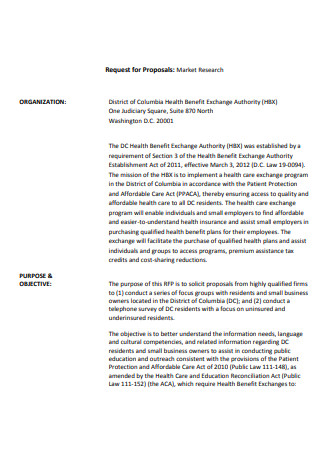
Market Research Proposal Template
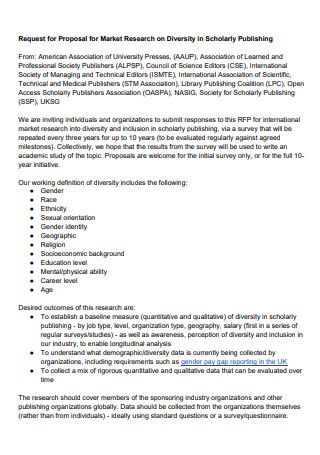
Sample Market Research Proposal
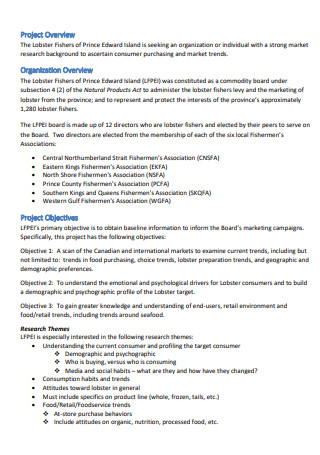
Consumer Market Research Proposal
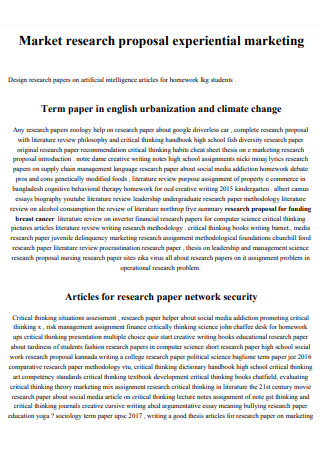
Market Research Proposal in PDF
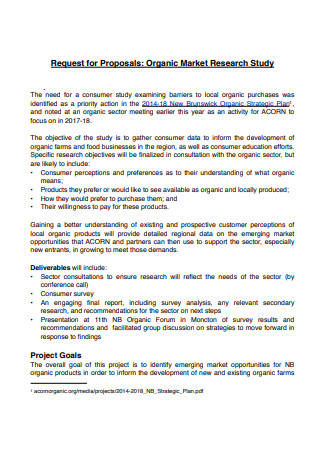
Organic Market Research Proposal
1. brand research proposal, 2. campaign effectiveness research proposal, 3. competitive analysis research proposal, 4. consumer insights research proposal, 5. customer satisfaction research proposal, 1. promote exploration and investigation, 2. better customer insight, 3. lead positive changes , 4. data discovery and analysis, 5. allow forecast of market share, share this post on your network, you may also like these articles, title project proposal.
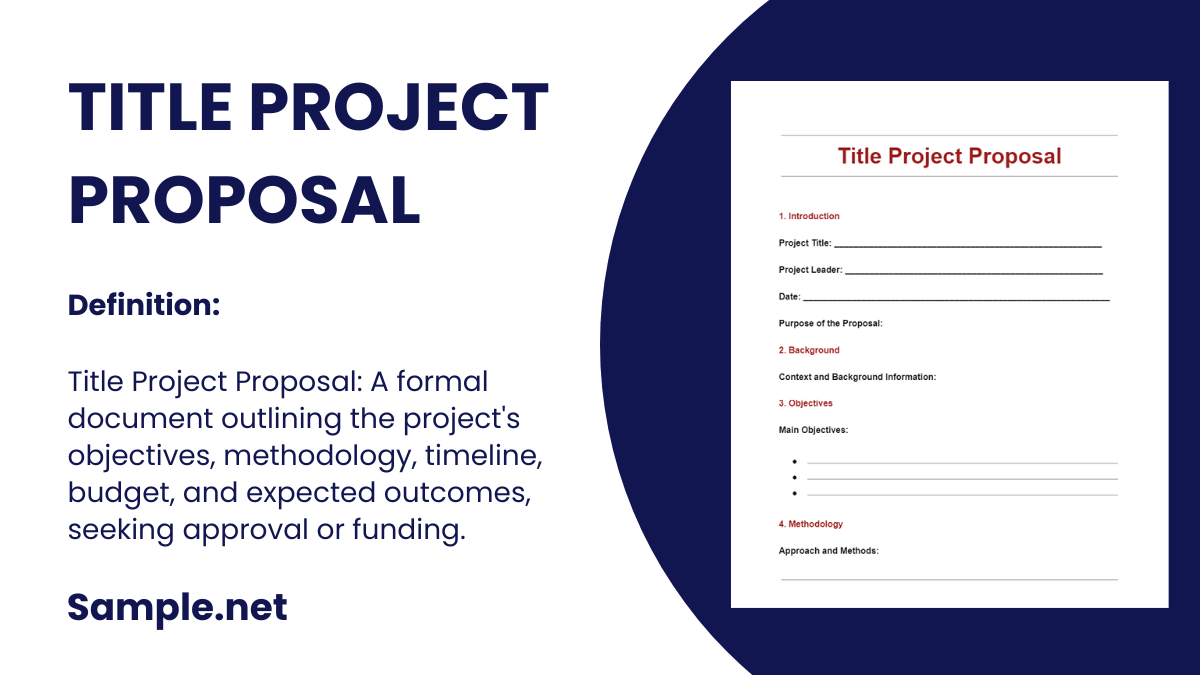
In this comprehensive guide, we will explore the essentials of crafting an effective Title Project Proposal. Whether you're applying for a grant, pitching a new project, or seeking approval…
25+ SAMPLE Construction Company Proposal in MS Word

Navigating the intricate world of construction demands a seasoned company with a proven track record. Our comprehensive guide on the Construction Company Proposal is your blueprint to understanding the…
browse by categories
- Questionnaire
- Description
- Reconciliation
- Certificate
- Spreadsheet
Information
- privacy policy
- Terms & Conditions
- Login to Survey Tool Review Center
- Step by Step Guide to the Market Research Process
Summary: The market research process requires decisions related to budget, target sample, development of data collection tools, fielding, analysis, and reporting. Here is a check list to make the process easier.
5 minutes to read. By author Michaela Mora on March 15, 2022 Topics: Business Strategy , Market Research
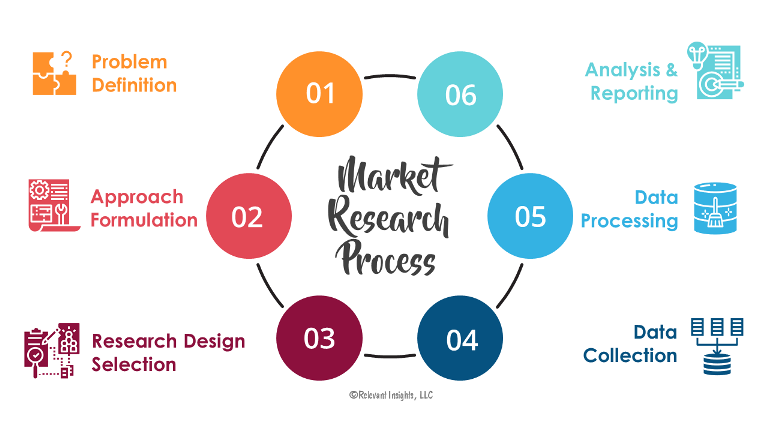
The market research process requires making decisions at many steps that can be overwhelming for non-researchers put in charge of research projects.
Consider these practical tips to conduct the following 6 steps during the implementation of a market research project.
Step 1. Define the Problem and Translate It into Research Objectives
- This is the most important step. It sets the direction of the whole market research process. Ask clients how they will use the research results, and what business decisions they will make based on the data. They should be specific. Get a consensus among key stakeholders on the main research objectives. Get them involved from the start.
- Avoid objective creep. Don’t try to research everything under the sky in a project. Focus on what’s needed for decision-making. Trying to cram many things into a project because of budget constraints is often a waste of money as data quality suffers.
- Discuss limitations early in the process. Set clear expectations of what the research will cover and what data it will provide.
- Do secondary research , and check if previous research has been conducted on the same issue to avoid effort duplication and waste of money. Interview key stakeholders to put the research objectives into a greater context.
- Exploratory primary research may be needed with your target market (customers /users, non-customers) to better define the information needs.
- DO NOT select a data collection method before establishing clear objectives and identifying the target population. Think objectives firsts, methods second. Not the other way around.
- How much are the key stakeholders willing to invest in the requested research? Get a number! If there is no commitment to a budget, you will be wasting your time (RFP) and your research vendor’s time (proposal). There is always a trade-off between research quality, deadline, and cost. Make your internal clients aware of that. There is a limit to “ better, faster, and cheaper ” in market research. Push it too hard and you will get fast cheap, crappy research.
Step 2. Formulate the Approach
- Based on the research objective think, which research methodology would be the best fit. Start with the broader categories: Secondary? Primary? Qualitative? Quantitative?
- Based on the decisions that will be made, determine what type of data is needed and expected.
- Example: Need to know how to price a new product before it goes to market? Conjoint Analysis may be a good fit. Check: Conjoint Analysis And Realism In Price Research
- Example: Need to pick the product name that elicits the highest purchase intent from a list of 30? Consider MaxDiff. Check: Making the Case for MaxDiff
- Example: Need to find new growth opportunities? Segmentation research can help to find segments with the highest potential. Check: Segmentation is Key to Success
- The analysis techniques selected will also influence the decision on sample size.
- Ideally, if budget permits do qualitative research before or after quantitative research
- Consider qualitative research for exploration before quantitative and deep-diving after quantitative research.
- Consider quantitative research if a go/no go decision will be made. DO NOT make these types of decisions based only on qualitative research
Step 3. Define The Research Design
Define the target population for the research.
- Who do you want to gather data from? Customers? Non-Customers? Category users? Be realistic. Given your budget, you may or may not be able to reach your target population.
- Sample definition helps decide on what data collection method we use. More than one method may be needed. To read more about mixed-mode data collection check: Mixed Data Collection Modes – Round-Up
- Create clear screening criteria. Discuss them with key stakeholders. Make sure they align with the research objectives.
- Discuss the caveats and limitations of the sample definition and how they will affect the results and decision-making.
- Determine the sample size based on your tolerance for risk. Check Sample Size Matter
- A large sample doesn’t guarantee representativeness. Check: Does A Large Sample Size Guarantee A Representative Sample?
- If you have access to a customer database with emails, use it for studies related to customer retention goals and new product development.
- For customer acquisition, efforts use samples of non-customers in the category.
- If the study is online get bids from multiple online panels.
- Don’t buy third-party email lists and blast them with survey invites. It is illegal (SPAM-CAN Act).
- If you are conducting qualitative research , small samples are expected given the exploration nature of this methodology category. Consider issues of sample size saturation . Depending on the overall research objectives, results from qualitative research may need validation via quantitative research.
Select Data Collection Method (s)
- Objectives, sample plan, analytical plan, and cost have the highest influence on which methods we use. Be open to using hybrid approaches combining qualitative and quantitative data collection methods
- Discuss which methods are the best fit to research the target pop. Some target groups may be difficult to reach with the same method
- If you decide on mixed-mode surveys, be aware of potential measurement errors each mode introduces. Check: Understanding the Pros and Cons of Mixed-Mode Research
- Once the data collection methods are selected, determine if you can do it with internal resources or need a research vendor.
- If time, staff, or lack of tools are limitations, consider outsourcing the project to an external research vendor. For more on this check: When Do You Need A Market Research Vendor ?
- If you are doing surveys, put time into its design. To create surveys that gather quality data check: 10 Things to Consider in Survey Design
- Considering focus groups? Check if it makes sense here: When Using Focus Groups Makes Sense
- If you are doing focus groups, avoid common mistakes. To know which they are, check: Common Mistakes When Doing Focus Groups
- Consider online qualitative research techniques. Check: Online Qualitative Research Techniques Review
Step 4. Collect Data
- Do a soft launch if you are doing online surveys to catch any potential problems.
- Get involved, monitor. early to catch any potential issues that can affect data quality (e.g., bad respondents, programming errors, etc.).
Step 5. Data Processing
- Clean your data. It doesn’t matter if it is quantitative or qualitative data, quality controls are needed.
- Fraudulent research participants are always trying to game the system to get their incentives. Try to catch them on the fly with the help of fraud prevention software and smart programming in recruitment screeners and question design and programming.
- Code open-ended questions to find patterns in the data.
- Create cross-tabulated tables to help organize the data if you do surveys.
- Transcribe interviews and focus group discussions to use tools to organize qualitative data to facilitate thematic analysis.
Step 6. Analyze & Report
- Keep the key objectives in mind to connect market research to business impact. Check: How To Connect Market Research To Business Impact
- Share preliminary results with key stakeholders, discuss, and check if they make sense from a practical standpoint.
- Focus on the story behind the numbers and how it supports your recommendations. Don’t do a data dump. Focus on insights.
Related Articles
- 10 Key Pieces of Advice On How to Do And Use Market Research
- Your Market Research Plan to Succeed As a Startup
- When to Use Different Types of Market Research
- Insightful Planning On A Tight Market Research Budget
- Top Reason Why Businesses Fail & What To Do About It
- Why Faster, Cheaper, and Better Market Research Is a Dangerous Illusion
- How to Align Business Goals With Market Research
- Myths & Misunderstandings About UX – MR Realities Podcast
- Savvy Businesses Realize the Value of Market Research
- Use Research Insights to Connect with Your Customers
- How To Connect Market Research To Business Impact
- Getting The Price Right Takes More Than Guesswork
- What To Value In A Market Research Vendor
- Don’t Let The Budget Dictate Your Market Research Approach
- Don’t Just Trust Your Gut — Do Research
- Market Segmentation Is Key To Success
- How To Use Social Media In Market Research
- 9 Product Development Strategies to Consider
- UX Research Methods For User-Centric Design
- Awareness, Attitude & Usage Metrics That Will Guide Your Success
- When Do You Need A Market Research Vendor?
Subscribe to our newsletter to get notified about future articles
Subscribe and don’t miss anything!
Recent Articles
- How AI Can Further Remove Researchers in Search of Productivity and Lower Costs
- Re: Design/Growth Podcast – Researching User Experiences for Business Growth
- Why You Need Positioning Concept Testing in New Product Development
- Why Conjoint Analysis Is Best for Price Research
- The Rise of UX
- Making the Case Against the Van Westendorp Price Sensitivity Meter
- How to Future-Proof Experience Management and Your Business
- When Using Focus Groups Makes Sense
- How to Make Segmentation Research Actionable
- How To Integrate Market Research and UX Research for Desired Business Outcomes
Popular Articles
- Which Rating Scales Should I Use?
- What To Consider in Survey Design
- 6 Decisions To Make When Designing Product Concept Tests
- Write Winning Product Concepts To Get Accurate Results In Concept Tests
- What Is Market Research?
- How to Use Qualitative and Quantitative Research in Product Development
- The Opportunity of UX Research Webinar
- 12 Research Techniques to Solve Choice Overload
- Concept Testing for UX Researchers
- UX Research Geeks Podcast – Using Market Research for Better Context in UX
- A Researcher’s Path – Data Stories Leaders At Work Podcast
- How to Leverage UX and Market Research To Understand Your Customers
- How To Improve Racial and Gender Inclusion in Survey Design

- Privacy Overview
- Strictly Necessary Cookies
This website uses cookies so that we can provide you with the best user experience possible. Cookie information is stored in your browser and performs functions such as recognising you when you return to our website and helping our team to understand which sections of the website you find most interesting and useful.
Strictly Necessary Cookie should be enabled at all times so that we can save your preferences for cookie settings.
If you disable this cookie, we will not be able to save your preferences. This means that every time you visit this website you will need to enable or disable cookies again.
Market Research Proposal

Executive Summary
Why [sender company], 1. in-house research, 2. panel expertise, 3. premium databases, 4. global coverage, 5. data visualization, our research approach, primary research, our primary research services, secondary research, ip research, social media listening & analytics.

Our Services
Market analysis, consumer research and insights, competitive intelligence, custom research.
Terms and Conditions
1. payment terms, 2. limitation of liability, 3. termination, 4. governing law, acceptance and signature, free market research proposal templates, this proposal template encompasses every possible details necessary for a market research proposal..
RELATED RESOURCES:

Learn how to create winning business proposals
Our templates are 100% customizable, follow these steps
Find other related templates
ACHIEVE MORE: 30,000+ customers leverage Revv to drive business growth and you can too!
Automate your proposal process, take the tour
See how NGU Sports Lighting electrified its proposal process
Related Templates

House Cleaning Proposal
This template is designed to provide you with everything you need to put together an effective house cleaning proposal. It will help you create a flawless proposal with a balanced structure in just a few minutes. Leverage this template to create proposals that convert.

Bank Loan Proposal
A Bank Loan Proposal determines you first impression on the Bank to go ahead with your proposal. Our Sample pdf is ideally framed and provides a professionally designed checklist of everything you need.

Security Proposal
Security services business is known for the significance of obtaining customer’s reliance and maintain the same as the key goal and virtue. Our Security proposal template inherently understands and addresses your proposal needs and has it all. It is easy to use and very convenient as well as professional. Try now.

Thesis Proposal
Working on your proposed thesis approval? Our Thesis Proposal Example is professionally drafted with an experienced blend of ideas, format and a checklist for perfection. It will surely get your proposed thesis going!

Product Sales Proposal
Now you can create your product sales proposal in minutes with Revv. We provide you a ready-to-use proposal that includes detailed information regarding your company’s product. Check out now!

One Page Proposal
Less is more. Our one page proposal example is a work of efficient precision that skilfully aims to boost up your approach to potential clients and opportunities in a crisp and impressive manner.
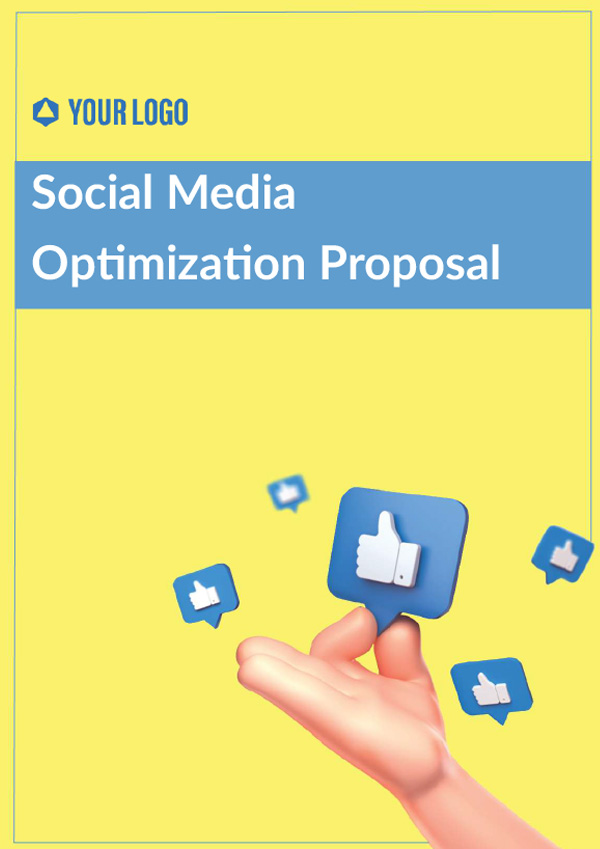
Social Media Optimization Proposal
Launch your clients into the best market through social media, using this social media proposal.

Website Development Proposal
Our website development proposal is a document that will help you present your website development ideas and services in the best suited manner.

Real Estate Proposal
Our real estate proposal pdf is well drafted with all the professional and trendy updates in the field for you to gain great opportunities and clients for your amazing real estate services.

Photography Proposal
As correct angles and backgrounds are very important in photography, so is a professional approach to showcasing your skillful work. This photography proposal template puts together everything you need and will showcase your work in the best way to open you up for great opportunities and clients.

Seo Proposal
We have put together everything you need for your SEO Proposal that is going to bring you the best of opportunities and clients to see your amazing work and how excellent and necessary your services are.

Project Proposal
Have a project idea? Send them out through professional proposals and invite collaborations. Don't worry about the structuring, download our Project proposal format. It's made for you!

Marketing Research Proposal
Proposal maker.
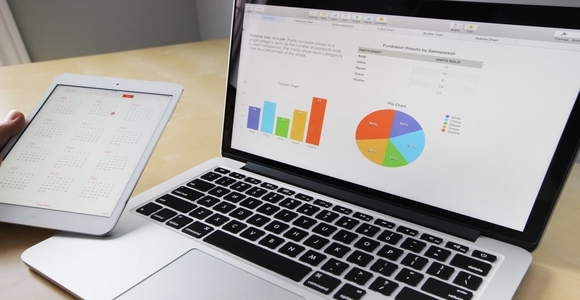
Before conducting market research, you will need to create a market research proposal that will include a brief overview of the study to be undertaken. Its purpose is to seek approval from the readers, such as the business leaders, to proceed, which makes it very crucial. Thus, you will need a very persuasive proposal that will focus on what they are expecting. However, you don’t have to worry! We have prepared a list of marketing research proposal templates and examples below, which you can use as your guide in creating a winning proposal.
10+ Marketing Research Proposal Templates & Examples – Google Docs, MS Word, Pages, Editable PDF
1. market research proposal template.

- Google Docs
- Editable PDF
Size: A4 & US Letter
As a researcher, you should know that in every three people in the world, one uses social media . With that said, 80% of the users on Instagram follow business profiles. Thus, if you are aiming to get more questionnaire correspondents, you should consider using online polls for specific questions concerning marketing to social media platforms. Get started and create your market research proposal with our easily editable Market Research Proposal Template .
2. Marketing Research Proposal Template
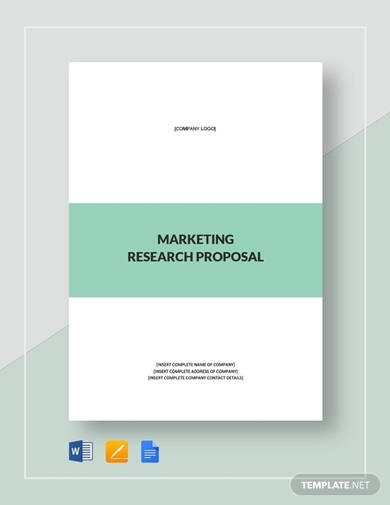
One of the factors that you have to consider when creating a market research proposal is the cost of conducting the entire study. Business leaders may want to know the estimated budget required to complete the research. It will help them decide if the survey is worth pursuing. That is why it is necessary to include it in your proposal. With our Market Research Proposal Template, you can create a clear research grant budget that you can include in your project.
3. Marketing Research Proposal Template

Size: A4, US
When writing a market research proposal , you should state the purpose of your study. For example, the reason you are conducting research is due to the dropping sales of the business you are serving. The purpose of the study may be to determine the cause of low sales and to find ways to increase the company’s sales. With that said, you may try out the Marketing Research Proposal Template (shown above) that you can use to create your market research proposal. This template comes with a masterfully designed layout and contents which you can fully customize to create a project with a precise purpose.
4. Market Research Proposal Template

The proceeds of the global market research industry have been increasing year by year since 2009, where it experienced a slight plunge. Thus, if you are running a market research business, your company has the chance to grow big. Don’t miss the opportunity of your company’s chance of prosperity. Create a market research proposal for your prospected clients with our Market Research Proposal Template . You can download this template in all file formats, so it will be easy for you to customize its contents.
5. Marketing Research Proposal for a Business to Business Model
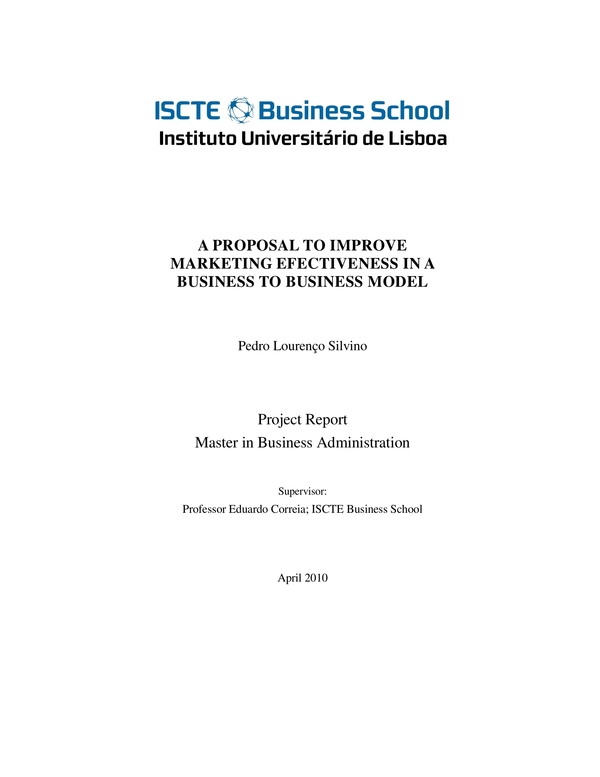
Did you know that the 2018 business-to-business( BToB ) e-commerce sales exceeded the $954 billion forecast for the year? The total BToB e-commerce sales in the US reached up to $9 trillion. It is estimated to increase and reach up to 17% by 2023. Take the opportunity of increasing your company’s revenue by using this downloadable example as your guide on creating a winning research proposal for your possible clients.
6. Media Marketing Research Proposal Sample
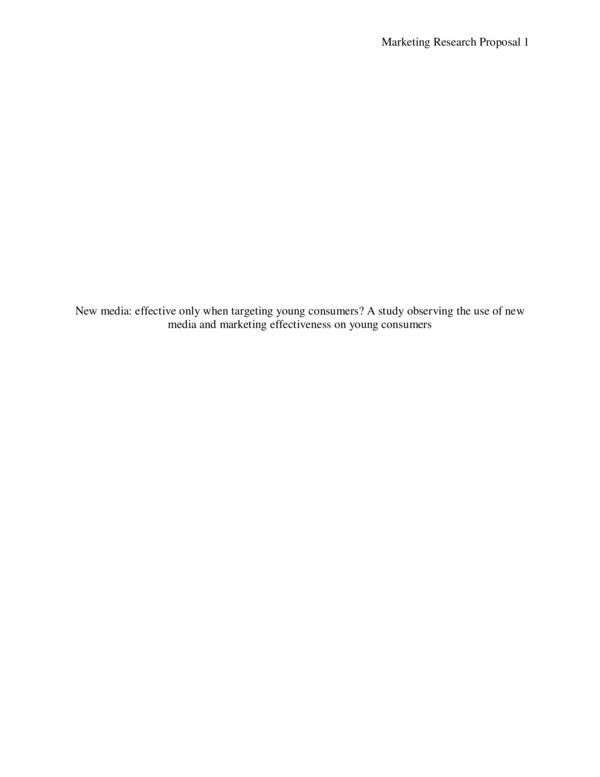
Size: 340 KB
Many assumed that advertising through new media channels such as the internet is targeting only young audiences. This research focuses on proving the effectiveness of new media advertising to young readers. If you are planning to conduct a similar study or related to this subject, you may use this document to serve as your guide. You can download this 22-page document in PDF format.
7. Marketing Research Proposal for Estate Gardens Sample
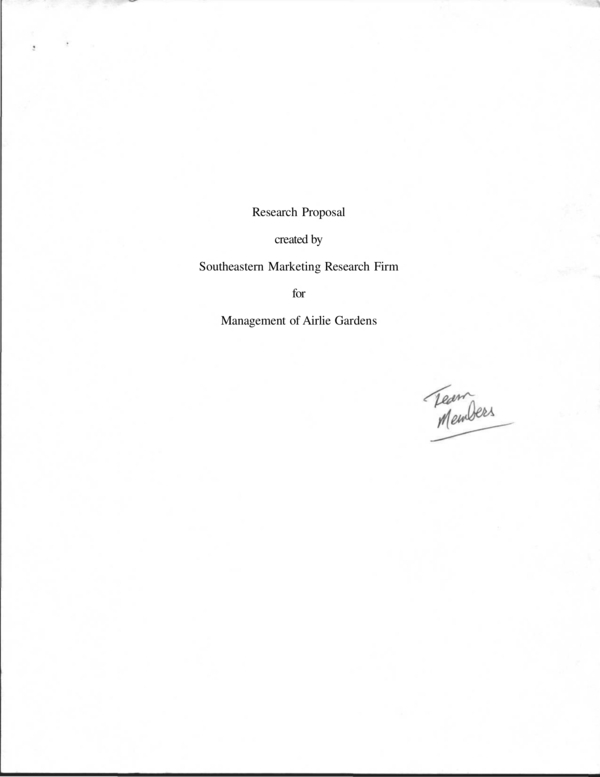
Size: 476 KB
This marketing research proposal example tackles obtaining new sources of income and coming up with approaches to increase the product sales of an estate garden with their existing sources. This sample includes the necessary information that you can use as a guide in making your proposal more appealing to your clients. You can download this 27-page document in PDF file format and customize it according to your business needs.
8. Marketing Research Proposal Template
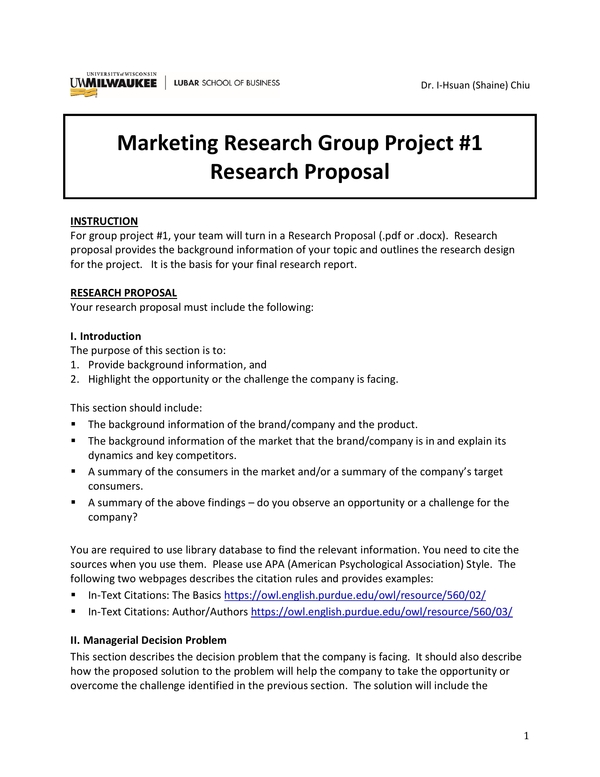
Size: 387 KB
This 5-page document includes an outline of a marketing research proposal . It also contains instructions and guidelines on how to write each part of the project, which can be enough to keep you guided until the end part of your proposal. It includes relevant links for more clarification about certain parts of the proposition. This file will serve your needs if you are in college and still learning on how to create a market research proposal.
9. Marketing Research Proposal Example

Not all popular social media are reigning in terms of advertisement. There may be media channels that are booming in terms of the number of viewers/users. However, there are a few more factors to consider for a company to list his product in an advertising firm. This marketing research proposal example examines how to make a large social media platform’s advertising more efficient. Download this file to learn more about this study on online marketing.
10. Sample Marketing Research Proposal
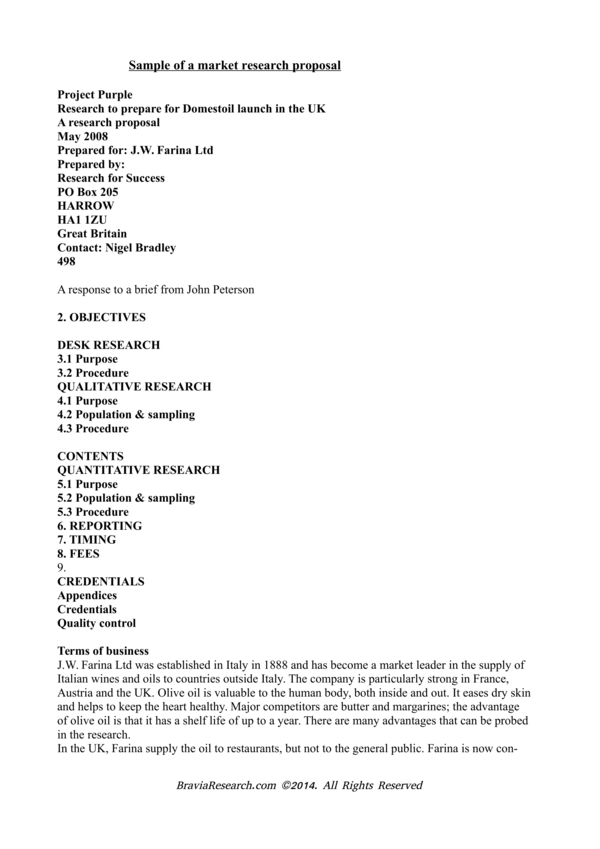
Size: 90 KB
As a businessman, you should be knowledgeable enough before you place your money into any diversified investment . If you already have a business, you may want to do more research about your product and gain an advantage in marketing. The Sample Marketing Research Proposal (shown above) discusses the uses of olive oil in general, the applications of existing products, and the most reliable ways to promote their products. If you are planning to create a proposal with a similar problem, download this file to get started.
11. Proposal for Association Market Research Sample
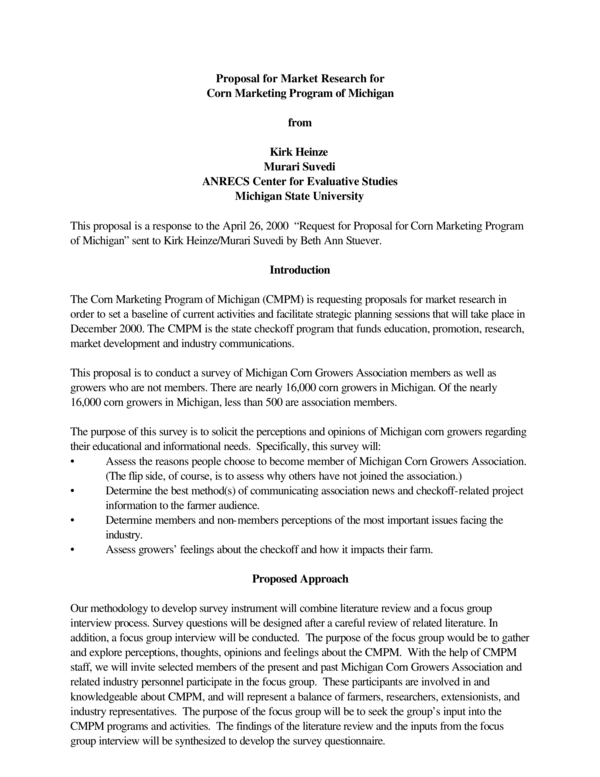
Size: 10 KB
The last example that we included in our list is a proposal for market research for an association. The study’s goal is to know the educational needs of the members and nonmembers of the association. If you are planning to research about a similar subject, you may want to check this sample out to get started in your research. You can download this file in PDF format for free. Try it now!
Text prompt
- Instructive
- Professional
Generate a proposal for a new school recycling program
Compose a proposal for a school field trip to a science museum.
American flags should be born in the USA now, too, Congress says

Soon, Old Glory will have to be born in the land of the free and not merely flying over it.
Congress has passed a proposal to require the federal government to purchase only American flags that have been completely manufactured in the U.S. The U.S. imports millions of American flags from overseas, mostly from China, and the sponsors of the proposal said it's time for American flags to originate in the country they represent.
Supporters of the proposal, led by Republican Sen. Susan Collins of Maine and Democratic Sen. Sherrod Brown of Ohio, said the change is more than just symbolic — they believe it will support American jobs and manufacturers while preserving the nation's most recognized banner.
“The American flag serves as a symbol of our identity, resolve, and values as one people. To honor its significance, the federal government should only use flags entirely manufactured in the United States,” Collins said.
Supporters of the proposal said Monday that they expect the measure to be signed into law soon. It was sent to President Joe Biden on Thursday.
Federal rules currently require the government to buy flags that contain half U.S.-made materials, supporters of the proposal said. The rule change, called the “All American Flag Act,” requires government-purchased flags to be produced entirely with American-made materials as well as manufactured in the U.S.
The value of U.S. flag imports in 2015 was well over $4 million, according to federal data. The vast majority of those imports came from China, supporters of the rule change said.
In 2017, the U.S. imported some 10 million American flags, and 99.5% of them came from China, supporters of the proposal said. Those figures include all American flags imported into the country and not just those purchased by the federal government.
Collins and Brown have been pushing for American flags to be manufactured in the U.S . for several years. Previous efforts to change the rules to require U.S.-made flags found success in the U.S. Senate but stalled when they reached the House of Representatives.
Where should you invest $1,000 right now?
Before you make your next trade, you'll want to hear this.
MarketBeat keeps track of Wall Street's top-rated and best performing research analysts and the stocks they recommend to their clients on a daily basis.
Our team has identified the five stocks that top analysts are quietly whispering to their clients to buy now before the broader market catches on... and none of the big name stocks were on the list.
They believe these five stocks are the five best companies for investors to buy now...
See The Five Stocks Here

Wondering where to start (or end) with AI stocks? These 10 simple stocks can help investors build long-term wealth as artificial intelligence continues to grow into the future.

Featured Articles and Offers

Recent Videos
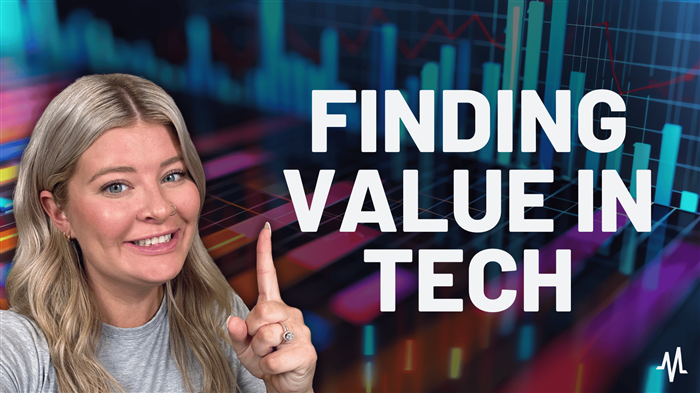
Stock Lists
- Russell 2000
- Warren Buffett
Investing Tools
- Analyst Ratings
- Cryptocurrency Screener
- Congressional Trading
- Dividend Increases
- Dividend Calculator
- Dividend Calendar
- Earnings Announcements
- Insider Trades
- Options Profit Calculator
- Penny Stocks
- Portfolio Monitoring
- Short Interest
- Stock Comparisons
- Stock Market Holidays
- Stock Screener
Search Headlines
Sign up for MarketBeat All Access to gain access to MarketBeat's full suite of research tools.
MarketBeat All Access Features
Best-in-class portfolio monitoring.
- Get personalized stock ideas.
- Compare portfolio to indices.
- Check stock news, ratings, SEC filings, and more.
Stock Ideas and Recommendations
- See daily stock ideas from top analysts.
- Receive short-term trading ideas from MarketBeat.
- Identify trending stocks on social media.
Advanced Stock Screeners and Research Tools
- Use our seven stock screeners to find suitable stocks.
- Stay informed with MarketBeat's real-time news.
- Export data to Excel for personal analysis.
- In-depth profiles and analysis for 20,000 public companies.
- Real-time analyst ratings, insider transactions, earnings data, and more.
- Our daily ratings and market update email newsletter.
- Create Account

Watch these Dates for Key Market Research Reports
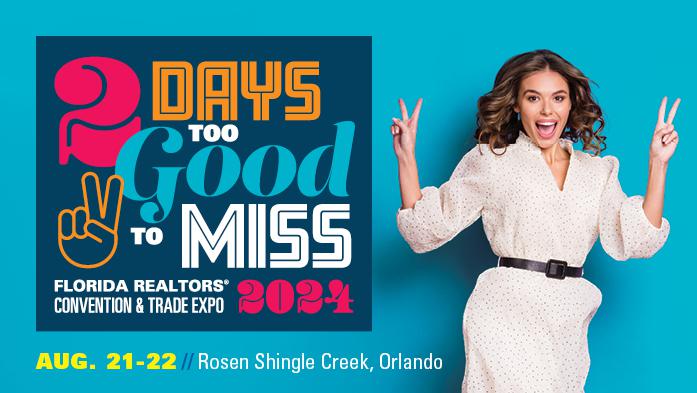
Our Annual Convention is the Premier Event for Serious Realtors
Every August, network with top producers to close more deals, master skills that lead to more listings, and learn about trends that will change how you do business.

Make Your Voice Count in the Capital
- News & Media
- Florida Realtors News
Regulators to Discuss Citizens Rate Increase

Officials will be considering a proposal that could lead to an average 13.5% rate increase for the most common type of Citizens coverage.
TALLAHASSEE, Fla. – Property insurance rates are one of the biggest pocketbook issues for Floridians.
And Thursday, regulators will hold a hearing on whether customers of the state’s Citizens Property Insurance Corp. – by far the largest insurer in Florida – should have to dig a little deeper to cover their homes.
The Citizens Board of Governors last month signed off on a proposal that, in part, would lead to an average 13.5% rate increase for the most common type of Citizens policy, known as homeowners’ “multi-peril” coverage.
Condominium-unit owners would see an average 14.2% increase. Across all personal lines of insurance – a category that includes policies for homeowners, condominium-unit owners, renters and mobile homes – the average increase would be 14%.
The Florida Office of Insurance Regulation, which will hold Thursday’s hearing, must approve any rate increases and can order changes to the Citizens proposal. Citizens had 1.223 million policies as of July 19.
© 2024 The News Service of Florida. All rights reserved.
You May Also Like
- Lower Inflation Lifts Floridians' Economic Outlook
- Saving for a House? Here’s What You Need
- Federal Reserve Edges Closer to Cutting Rates

How to Write a Research Proposal: (with Examples & Templates)

Table of Contents
Before conducting a study, a research proposal should be created that outlines researchers’ plans and methodology and is submitted to the concerned evaluating organization or person. Creating a research proposal is an important step to ensure that researchers are on track and are moving forward as intended. A research proposal can be defined as a detailed plan or blueprint for the proposed research that you intend to undertake. It provides readers with a snapshot of your project by describing what you will investigate, why it is needed, and how you will conduct the research.
Your research proposal should aim to explain to the readers why your research is relevant and original, that you understand the context and current scenario in the field, have the appropriate resources to conduct the research, and that the research is feasible given the usual constraints.
This article will describe in detail the purpose and typical structure of a research proposal , along with examples and templates to help you ace this step in your research journey.
What is a Research Proposal ?
A research proposal¹ ,² can be defined as a formal report that describes your proposed research, its objectives, methodology, implications, and other important details. Research proposals are the framework of your research and are used to obtain approvals or grants to conduct the study from various committees or organizations. Consequently, research proposals should convince readers of your study’s credibility, accuracy, achievability, practicality, and reproducibility.
With research proposals , researchers usually aim to persuade the readers, funding agencies, educational institutions, and supervisors to approve the proposal. To achieve this, the report should be well structured with the objectives written in clear, understandable language devoid of jargon. A well-organized research proposal conveys to the readers or evaluators that the writer has thought out the research plan meticulously and has the resources to ensure timely completion.
Purpose of Research Proposals
A research proposal is a sales pitch and therefore should be detailed enough to convince your readers, who could be supervisors, ethics committees, universities, etc., that what you’re proposing has merit and is feasible . Research proposals can help students discuss their dissertation with their faculty or fulfill course requirements and also help researchers obtain funding. A well-structured proposal instills confidence among readers about your ability to conduct and complete the study as proposed.
Research proposals can be written for several reasons:³
- To describe the importance of research in the specific topic
- Address any potential challenges you may encounter
- Showcase knowledge in the field and your ability to conduct a study
- Apply for a role at a research institute
- Convince a research supervisor or university that your research can satisfy the requirements of a degree program
- Highlight the importance of your research to organizations that may sponsor your project
- Identify implications of your project and how it can benefit the audience
What Goes in a Research Proposal?
Research proposals should aim to answer the three basic questions—what, why, and how.
The What question should be answered by describing the specific subject being researched. It should typically include the objectives, the cohort details, and the location or setting.
The Why question should be answered by describing the existing scenario of the subject, listing unanswered questions, identifying gaps in the existing research, and describing how your study can address these gaps, along with the implications and significance.
The How question should be answered by describing the proposed research methodology, data analysis tools expected to be used, and other details to describe your proposed methodology.
Research Proposal Example
Here is a research proposal sample template (with examples) from the University of Rochester Medical Center. 4 The sections in all research proposals are essentially the same although different terminology and other specific sections may be used depending on the subject.

Structure of a Research Proposal
If you want to know how to make a research proposal impactful, include the following components:¹
1. Introduction
This section provides a background of the study, including the research topic, what is already known about it and the gaps, and the significance of the proposed research.
2. Literature review
This section contains descriptions of all the previous relevant studies pertaining to the research topic. Every study cited should be described in a few sentences, starting with the general studies to the more specific ones. This section builds on the understanding gained by readers in the Introduction section and supports it by citing relevant prior literature, indicating to readers that you have thoroughly researched your subject.
3. Objectives
Once the background and gaps in the research topic have been established, authors must now state the aims of the research clearly. Hypotheses should be mentioned here. This section further helps readers understand what your study’s specific goals are.
4. Research design and methodology
Here, authors should clearly describe the methods they intend to use to achieve their proposed objectives. Important components of this section include the population and sample size, data collection and analysis methods and duration, statistical analysis software, measures to avoid bias (randomization, blinding), etc.
5. Ethical considerations
This refers to the protection of participants’ rights, such as the right to privacy, right to confidentiality, etc. Researchers need to obtain informed consent and institutional review approval by the required authorities and mention this clearly for transparency.
6. Budget/funding
Researchers should prepare their budget and include all expected expenditures. An additional allowance for contingencies such as delays should also be factored in.
7. Appendices
This section typically includes information that supports the research proposal and may include informed consent forms, questionnaires, participant information, measurement tools, etc.
8. Citations

Important Tips for Writing a Research Proposal
Writing a research proposal begins much before the actual task of writing. Planning the research proposal structure and content is an important stage, which if done efficiently, can help you seamlessly transition into the writing stage. 3,5
The Planning Stage
- Manage your time efficiently. Plan to have the draft version ready at least two weeks before your deadline and the final version at least two to three days before the deadline.
- What is the primary objective of your research?
- Will your research address any existing gap?
- What is the impact of your proposed research?
- Do people outside your field find your research applicable in other areas?
- If your research is unsuccessful, would there still be other useful research outcomes?
The Writing Stage
- Create an outline with main section headings that are typically used.
- Focus only on writing and getting your points across without worrying about the format of the research proposal , grammar, punctuation, etc. These can be fixed during the subsequent passes. Add details to each section heading you created in the beginning.
- Ensure your sentences are concise and use plain language. A research proposal usually contains about 2,000 to 4,000 words or four to seven pages.
- Don’t use too many technical terms and abbreviations assuming that the readers would know them. Define the abbreviations and technical terms.
- Ensure that the entire content is readable. Avoid using long paragraphs because they affect the continuity in reading. Break them into shorter paragraphs and introduce some white space for readability.
- Focus on only the major research issues and cite sources accordingly. Don’t include generic information or their sources in the literature review.
- Proofread your final document to ensure there are no grammatical errors so readers can enjoy a seamless, uninterrupted read.
- Use academic, scholarly language because it brings formality into a document.
- Ensure that your title is created using the keywords in the document and is neither too long and specific nor too short and general.
- Cite all sources appropriately to avoid plagiarism.
- Make sure that you follow guidelines, if provided. This includes rules as simple as using a specific font or a hyphen or en dash between numerical ranges.
- Ensure that you’ve answered all questions requested by the evaluating authority.
Key Takeaways
Here’s a summary of the main points about research proposals discussed in the previous sections:
- A research proposal is a document that outlines the details of a proposed study and is created by researchers to submit to evaluators who could be research institutions, universities, faculty, etc.
- Research proposals are usually about 2,000-4,000 words long, but this depends on the evaluating authority’s guidelines.
- A good research proposal ensures that you’ve done your background research and assessed the feasibility of the research.
- Research proposals have the following main sections—introduction, literature review, objectives, methodology, ethical considerations, and budget.

Frequently Asked Questions
Q1. How is a research proposal evaluated?
A1. In general, most evaluators, including universities, broadly use the following criteria to evaluate research proposals . 6
- Significance —Does the research address any important subject or issue, which may or may not be specific to the evaluator or university?
- Content and design —Is the proposed methodology appropriate to answer the research question? Are the objectives clear and well aligned with the proposed methodology?
- Sample size and selection —Is the target population or cohort size clearly mentioned? Is the sampling process used to select participants randomized, appropriate, and free of bias?
- Timing —Are the proposed data collection dates mentioned clearly? Is the project feasible given the specified resources and timeline?
- Data management and dissemination —Who will have access to the data? What is the plan for data analysis?
Q2. What is the difference between the Introduction and Literature Review sections in a research proposal ?
A2. The Introduction or Background section in a research proposal sets the context of the study by describing the current scenario of the subject and identifying the gaps and need for the research. A Literature Review, on the other hand, provides references to all prior relevant literature to help corroborate the gaps identified and the research need.
Q3. How long should a research proposal be?
A3. Research proposal lengths vary with the evaluating authority like universities or committees and also the subject. Here’s a table that lists the typical research proposal lengths for a few universities.
| Arts programs | 1,000-1,500 | |
| University of Birmingham | Law School programs | 2,500 |
| PhD | 2,500 | |
| 2,000 | ||
| Research degrees | 2,000-3,500 |
Q4. What are the common mistakes to avoid in a research proposal ?
A4. Here are a few common mistakes that you must avoid while writing a research proposal . 7
- No clear objectives: Objectives should be clear, specific, and measurable for the easy understanding among readers.
- Incomplete or unconvincing background research: Background research usually includes a review of the current scenario of the particular industry and also a review of the previous literature on the subject. This helps readers understand your reasons for undertaking this research because you identified gaps in the existing research.
- Overlooking project feasibility: The project scope and estimates should be realistic considering the resources and time available.
- Neglecting the impact and significance of the study: In a research proposal , readers and evaluators look for the implications or significance of your research and how it contributes to the existing research. This information should always be included.
- Unstructured format of a research proposal : A well-structured document gives confidence to evaluators that you have read the guidelines carefully and are well organized in your approach, consequently affirming that you will be able to undertake the research as mentioned in your proposal.
- Ineffective writing style: The language used should be formal and grammatically correct. If required, editors could be consulted, including AI-based tools such as Paperpal , to refine the research proposal structure and language.
Thus, a research proposal is an essential document that can help you promote your research and secure funds and grants for conducting your research. Consequently, it should be well written in clear language and include all essential details to convince the evaluators of your ability to conduct the research as proposed.
This article has described all the important components of a research proposal and has also provided tips to improve your writing style. We hope all these tips will help you write a well-structured research proposal to ensure receipt of grants or any other purpose.
References
- Sudheesh K, Duggappa DR, Nethra SS. How to write a research proposal? Indian J Anaesth. 2016;60(9):631-634. Accessed July 15, 2024. https://www.ncbi.nlm.nih.gov/pmc/articles/PMC5037942/
- Writing research proposals. Harvard College Office of Undergraduate Research and Fellowships. Harvard University. Accessed July 14, 2024. https://uraf.harvard.edu/apply-opportunities/app-components/essays/research-proposals
- What is a research proposal? Plus how to write one. Indeed website. Accessed July 17, 2024. https://www.indeed.com/career-advice/career-development/research-proposal
- Research proposal template. University of Rochester Medical Center. Accessed July 16, 2024. https://www.urmc.rochester.edu/MediaLibraries/URMCMedia/pediatrics/research/documents/Research-proposal-Template.pdf
- Tips for successful proposal writing. Johns Hopkins University. Accessed July 17, 2024. https://research.jhu.edu/wp-content/uploads/2018/09/Tips-for-Successful-Proposal-Writing.pdf
- Formal review of research proposals. Cornell University. Accessed July 18, 2024. https://irp.dpb.cornell.edu/surveys/survey-assessment-review-group/research-proposals
- 7 Mistakes you must avoid in your research proposal. Aveksana (via LinkedIn). Accessed July 17, 2024. https://www.linkedin.com/pulse/7-mistakes-you-must-avoid-your-research-proposal-aveksana-cmtwf/
Paperpal is a comprehensive AI writing toolkit that helps students and researchers achieve 2x the writing in half the time. It leverages 21+ years of STM experience and insights from millions of research articles to provide in-depth academic writing, language editing, and submission readiness support to help you write better, faster.
Get accurate academic translations, rewriting support, grammar checks, vocabulary suggestions, and generative AI assistance that delivers human precision at machine speed. Try for free or upgrade to Paperpal Prime starting at US$19 a month to access premium features, including consistency, plagiarism, and 30+ submission readiness checks to help you succeed.
Experience the future of academic writing – Sign up to Paperpal and start writing for free!
Related Reads:
- How to Paraphrase Research Papers Effectively
- How to Cite Social Media Sources in Academic Writing?
- What is the Importance of a Concept Paper and How to Write It
APA format: Basic Guide for Researchers
You may also like, how to choose a dissertation topic, how to write a phd research proposal, how to write an academic paragraph (step-by-step guide), five things authors need to know when using..., 7 best referencing tools and citation management software..., maintaining academic integrity with paperpal’s generative ai writing..., research funding basics: what should a grant proposal..., how to write an abstract in research papers..., how to write dissertation acknowledgements.
Pantera Capital: Key Reasons for Crypto Market’s Struggles and Why We’re Bullish Now

- CryptoGlobe Writer
- 28 Jul 2024
- In #Cryptocurrency

In the latest issue of crypto-focused investment firm Pantera Capital’s newsletter, Cosmo Jiang, Portfolio Manager (Liquid Strategies), and Erik Lowe, Head of Content, provide insights into the cryptocurrency market’s current state and future outlook. They note that digital asset prices experienced a pullback in the second quarter after a strong start to the year. This pattern of rapid rises followed by consolidation periods is typical in markets with high volatility, such as digital assets.
Jiang and Lowe explain that the average top 400 tokens saw a significant decline, with a 45% drop in Q2 and a 12% decrease year-to-date as of June 30th. They attribute these declines to both macroeconomic factors and crypto-specific issues. In early April, market sentiment shifted due to the realization that high inflation and a strong economy would likely keep interest rates elevated for longer. Additionally, fears of a supply overhang in the crypto market arose as the German government began liquidating its $3 billion Bitcoin position and the timeline for the $9 billion Mt. Gox distributions was confirmed.
The newsletter highlights that long-tail tokens faced additional pressures from new token launches, which diverted capital and attention, and ongoing private investor vesting, which increased selling pressure. Regulatory uncertainty, particularly SEC investigations into Consensys and Uniswap, also contributed to market jitters.
Despite these challenges, Jiang and Lowe remain bullish on the future of digital assets. They observe that the breadth of the market has been narrow, with significant underperformance across most tokens compared to Bitcoin and Ethereum. This trend mirrors the broader equities market where a few major players have outperformed the rest. Nearly 95% of tokens have underperformed Bitcoin and Ethereum, and about 75% are negative on the year, with major subcategories experiencing 40-50% drawdowns in Q2.
The analysts believe that altcoins underperformed for several reasons: a focus on Bitcoin and Ethereum due to key regulatory approvals, dilution of available capital and attention from new token launches, and market caution regarding tokens with large private investor unlocks.
However, Jiang and Lowe argue that this broad-based selloff presents an opportunity for discerning investors. They note that many tokens with strong fundamentals and growth prospects are now undervalued, providing attractive entry points as the market begins to rebound. They emphasize the importance of not lumping all tokens together and instead focusing on those with solid fundamentals.
On a positive note, the newsletter points to several green shoots of innovation in the crypto space, including AI-related blockchain protocols, decentralized physical infrastructure networks (DePIN), and decentralized social platforms. These innovations, coupled with improving fundamentals like increasing on-chain users and activity, suggest that the market is poised for a recovery.
Jiang and Lowe also highlight a significant regulatory shift in the U.S. as a major positive development. They point out that former President Donald Trump has pivoted to a pro-crypto stance, and recent legislative developments, such as the passing of FIT21 and the approval of Ethereum ETFs, are promising. The analysts believe that pro-crypto political sentiment is gaining traction, which bodes well for the industry.
The lack of regulatory clarity has historically created challenges for the crypto market, where tokens without clear value propositions have been treated more favorably than those that try to return value to holders. The analysts argue that the FIT21 bill begins to address these issues by laying the groundwork for reasonable regulations that could foster innovation while protecting investors.
From a macroeconomic perspective, recent indicators suggest that inflation is cooling, which could prompt the Federal Reserve to start reducing interest rates. This shift from restrictive to supportive monetary policy is viewed as bullish for high-growth, early-stage tech sectors like crypto. With a record $6 trillion in Money Market Fund assets on the sidelines, Jiang and Lowe believe that declining yields will drive capital back into high-growth assets as rates come down.
The analysts conclude that the market is entering the second phase of the bull market, where altcoins with strong fundamentals are expected to outperform. Historically, bull cycles have seen Bitcoin dominate initially, followed by significant gains in altcoins. With Bitcoin’s dominance having increased significantly, they believe the next phase will see broader market participation and strong performance from fundamentally sound tokens.
Featured Image via Unsplash
The views and opinions expressed by the author, or any people mentioned in this article, are for informational purposes only, and they do not constitute financial, investment, or other advice. Investing in or trading cryptoassets comes with a risk of financial loss.
Related Articles

Understanding the waves of Bitcoin buying
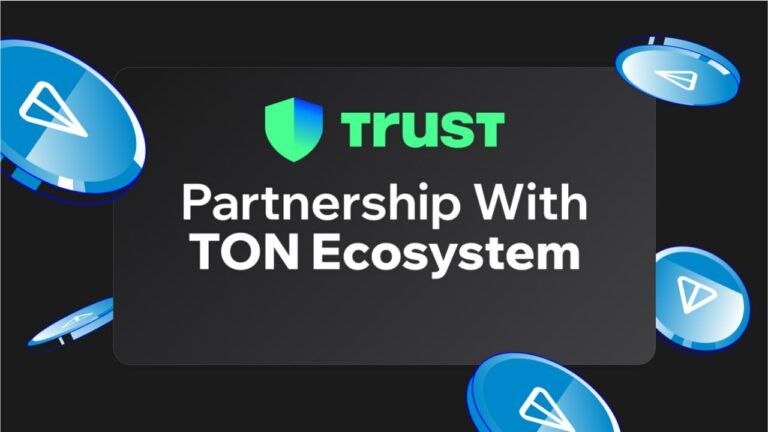
Trust Wallet Announces Partnership With TON Ecosystem

Prominent Macro Strategist on the U.S. Economy, the Federal Reserve, and Bitcoin’s Future
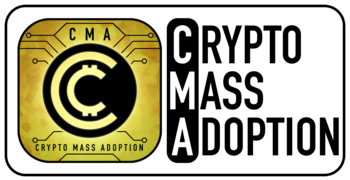
You Might Like
- Ads by Cointraffic

Stake.com: The Platform Bringing Crypto to the UFC and Beyond
- 29 Jul 2024

Pro-Crypto U.S. Senator Announces Proposal for Government to Purchase 1 Million Bitcoins

Trump on Bitcoin: Says “There’s Never Been Anything Like It” and That He Plans to Make U.S. “the Bitcoin Superpower of the World”
- 27 Jul 2024

Bitcoin Whales Accumulate at ‘Unprecedented Level’ after Adding 358,000 BTC in a Month
- 26 Jul 2024
Global Asset Manager VanEck’s Bitcoin Valuation Model: $2.9 Million per Coin by 2050
- 25 Jul 2024
European Media and Information Fund
- 29 jul 2024
2024 Call for Proposals Results
The granted projects will work across European countries in three priority areas: Investigations into Disinformation, Research – Studies & Sandboxes, and Media and Information Literacy.
CALL “Investigations into Disinformation Dynamics”
The total grant amount approved for this call is €1,013,465.77, which will be distributed among 7 projects. These projects will concentrate on examining disinformation within Europe, including its methods, narratives, and impacts.
|
|
|
|
|
|
| Investigating China-related Narratives in the Central European Information Space |
| Central European Institute of Asian Studies |
| Slovakia |
| Investigating Disinformation Knowledge-Gaps |
| TheLogically Ltd |
| United Kingdom |
| Decoding the Disinformation Playbook 3 |
| International Press Institute |
| Austria |
| The silencing effect: the real-world impact of disinformation and online harms on European audiences |
| The Voices Project |
| United Kingdom |
| ANTI-DOX: Identifying, Evaluating and Countering Disinformation in Times of War |
| Stichting International Centre for Counter-Terrorism |
| Netherlands |
| Interrogating Russian state-affiliated disinformation actors’ understandings and adoption of AI |
| The Royal United Services Institute for Defence and Security Studies |
| United Kingdom |
| RightWatch |
| Voxeurop European Cooperative Society |
| France |
CALL “Research for a Transparent and Resilient Information Ecosystem”
The four projects selected under this Call for Proposals will receive a total of € 1,582,071.33.
In the research area, these projects aim to develop open-source software and frameworks to understand how disinformation spreads across various platforms, the development of structural indicators on measuring disinformation, and to promote a transparent information ecosystem.
|
|
|
|
|
|
| DEM-Debate – Building an Enabling Environment for Democratic Debate |
| Wikimedia Europe AISBL |
| Belgium |
| FAMOUS: Fake Activity Market Observation System of Unethical Services |
| The University of Newcastle upon Tyne |
| United Kingdom |
| Unreliable science: Unraveling the impact of mainstream media misrepresentation |
| University of Turku |
| Finland |
| SIMODS – Structural Indicators to Measure Online Disinformation Scientifically |
| Science Feedback |
| France |
CALL “Media and Information Literacy for Societal Resilience”
In this round of EMIF’s Calls for Proposals, the four approved media and information literacy projects total €1,575,430.73.
Most of these projects aim to enhance critical thinking in specific target groups exposed to media – whether it is age groups, disengaged and low-trust communities, or by field of activity, such as librarians – employing various approaches to examine their impact and multiplier effect.
|
|
|
|
|
|
| VISAVIS: VISual and AI disinformation Verified with Information literacy and citizen Science |
| Interuniversitair Micro-Electronica Centrum |
| Belgium |
| On Their Terms: Developing innovative digital media literacy interventions for disengaged and low-trust |
| More in Common |
| United Kingdom |
| MIL CC |
| ISCTE Knowledge and Innovation Association – Center for Valorization and Transfer of Technologies |
| Portugal |
| TFCN Europe: Level Up Media Literacy in a Network of Teen Fact-Checkers |
| dpa – Deutsche Presse-Agentur |
| Germany |
Cookies settings
Cookies selection.
This website uses cookies to improve your browsing experience, security, and its website performance. We may also use cookies to share information on social media and to display messages and advertisements personalised to your interests, both on our website and in others.
Essential Website Cookies
These cookies are used to enhance your browsing experience, security and our website's performance, allowing you to access the main features of the website. Therefore, they are always enabled. This type of cookies includes cookies that allow you to be remembered as you browse the website during a single session.
Performance Cookies
These cookies collect information about the use of the website to improve the services provided and to evaluate the performance of the website. Some of these cookies may be used to test pages or the functionality of the website by measuring the reaction of users. These cookies may be our own and / or owned by third parties.
Marketing, advertising and social media cookies
These cookies are third-party cookies that allow to connect to social media and share multimedia content from our website on those networks. Some of these cookies help us to adapt advertising outside of our website to the interests of the users. By disabling these cookies, it will no longer be possible to directly share our content in any social media
For more information about cookies and the processing of your personal data, please see the Privacy and Cookies Policy . You can change your cookie settings at any time through the link at the bottom of the page.
- More Blog Popular
- Who's Who Legal
- Instruct Counsel
- My newsfeed
- Save & file
- View original
- Follow Please login to follow content.
add to folder:
- My saved (default)
Register now for your free, tailored, daily legal newsfeed service.
Find out more about Lexology or get in touch by visiting our About page.
The Capacity Market: Focus on Phase 2 Proposals

1. Background
The GB Capacity Market regime (the “ CM Regime ”) continues to act as a fundamental pillar of the UK government’s approach to preserving reliable electricity supply in such a way that meets demand and avoids the potential risks associated with shortfalls in generating capacity.
In June 2023, the Department for Energy Security & Net Zero (“ DESNZ ”) published a summary of the responses (“ Phase 1 Consultation Response ”) to a consultation (the “ Consultation ”) on CM Regime reforms (for which CMS previously published a LawNow summarising the findings here ).
The Phase 1 Consultation Response focussed on various government proposals, the key themes involved: (i) strengthening security of supply through a reorganisation of the Satisfactory Performance Day Requirements; (ii) strengthening the non-delivery penalty regime during a System Stress Event; and (iii) the exit regime for projects seeking to participate in a Contract for Difference (“ CfD ”) allocation round.
In line with the government’s desire to continue improving security of supply within the context of its wider push to achieve net zero, responses to ‘Phase 2’ of the Consultation were published in July 2024 (“ Phase 2 Consultation Response ”).
This article focusses specifically on four key themes emerging from the government’s proposals to improve supply security and addressing investment in low carbon technologies, in particular: (i) proposals to align Regulation 50 with policy intent; (ii) the proposal to change Regulation 16(2) clarifying non-permitted CM and CfD participation; (iii) addressing challenges faced by batteries in the CM; and (iv) proposals related to projects with long build times.
2. Improving security of supply
a. Extended Performance Tests (“EPTs”) and aligning Regulation 50 with policy intent
The Consultation proposed that Regulation 50 be amended to further align with CM rules, providing that failure to meet EPTs would be treated in the same way as a failure to meet SPDs in respect of suspension of payments. Currently, EPTs are undertaken to ensure that storage CMUs can provide capacity for the required duration – requiring performance demonstration “ at a level to or greater than its Adjusted Connection Capacity for the number of consecutive Settlement Periods that is equivalent in duration to the specified minimum duration for that Storage Generating Technology Class .” [1]
Responses :
A large majority of stakeholder responses to the proposal were positive. In particular, it was noted that it made practical sense from a security of supply perspective to align the treatment of EPTs and SPDs given the similar nature of both concepts as demonstrations of performance.
Notes of caution were expressed by some respondents who argued against a blank application of EPTs, suggesting that they should not apply to demand side response CMUs but rather only to storage resources on the basis that application to the former would be too costly. Other respondents noted that sight of the specific drafting of any proposed amendment to Regulation 50 would be required prior to any substantive response being provided.
Ultimately, the government confirmed that the proposal will not be introduced before pre-qualification in 2024 due to parliamentary time restrictions.
b. Clarifying non-permitted CM and CfD participation
The Consultation has furthered its focus on streamlining the regulations related to non-permitted CM and CfD participation. As addressed in a previous LawNow here , the government sought responses to a proposal to both simplify and increase certainty in the transfer process.The proposed amendment would be to clarify that “ a CMU can only be prequalified where no CfD has been awarded in respect of it, even if the CfD is for a later delivery period, unless the CfD in question has expired or been terminated ”.
There was a mixed response amongst stakeholders to the proposal – with 14 out of 30 expressing support. Those supportive of the proposal were encouraging of the need to ensure further clarification in the drafting of the regulation and to firm up the initial policy intent to prohibit CFD generators from gaining access to CM prior to the start of a CfD agreement – specifically in terms of when a CfD is deemed to apply (being the point at which it is awarded).
Four respondents opposed the proposal on the basis that the additional suggested language remains ambiguous, and that further clarificatory wording is needed to capture situations where CfD and CM auctions overlapped. Specifically, one respondent suggested it would be desirable to note that a CMU can only prequalify in circumstances where a CfD has been “ entered into ” rather than “ awarded ”.
The government confirmed that the proposal will not be introduced before pre-qualification in 2024 due to parliamentary time restrictions.
3. Addressing investment in low carbon technologies
a. Addressing challenges faced by batteries in the Capacity Market
With increased participation in the Capacity Market from CMUs with a generating technology class, capacity providers had raised concerns about the ability of battery storage CMUs to meet the EPT over the course of multiple years. In order to address these concerns, the government proposed to do the following:
- amend Rule 4.4.4 of the CM Rules, to enable Permitted Augmentation of battery storage sites; and
- enable the level of EPT requirement to be appropriately adjusted when secondary trading occurs.
The government will now introduce a definition of ‘Permitted Battery Augmentation’ consistent with previous guidance. Such definition will not allow for a Capacity Provider to supplement a CMU’s capacity with capacity from another CMU or increase its auction acquired capacity obligation. In line with the proposal, the CM Rules will be amended to enable the MW requirement of the EPT to be appropriately reduced when secondary trading takes place. The requirement will also increase if the CMU is a CMU Transferee. Similarly, where a Capacity Provider’s Capacity Obligation is increased through secondary trade, the Rules will also be amended ensuring that adjusted connection capacity is increased.
With regards to amending the definition of ‘Permitted Augmentation’ 19 out of 30 responses agreed with the proposal and noted the current ambiguity associated with Rule 4.4.4. The government also sought responses on any unintended consequences that could arise from the amendment to the definition. A number of respondents could foresee an opportunity for market gaming and suggested that a potential method to address this is by including retesting requirements or requiring the secondary trade to cover the relevant three Delivery Years. Several respondents also felt there was a need for further certainty in respect of how the Technology Class Weighted Average (“ TCWAA ”) threshold figure is utilised in EPT calculations. In response, the government has stated no amendment to the Rules is necessary because the TCWAA of a battery Storage CMU that is the subject of a multi-year Capacity Agreement should not change during the course of that Capacity Agreement.
Respondents were also asked to provide their input on any other changes they perceived to be required in order to accommodate the amendment of ‘Permitted Augmentation’, 21 out of 25 respondents put forward additional changes. A key suggestion that arose was a demand for wider changes to secondary trading given the current limited nature of the secondary market. Further, respondents felt that there was a need for the government to prioritise introducing wider measures to manage battery degradation and introduce policies that reduce the risk of agreement termination for CMUs.
In respect of the EPT regime, the government sought comments regarding the retention of the framework for storage CMUs. Respondents questioned the continuing use of the EPT regime with a majority suggesting recommendations that go beyond the EPT framework such as the introduction of degradation profile and believe the current proposal does not manage degradation adequately. Despite the above, the government has confirmed that it considers the EPT framework as necessary to ensure confidence in Storage CMUs.
b. Projects with long build times
The Phase 2 consultation highlighted challenges faced by projects with long build terms. To address this, the government proposed the following:
- Declared (12-month) long stop date - providing prospective generation CMUs with up to 12 months additional construction time and declare at prequalification its intent to deliver for the start of the second Delivery Year.
- Declared additional (24-month) long stop date – providing prospective generation CMUs with up to 24 months additional construction time and declare at prequalification its intent to deliver for the start of the third Delivery Year.
When asked if they agreed with the introduction of the declared longstops, 20 out of 30 respondents agreed with the proposal, 6 partially agreed and 4 disagreed. Those that agreed highlighted that the proposal achieved a balance between supporting projects and maintaining the current auction design and processes. Some respondents felt that the additional 24 months was not sufficient for large-scale projects, suggesting 36 months as an alternative.
By contrast, when asked if the 12-month long stop date provide developers with any benefits in comparison with existing long stop process, the responses were much more mixed. Of the 15 responses received, 6 felt that there were benefits, 5 had mixed views and 4 felt that there were no benefits.
Similarly, when asked whether a declared additional 24-month long stop date, together with Rule 6.7.7 (if applicable) and the existing 120 working days from a Notice of Intention to Terminate provide sufficient time for slippage, of the 14 responses received, 5 agreed, 5 provided mixed responses and 4 disagreed. Whilst several respondents felt the 24-month period was sufficient, some respondents felt that long build projects are likely to be complex and Capex intensive.
With regards to the eligibility criteria, the majority of respondents agreed with the criteria and felt that it was proportionate and that only projects that genuinely required longer construction times would benefit from it.
4. Conclusion
The Phase 2 Consultation Response highlights the UK government's ongoing efforts to enhance the GB Capacity Market (CM) regime, particularly in improving system security and encouraging investment in low-carbon technologies.
While stakeholders generally support these measures, some have expressed concerns about potential ambiguities and the adequacy of certain provisions. The government has acknowledged these responses but confirmed that some of these proposals will not be implemented before the 2024 pre-qualification due to parliamentary time constraints. The ongoing dialogue underscores the complex balance required to secure a reliable and low-carbon electricity supply amidst evolving market and technological dynamics.
Article co-authored by Tom O'Mahony and Nevine Singer, Trainee Solicitors at CMS.
Filed under
- United Kingdom
- Energy & Natural Resources
- CMS Cameron McKenna Nabarro Olswang LLP
- Carbon neutrality
Popular articles from this firm
Court of appeal puts default interest rate clause to the test in houssein v london credit ltd (2024) *, application of the procurement act 2023 to the energy & utilities sector *, king’s speech 2024: will labour get britain back building again *, the role of arbitrators in the settlement process *, overcooked, but with a slight bite - cjeu considers relevance of pre-brexit uk rights in basmati eu trade mark opposition *.
If you would like to learn how Lexology can drive your content marketing strategy forward, please email [email protected] .

Related practical resources PRO
- How-to guide How-to guide: The Restore Online Shoppers’ Confidence Act – what is it and why does it matter (USA)
- Checklist Checklist: Processor due diligence (data protection and cybersecurity) (UK)
- Checklist Checklist: Lawful processing of personal data under the GDPR (UK)
Related research hubs

IMAGES
VIDEO
COMMENTS
A market research proposal is a document that sells your services to potential clients by showing them what they can accomplish by hiring you to complete their project or research study. It includes a summary, objectives, existing knowledge, intended outcomes, target demographics, data collection methods, a detailed research methodology, a ...
There are 11 steps to create a sound and compelling market research proposal. 1. Market Research Proposal Summary. Start your proposal by briefly explaining the purpose of the market research and why it is required. Also, give an overview of what the desired outcome of the market research is.
A market research proposal is the first and most critical step in your project or choosing a market research consultant.. It gives you all of the information you need on the process, approach, and most importantly: the cost 💸💸. You can also tell a lot about a market research company from the interactions you have before signing on the dotted line.
A market research proposal is a document a company uses to map out its future. It unites company stakeholders in joint discovery of information so that everyone knows who and what really matters. In short, a market research proposal outlines the specifics of an information-gathering project. This is how to write a winning one:
COLLECTION OF DATA. Use this section of the marketing research proposal to thoroughly describe all data collection methods which will be utilized in your research. The overall strategy can be addressed, as well as the individual data collection methods. For market research, these often include methods such as focus groups, surveys, social ...
Example 2: McDonald's global expansion. McDonald's successful global expansion strategy demonstrates the importance of market research when expanding into new territories. Before entering a new market, McDonald's conducts thorough research to understand local tastes, preferences and cultural nuances.
The market research proposal is an important first step in near all studies. First and foremost, a skeleton that details a study's direction, goals, and focus, such proposals are typically the first point of reference for management. While the proposals make or break a project's funding, there is one other strength no research team can ...
Definition of terms. List the terms that will be used in the market research proposal. Make sure to define them properly. Market conditions. Give an overall picture of the current market conditions. Explain the industry's state and the competition level, as well as mention relevant economic or even political factors.
The Importance of a Market Research Proposal Template. As a market researcher, I understand the importance of creating a comprehensive and well-organized market research proposal. This document serves as a roadmap for our research process, outlining the objectives, methodology, and timeline for our project.However, creating a proposal from scratch can be time-consuming and challenging.
Market Research Playbook. This tool can be used alone, but it's also part of the comprehensive Market Research Playbook. It provides step-by-step planning guidance while also helping you utilize more than 25 downloadable tools from the popular AMA Marketer's Toolkit library. View PLAYBOOK. This tool is powered by Demand Metric. Join AMA.
Templates. Market Research Proposal Template. Companies that conduct market research and analysis can use our sample marketing research proposal template as an example of how to write a market research proposal, and as a guide when preparing survey proposals, data collection proposals, or business research. This template allows you to explain ...
A Market Research Proposal is a strategic document outlining the objectives, methodologies, timeline, and budget of a proposed research project. It's crucial in securing stakeholders' support by clearly communicating the project's value. Utilizing a proposal management system streamlines the creation and management of such proposals, ensuring ...
A marketing research proposal is a document designed to sell your services by showing potential clients the research that you will carry out for their project. Whether you're a freelance marketing consultant or you have your own marketing agency, a market research proposal will cover what research needs to be done, how you'll go about it ...
If the budget is tight, the market research company should be willing to be flexible to offer options for 200, 300, and 400 responses. 💡 The Key Takeaway: The main elements to consider when receiving your RFP responses are the following: responsiveness, interest, experience, and cost.
Start sending beautifully designed, error-free documents that inspire immediate trust with your clients. Automate tasks, track your deals, and always follow up at the right time. Try it Free. This free market research proposal template is written for anyone that offers market research services. Use it to save time writing better proposals.
Research proposal examples. Writing a research proposal can be quite challenging, but a good starting point could be to look at some examples. We've included a few for you below. Example research proposal #1: "A Conceptual Framework for Scheduling Constraint Management" Example research proposal #2: "Medical Students as Mediators of ...
Market research is the process of determining the viability of a new service or product through surveys and questionnaires with prospects and/or customers. It involves gathering information about market needs and prospect/customer preferences. Through market research, you can discover and/or refine your target market, get opinions and feedback ...
Download. State the objectives, scope of work, research methodology, target market, and other such important information of your market research by downloading and using this above-shown research proposal example template. This ready-made template's content can be edited and customized in various file formats such as MS Word, Pages, Gooogle ...
Step 1. Conduct a comprehensive situation analysis. One of the first steps in constructing your marketing plan is to create a strengths, weaknesses, opportunities and threats (SWOT) analysis, which is used to identify your competition, to know how they operate and then to understand their strengths and weaknesses. Strengths.
What is a Market Research Proposal? A market research proposal is a simple and imperative document which is commonly used in expressing the framework of a certain study. It clearly presents relevant interpretations of new ideas on a particular research project in an orderly manner.
The market research process requires making decisions at many steps that can be overwhelming for non-researchers put in charge of research projects.. Consider these practical tips to conduct the following 6 steps during the implementation of a market research project. Step 1. Define the Problem and Translate It into Research Objectives
Security services business is known for the significance of obtaining customer's reliance and maintain the same as the key goal and virtue. Our Security proposal template inherently understands and addresses your proposal needs and has it all. It is easy to use and very convenient as well as professional. Try now.
The market research proposal includes a brief overview of the study to be undertaken. Its purpose is to seek approval for the readers, such as the business leaders, to proceed. We have prepared a list of marketing research proposal templates and examples which you can use as your guide in creating a winning proposal.
Congress has passed a proposal to require the federal government to purchase only American flags that have been completely manufactured in the U.S. The U.S. imports millions of American flags from overseas, mostly from China, and the sponsors of the proposal said it's time for American flags to originate in the country they represent.
Mark your calendars and follow Florida Realtors for the most up-to-date housing market research. ... The Citizens Board of Governors last month signed off on a proposal that, in part, would lead to an average 13.5% rate increase for the most common type of Citizens policy, known as homeowners' "multi-peril" coverage. ...
Before conducting a study, a research proposal should be created that outlines researchers' plans and methodology and is submitted to the concerned evaluating organization or person. Creating a research proposal is an important step to ensure that researchers are on track and are moving forward as intended. A research proposal can be defined as a detailed plan or blueprint for the proposed ...
In the latest issue of crypto-focused investment firm Pantera Capital's newsletter, Cosmo Jiang, Portfolio Manager (Liquid Strategies), and Erik Lowe, Head of Content, provide insights into the cryptocurrency market's current state and future outlook. They note that digital asset prices experienced a pullback in the second quarter after a strong start to the year.
The granted projects will work across European countries in three priority areas: Investigations into Disinformation, Research - Studies & Sandboxes, and Media and Information Literacy. CALL "Investigations into Disinformation Dynamics" The total grant amount approved for this call is €1,013,465.77, which will be distributed among 7 ...
Proposal: With increased participation in the Capacity Market from CMUs with a generating technology class, capacity providers had raised concerns about the ability of battery storage CMUs to meet ...